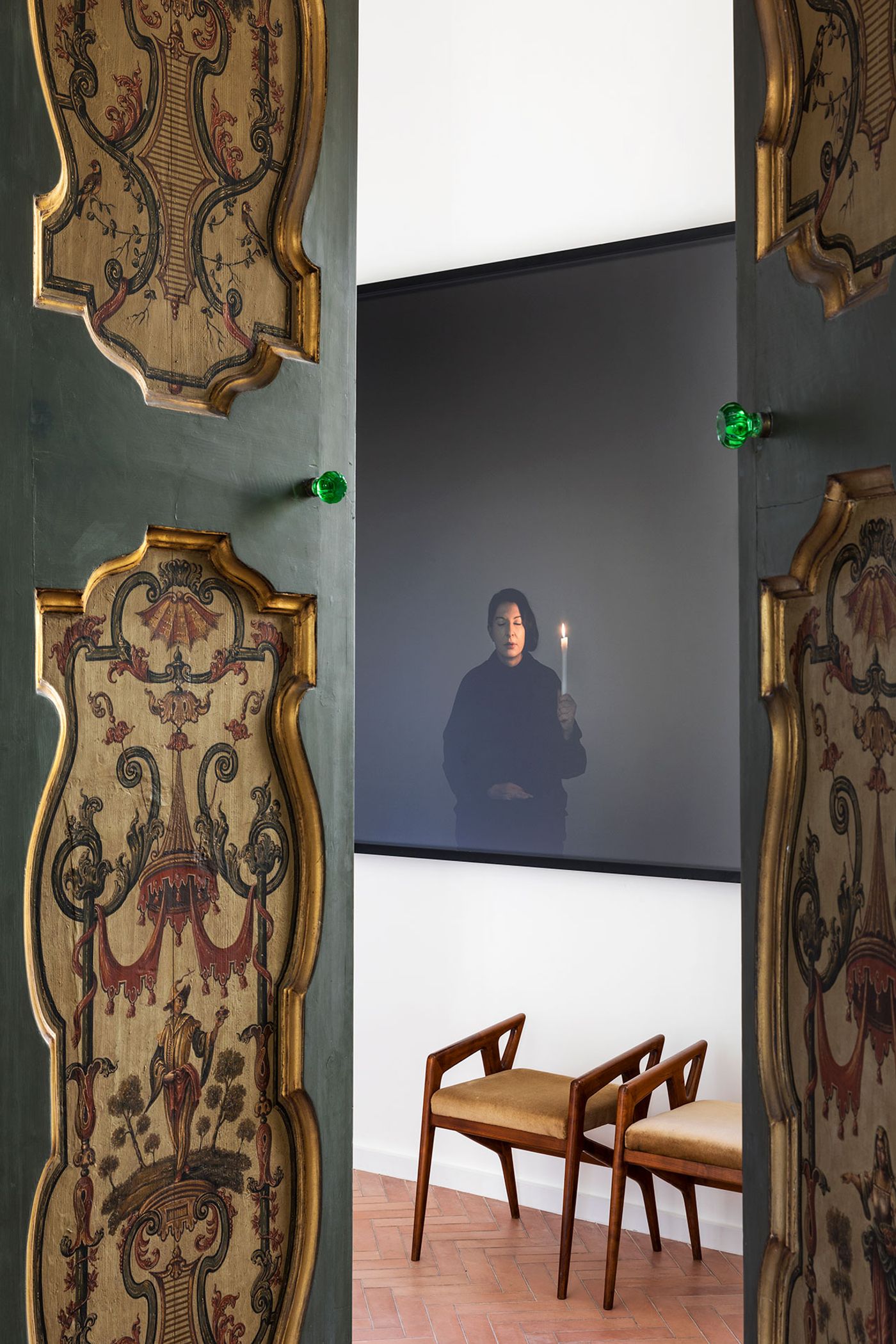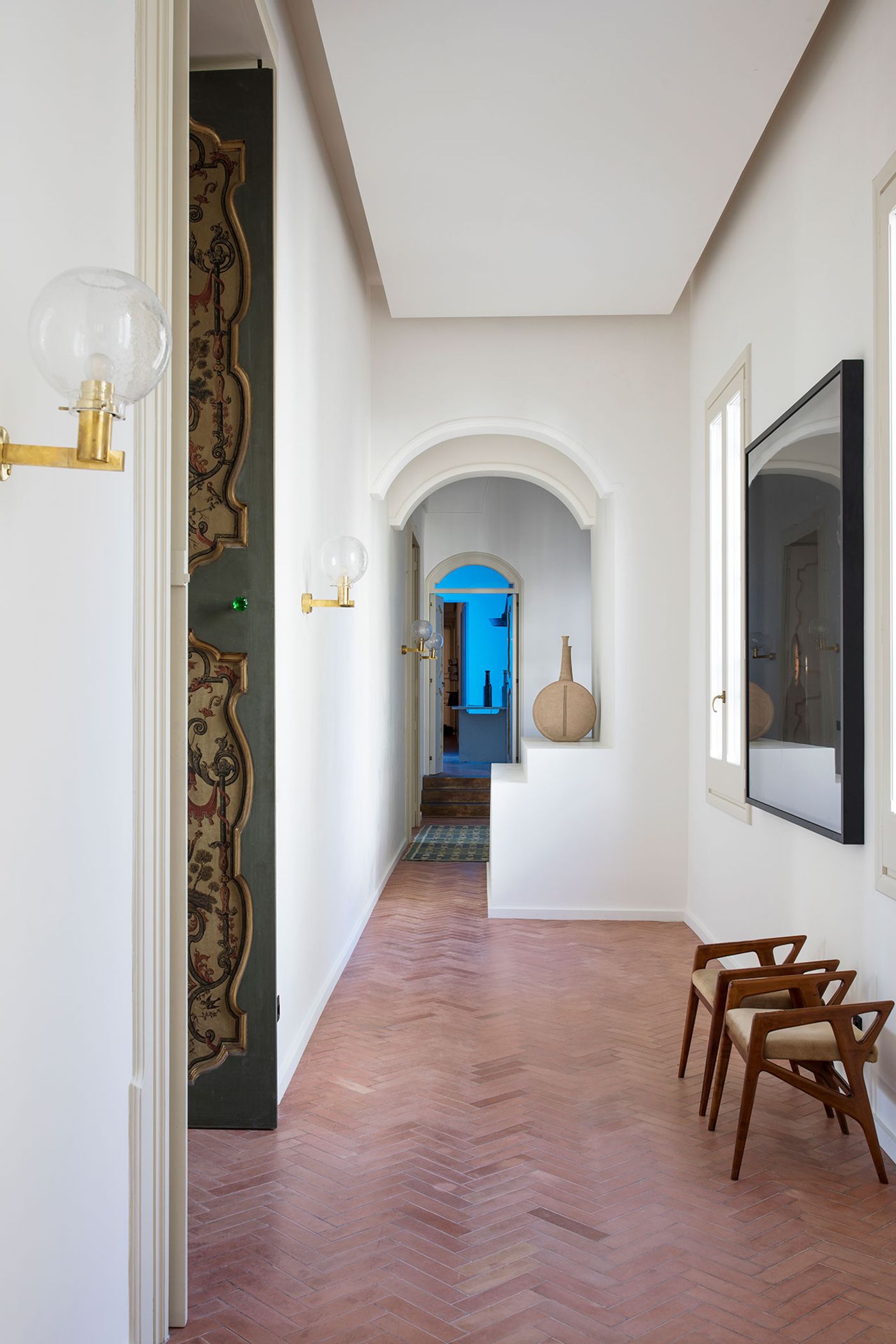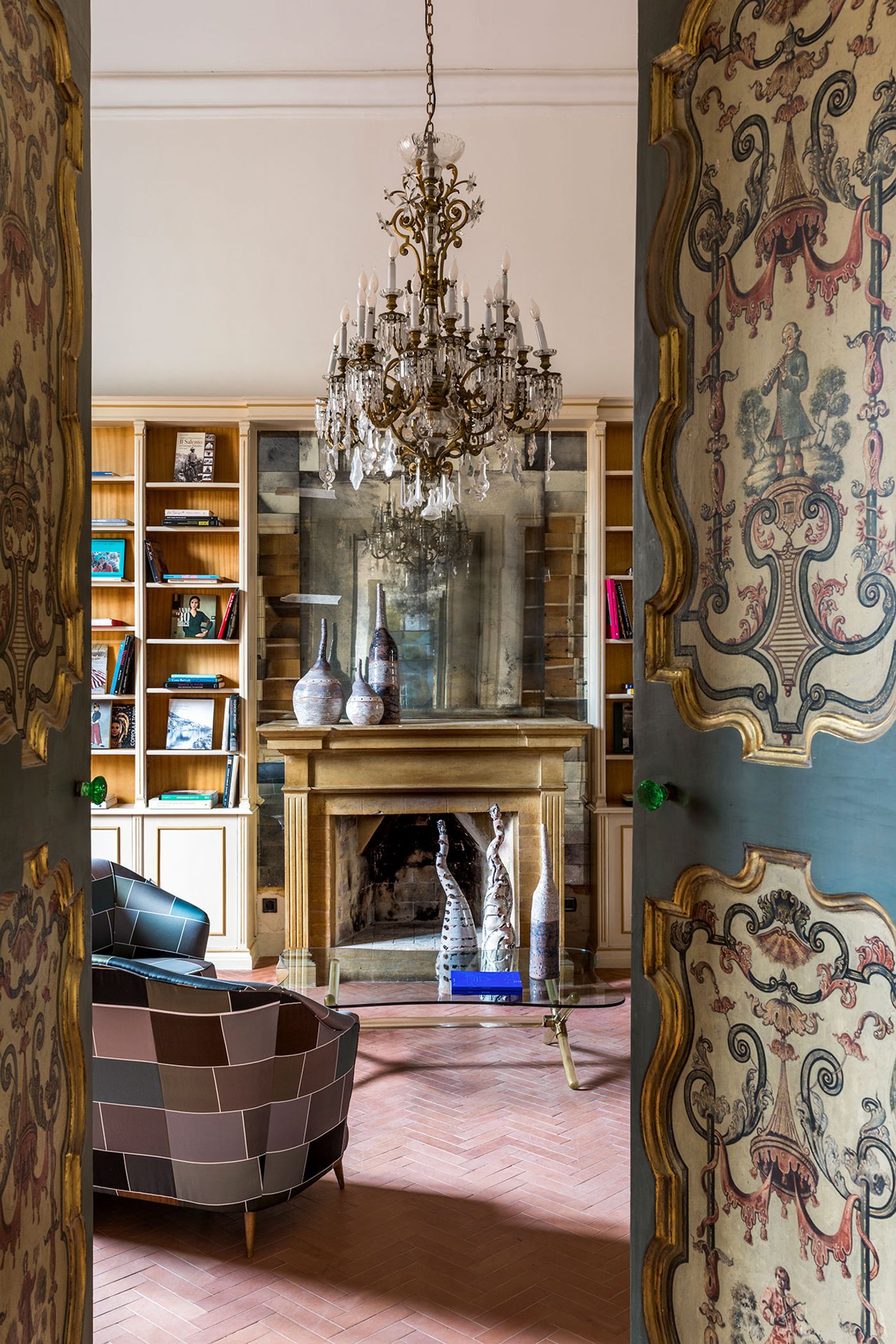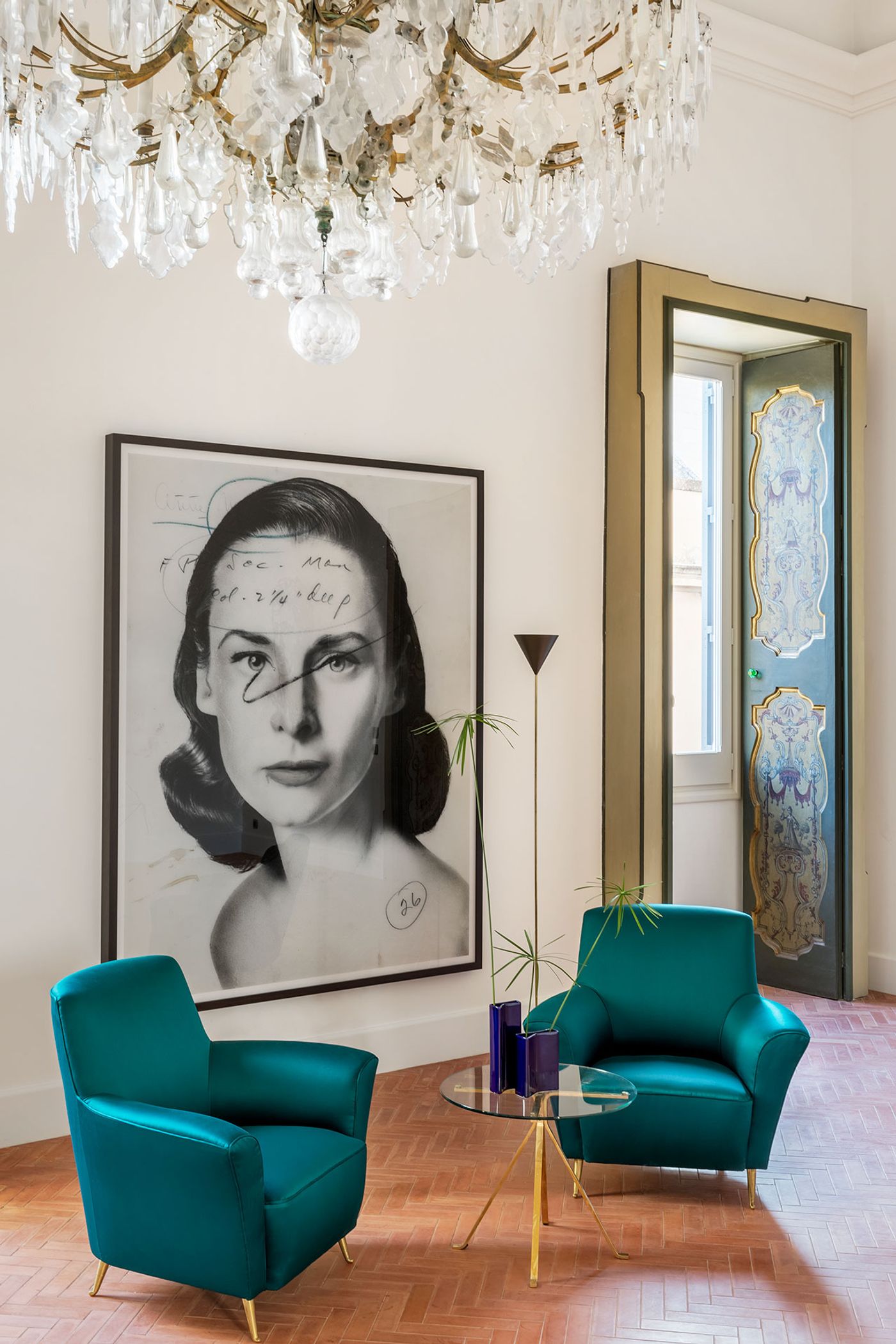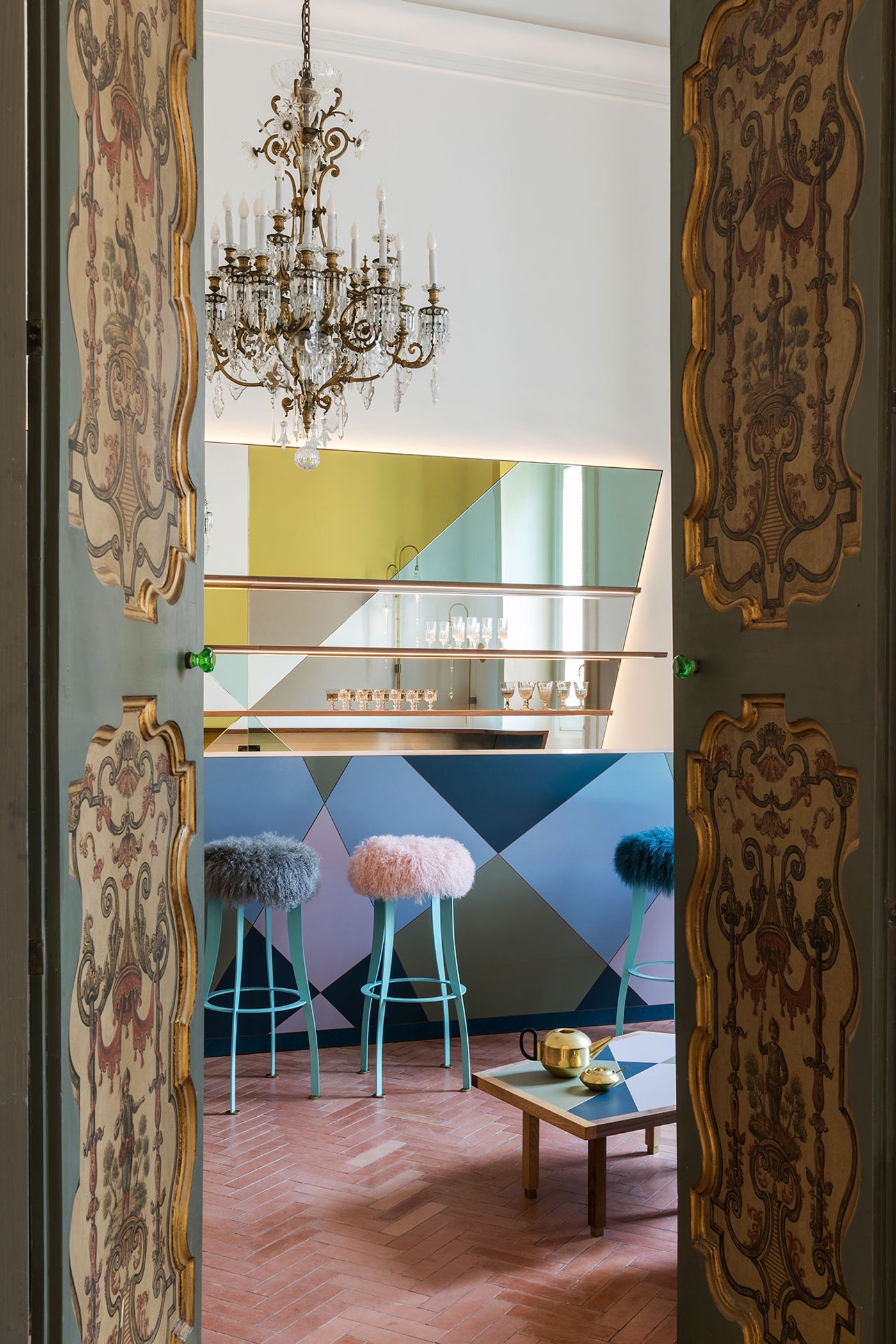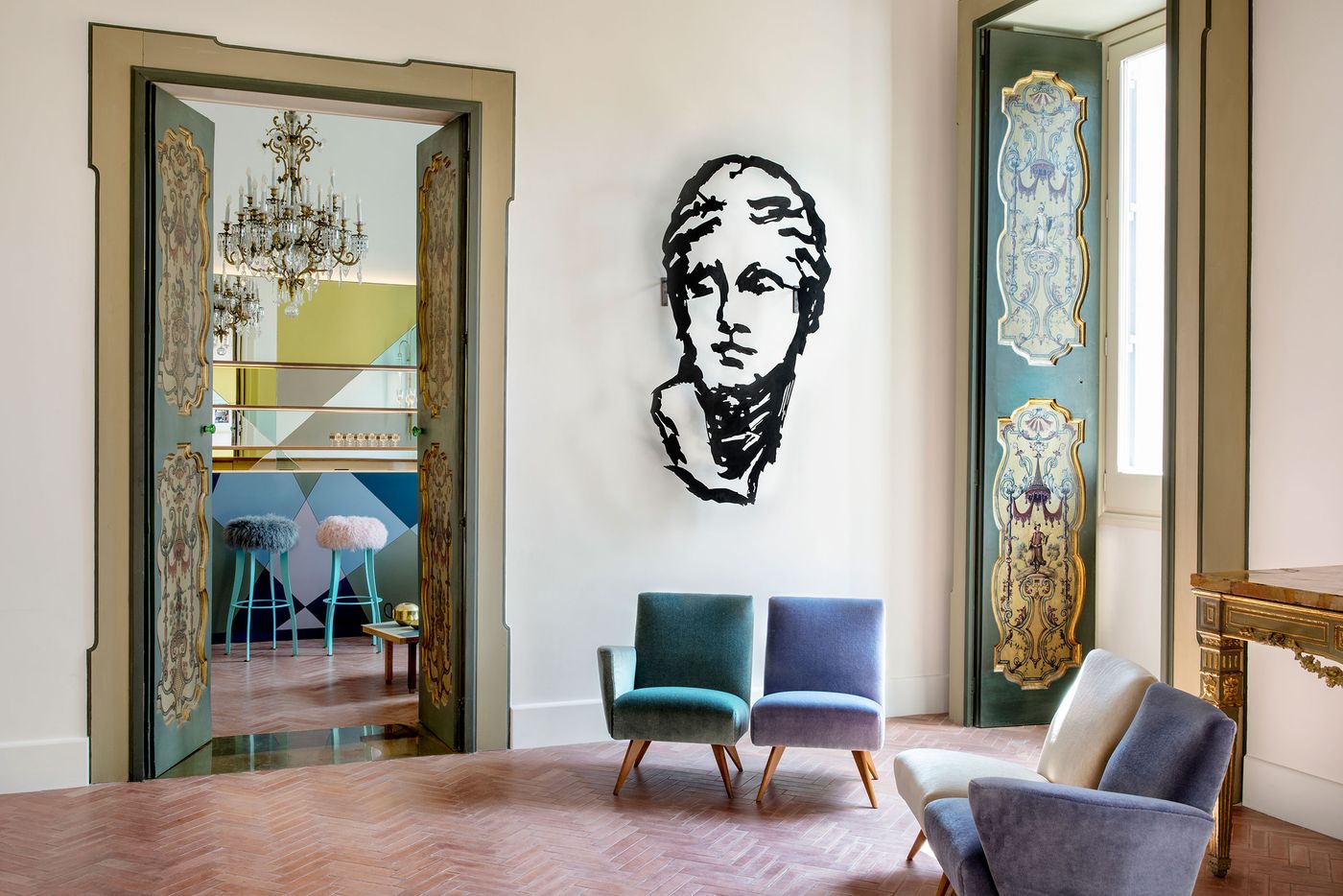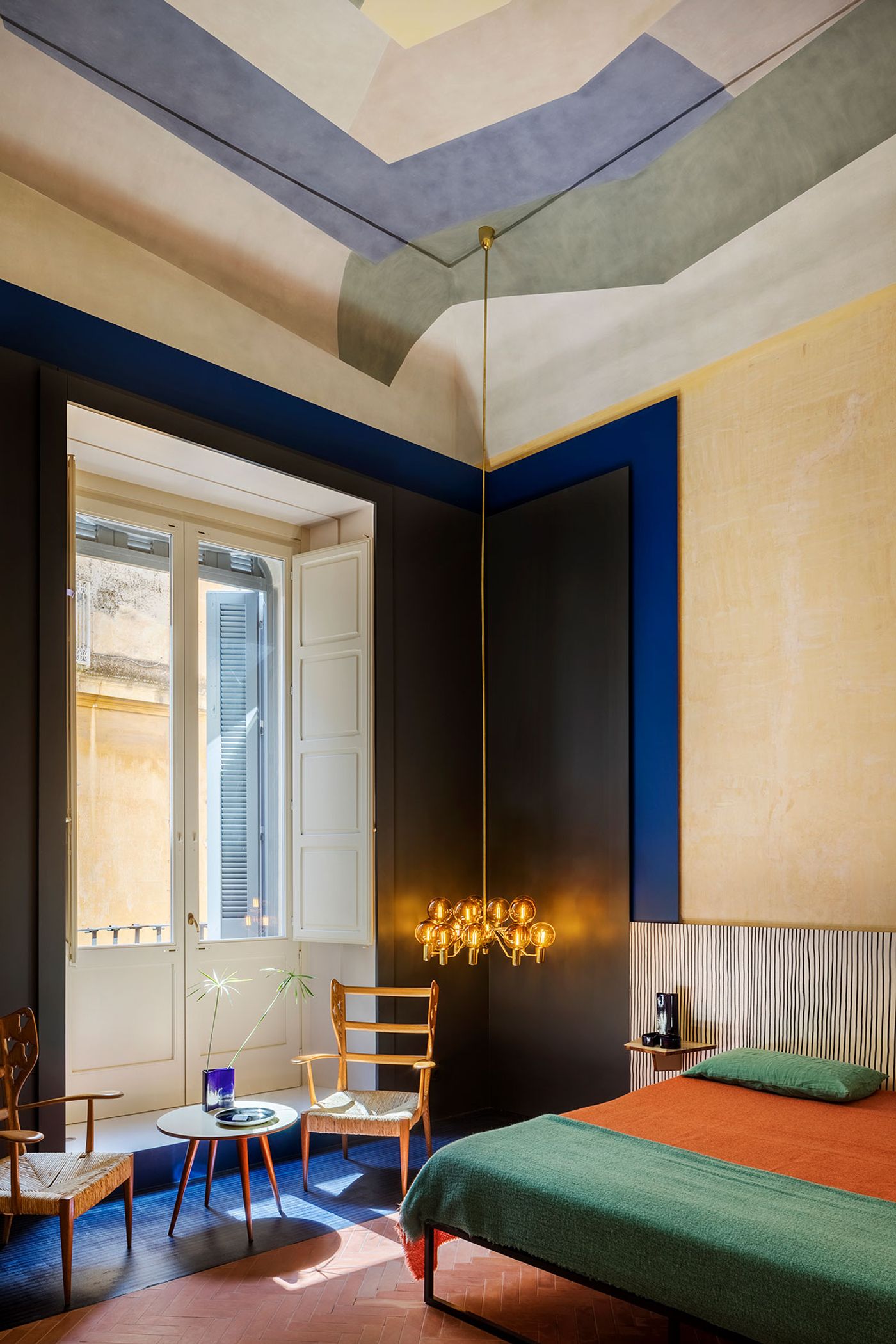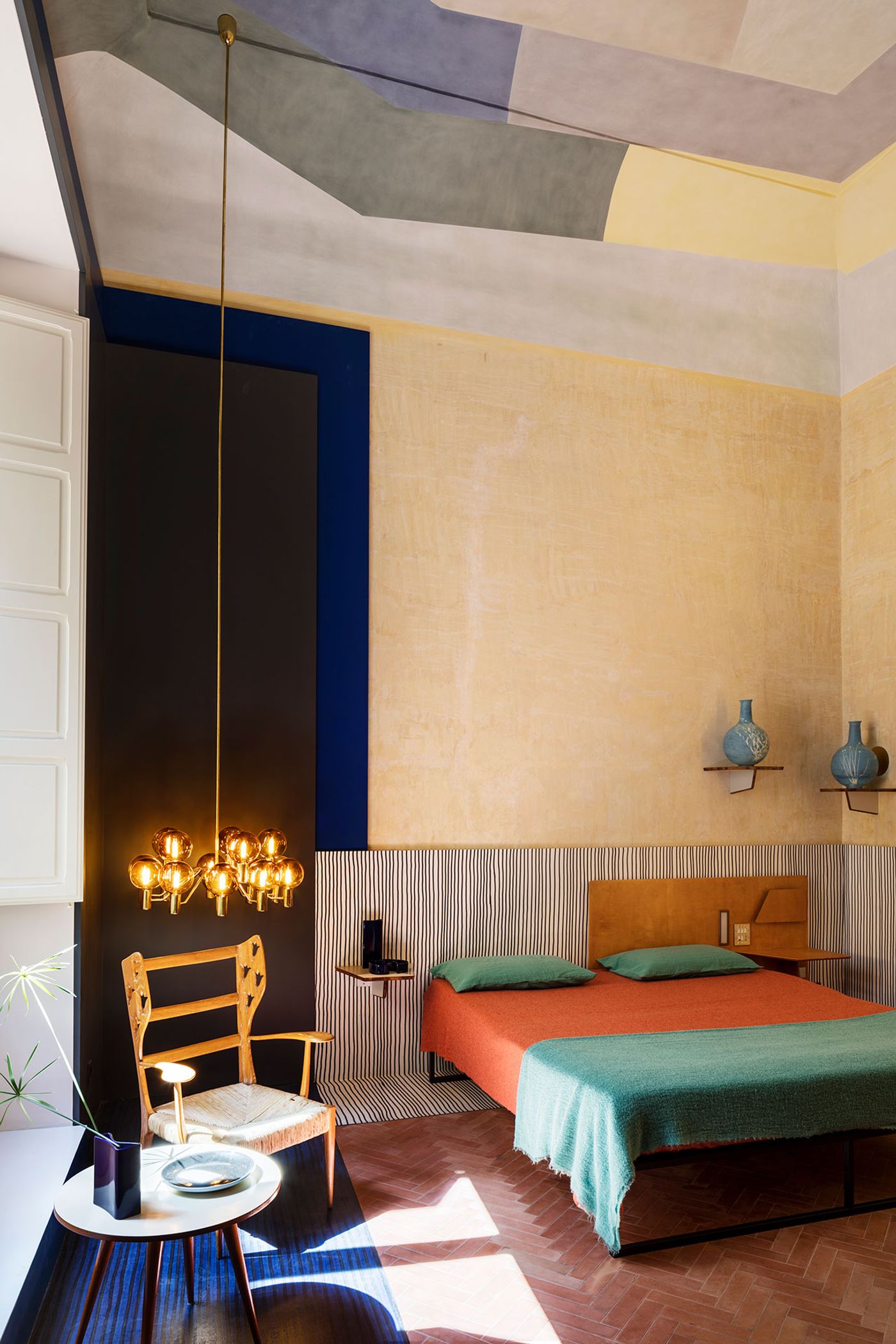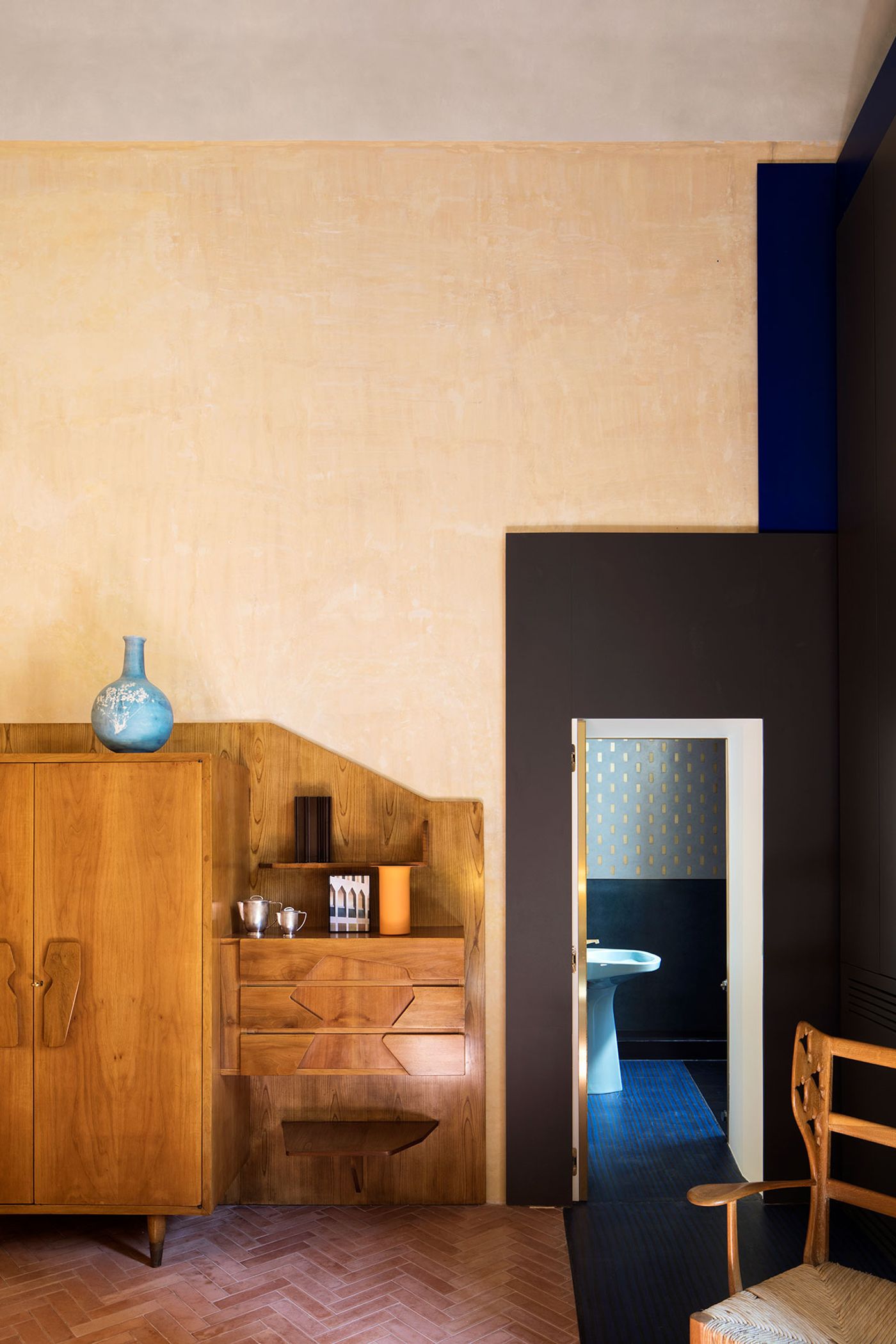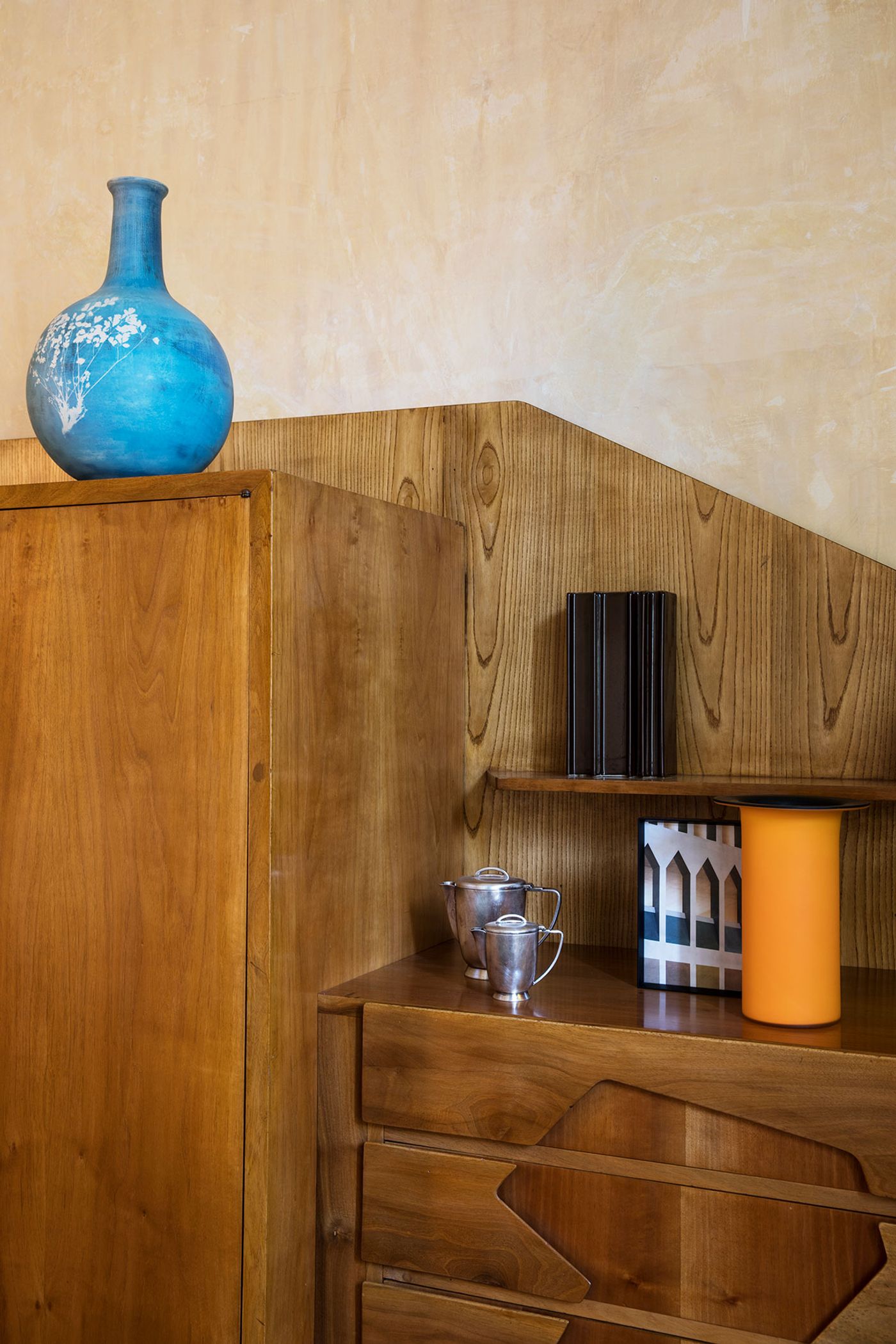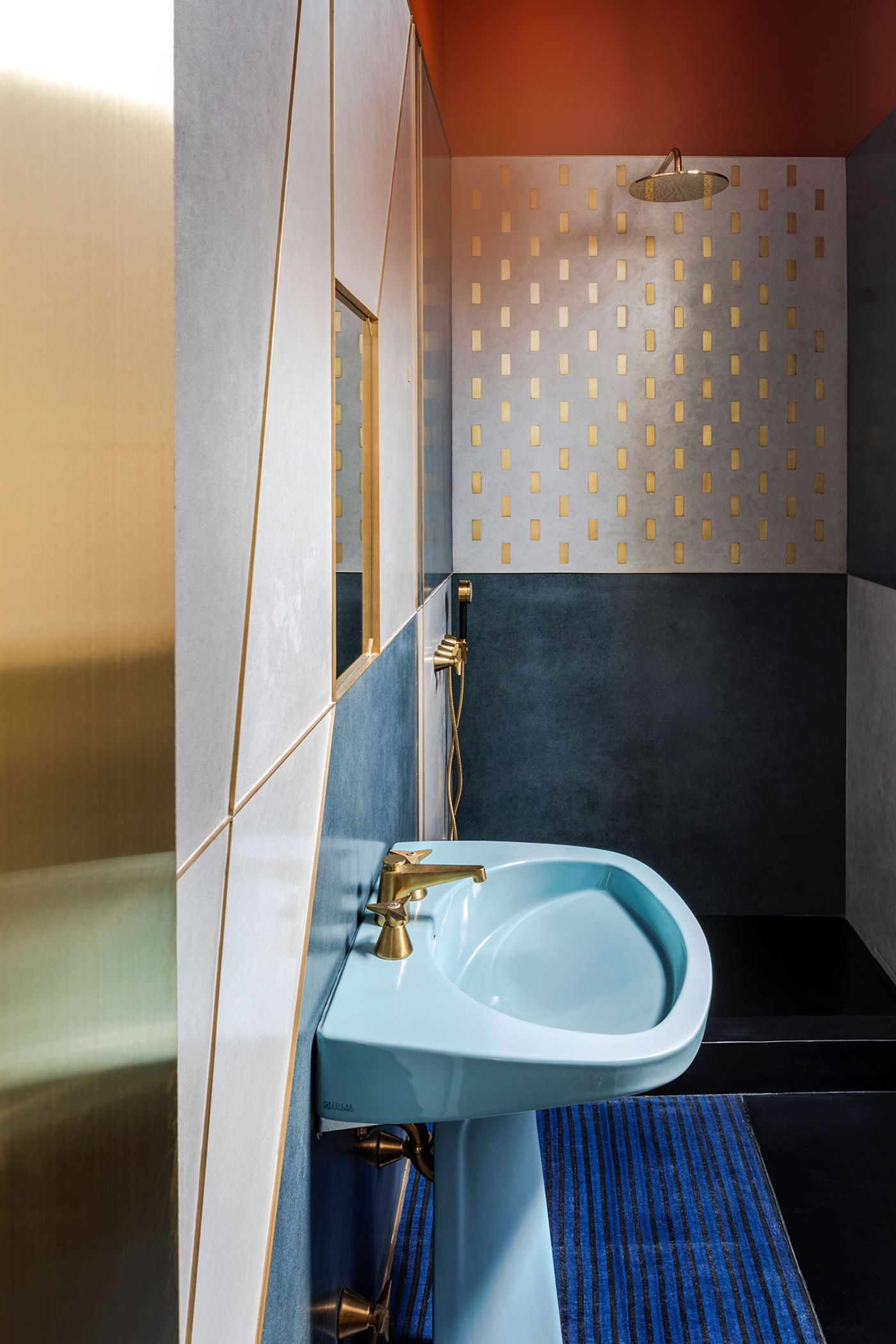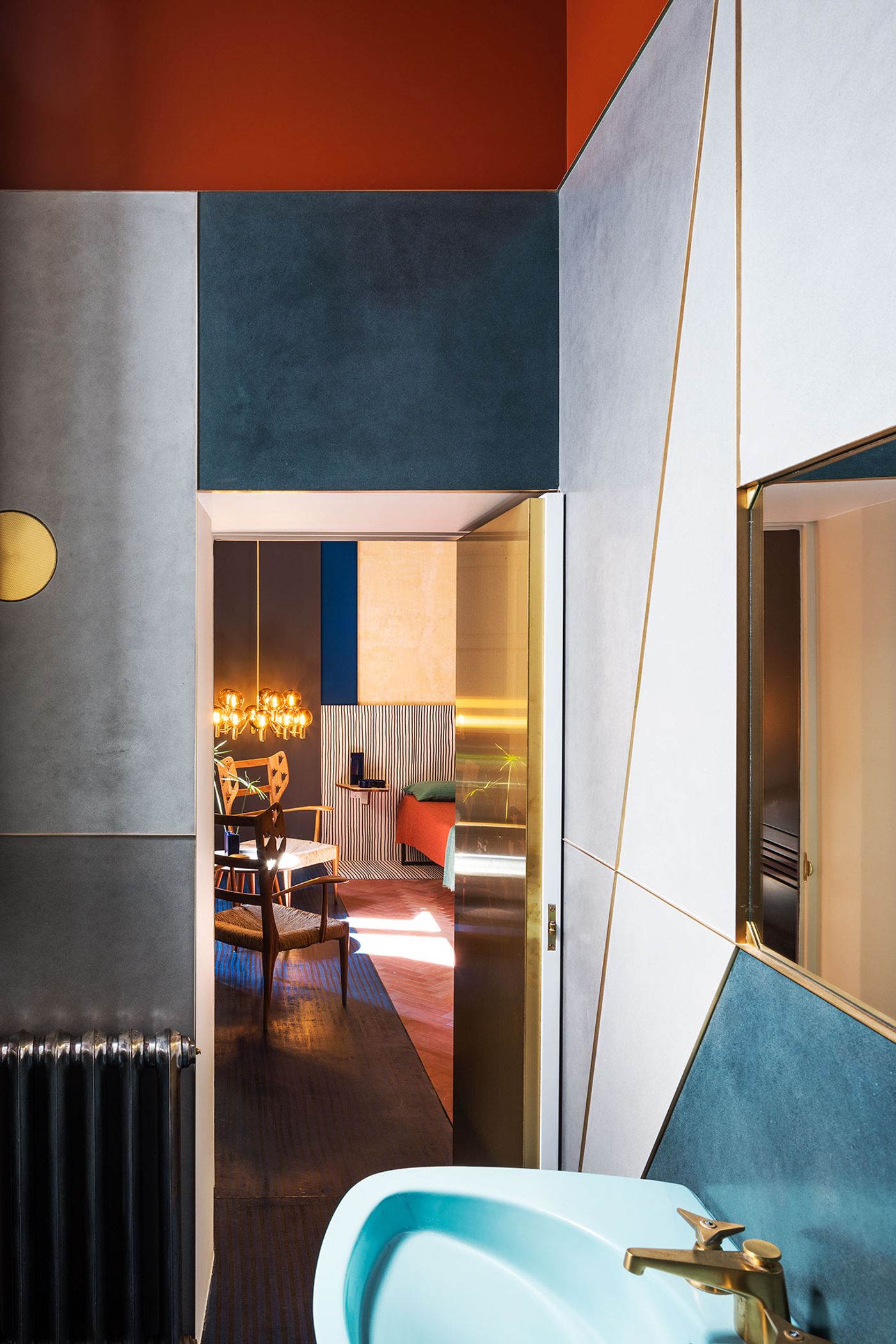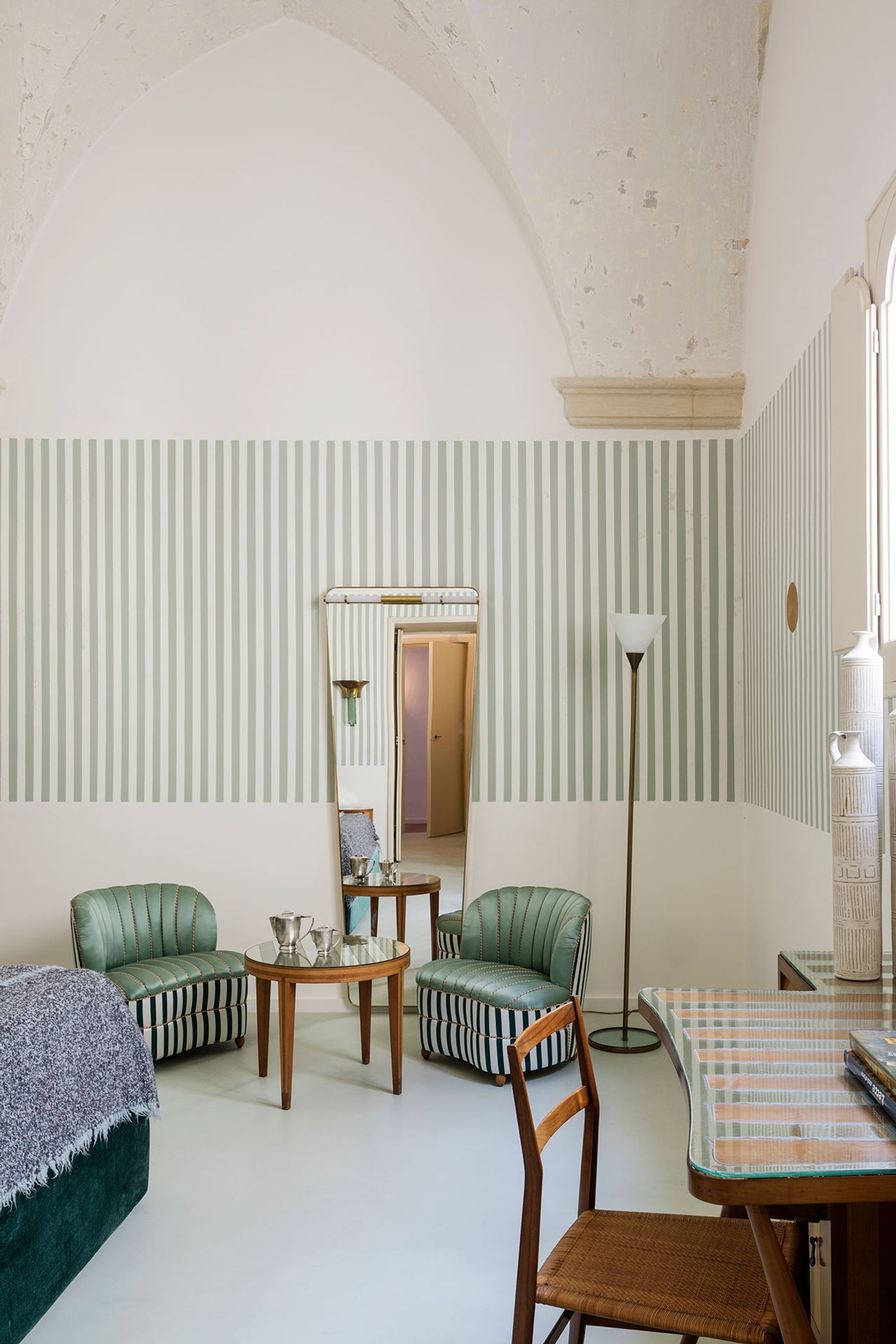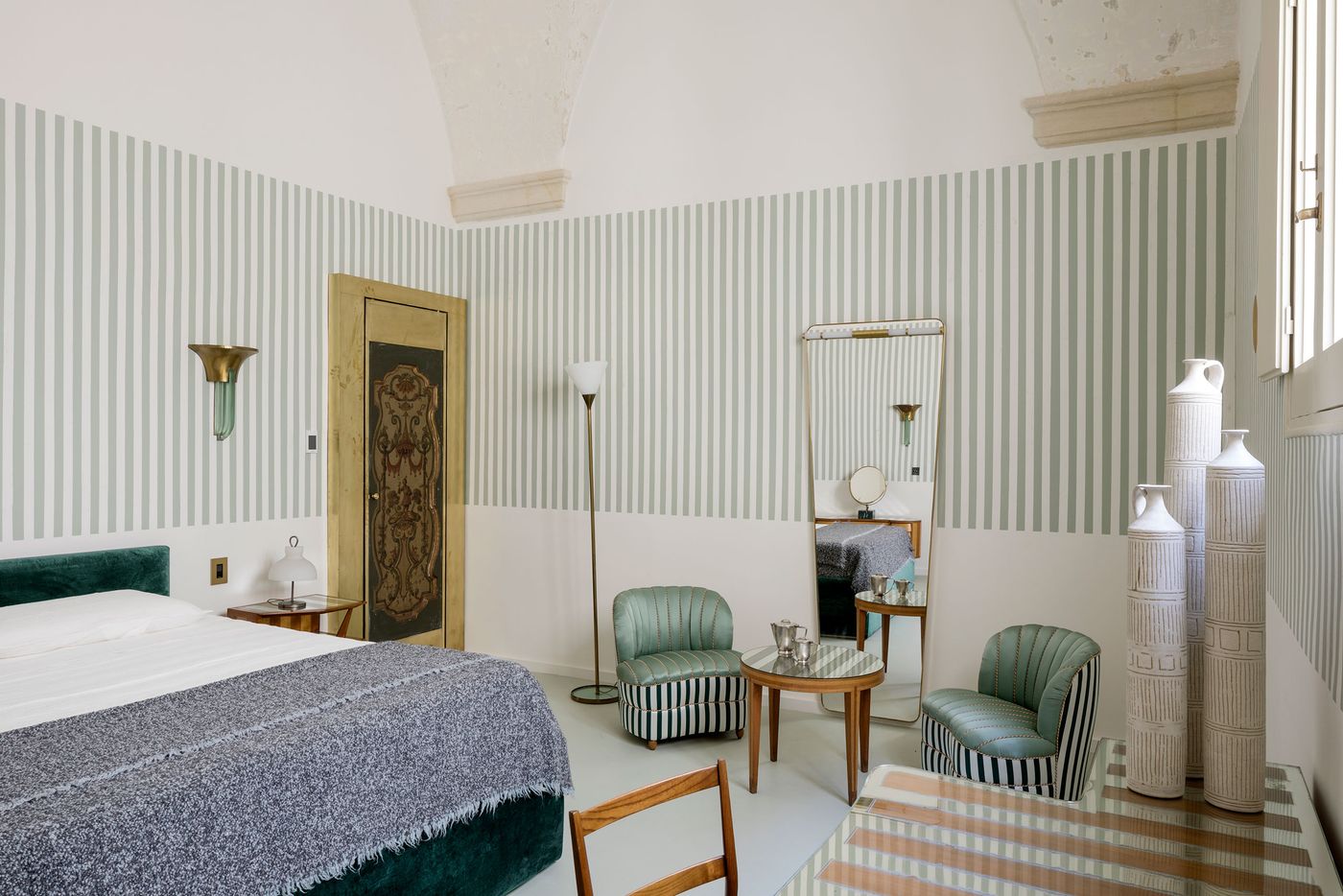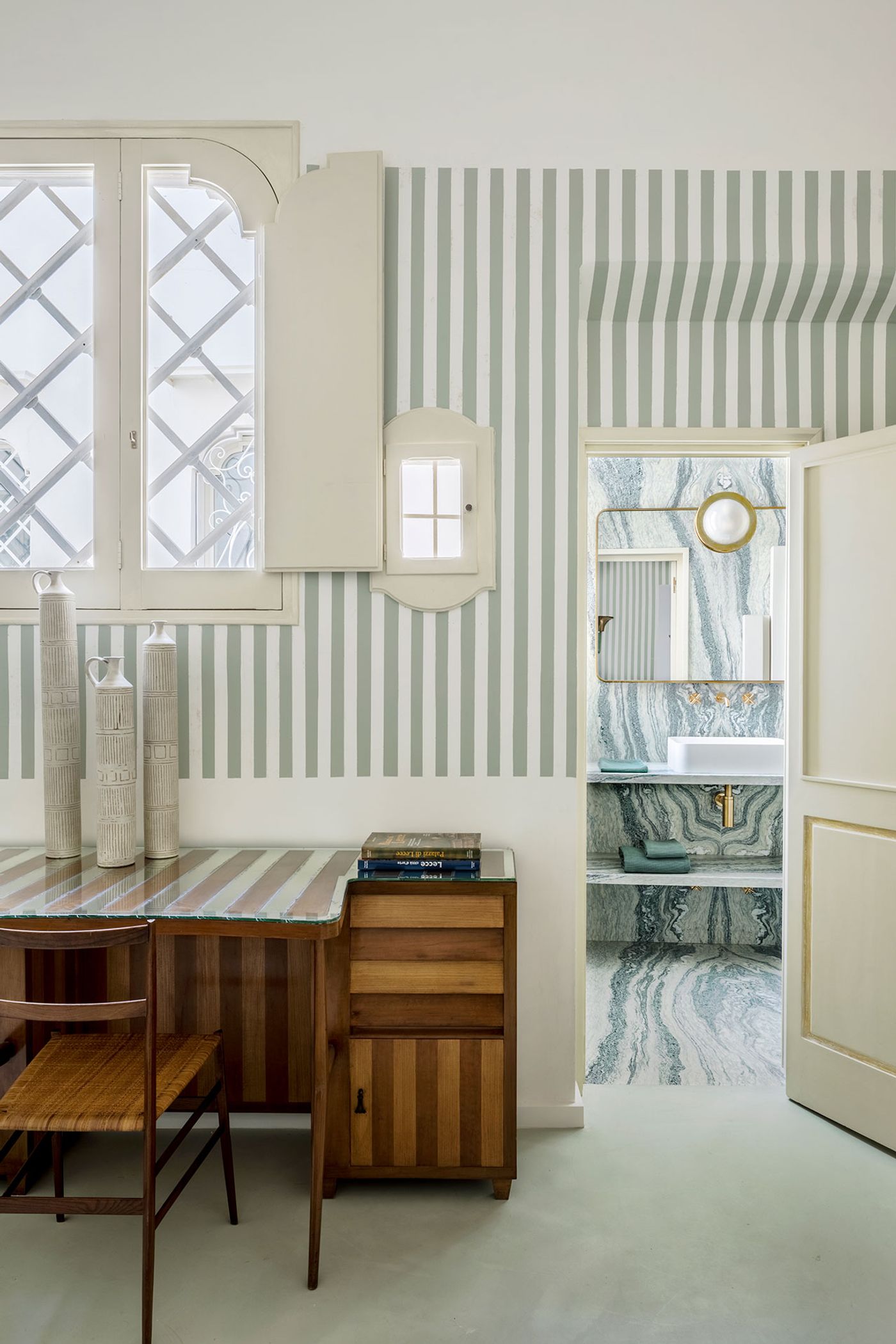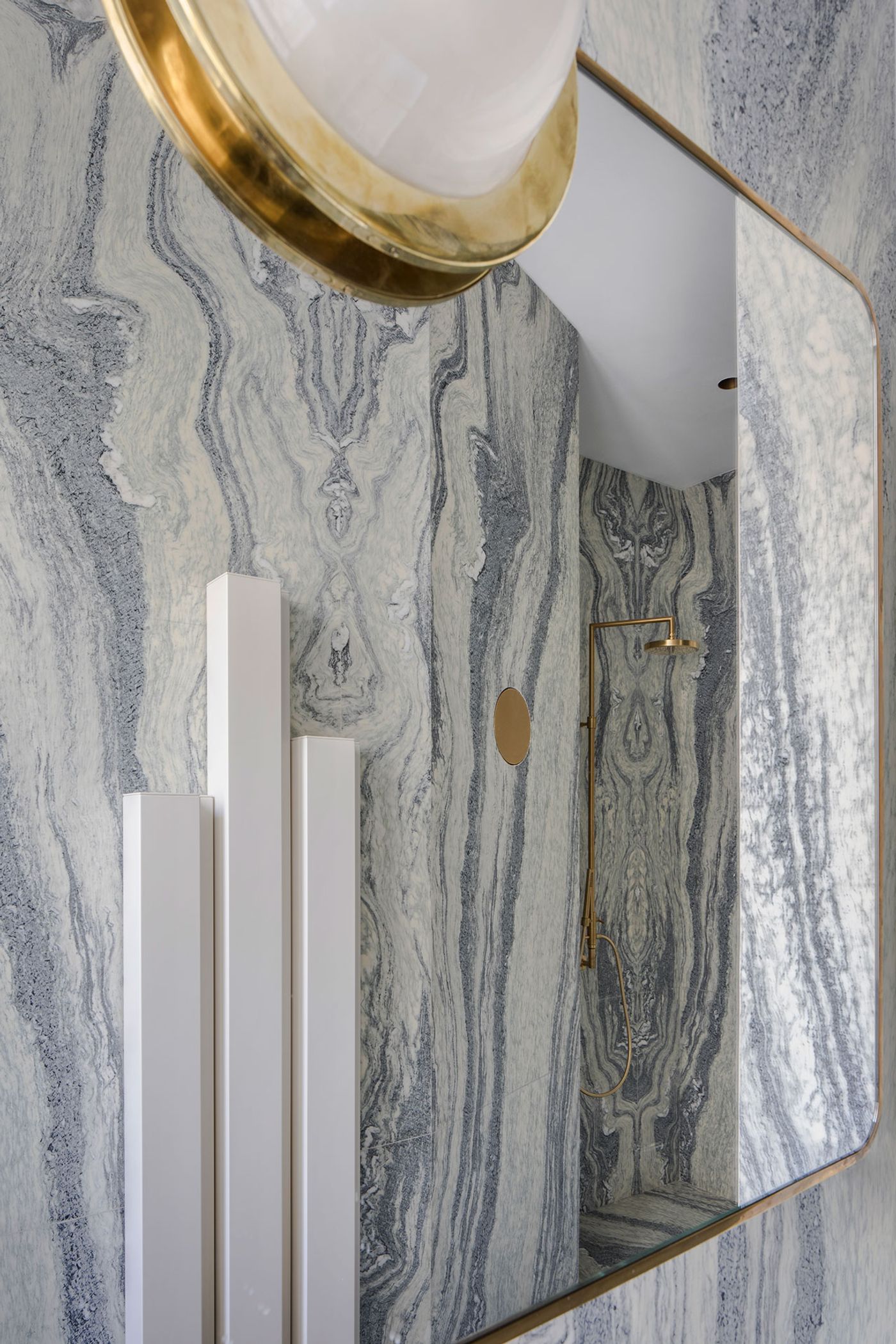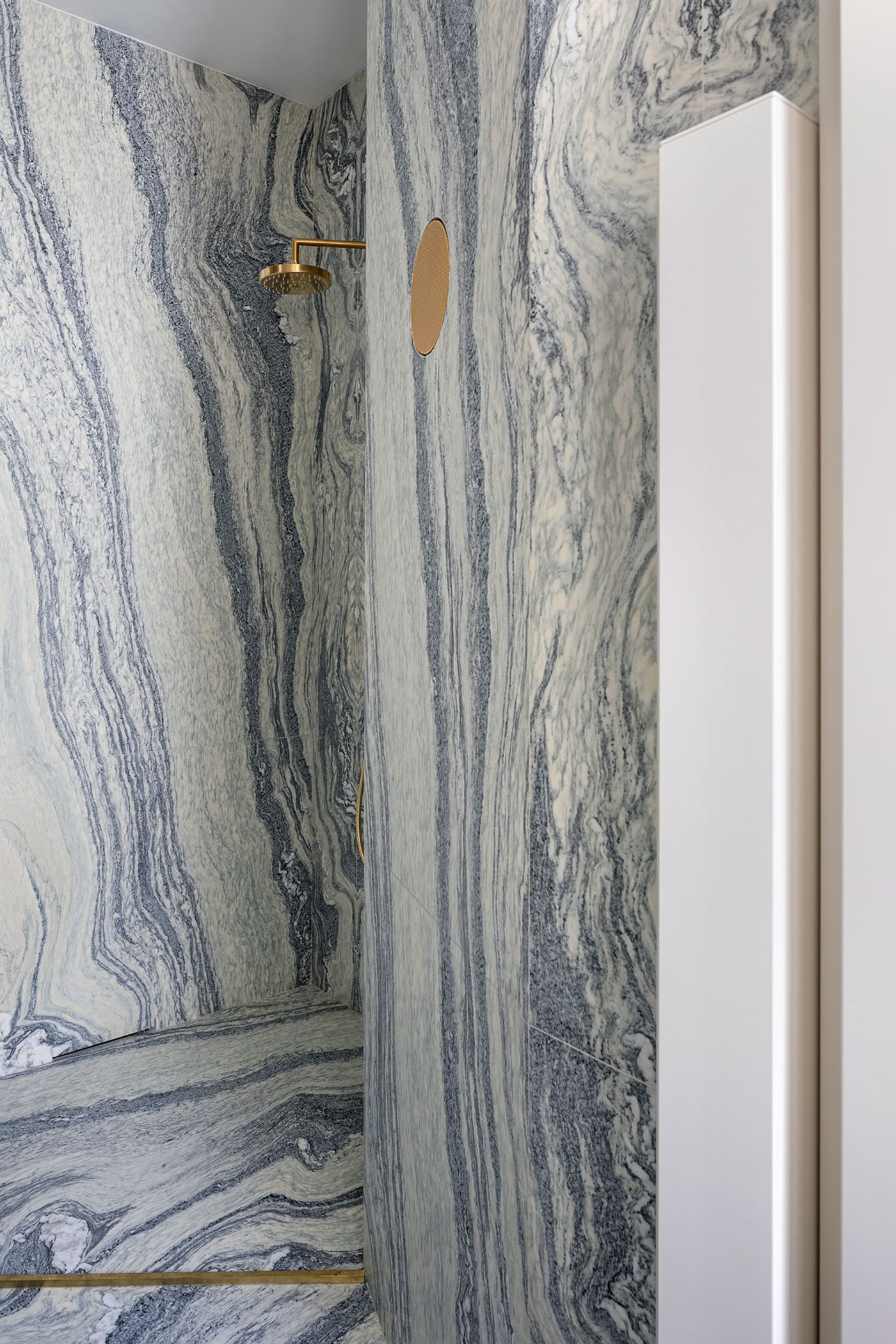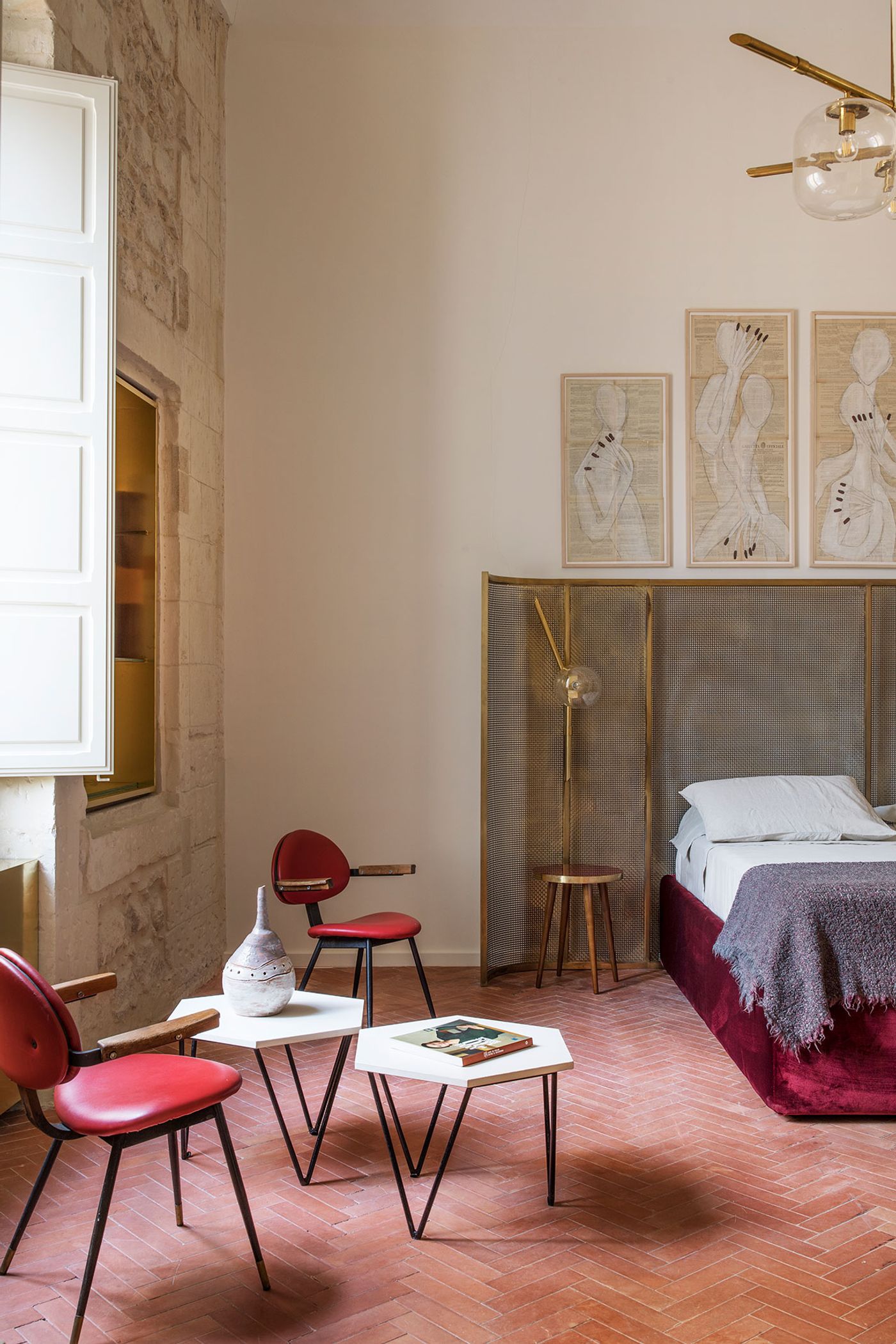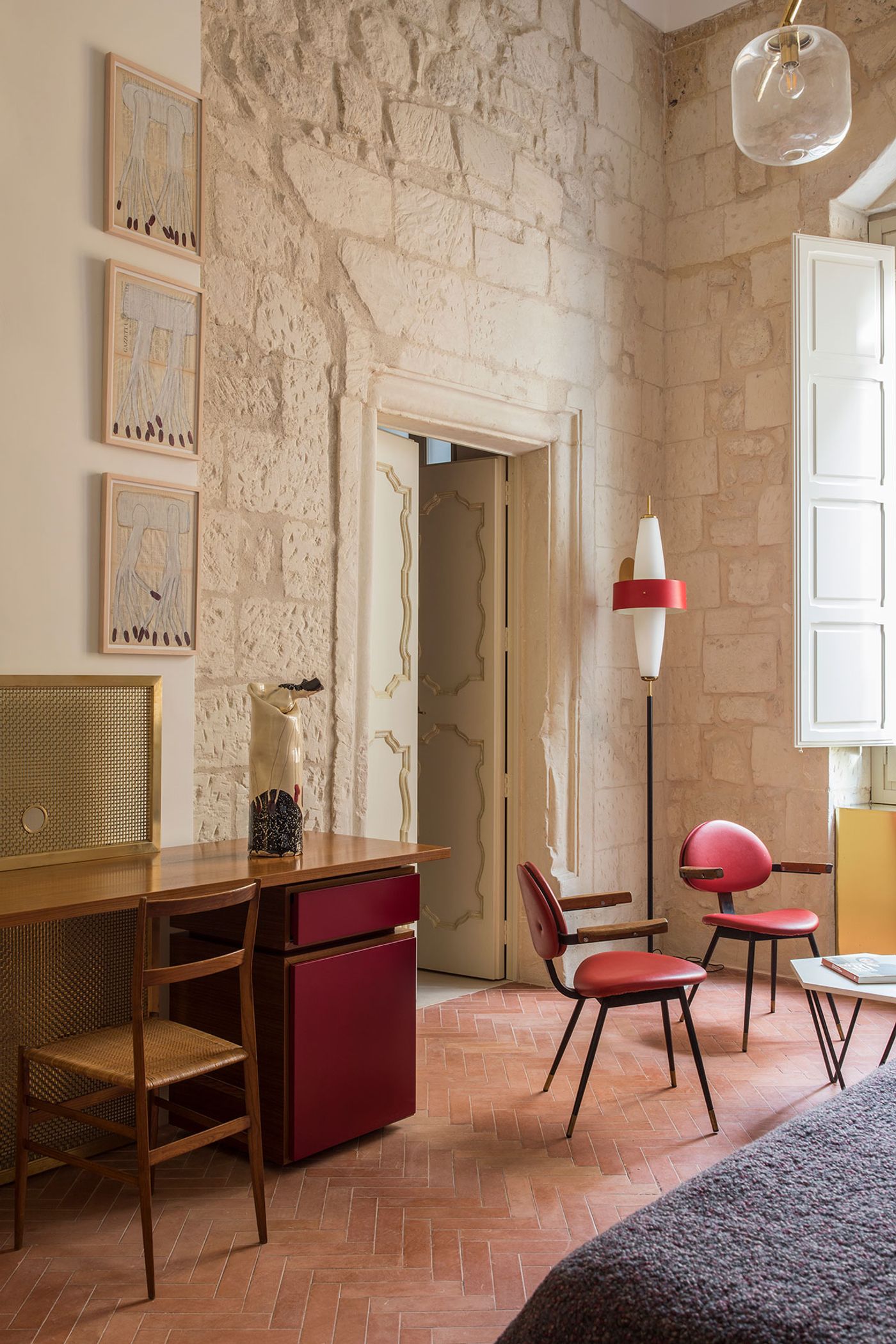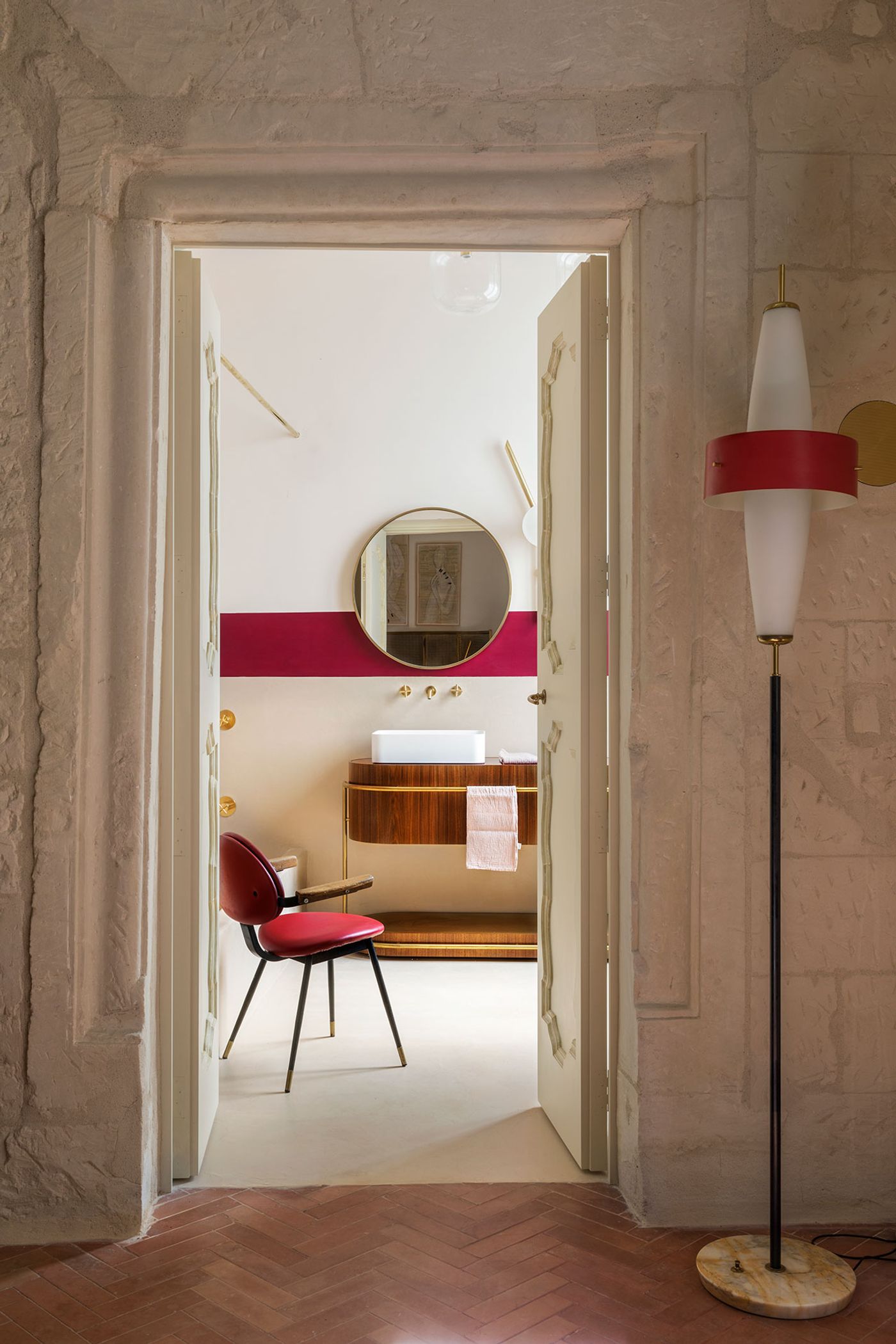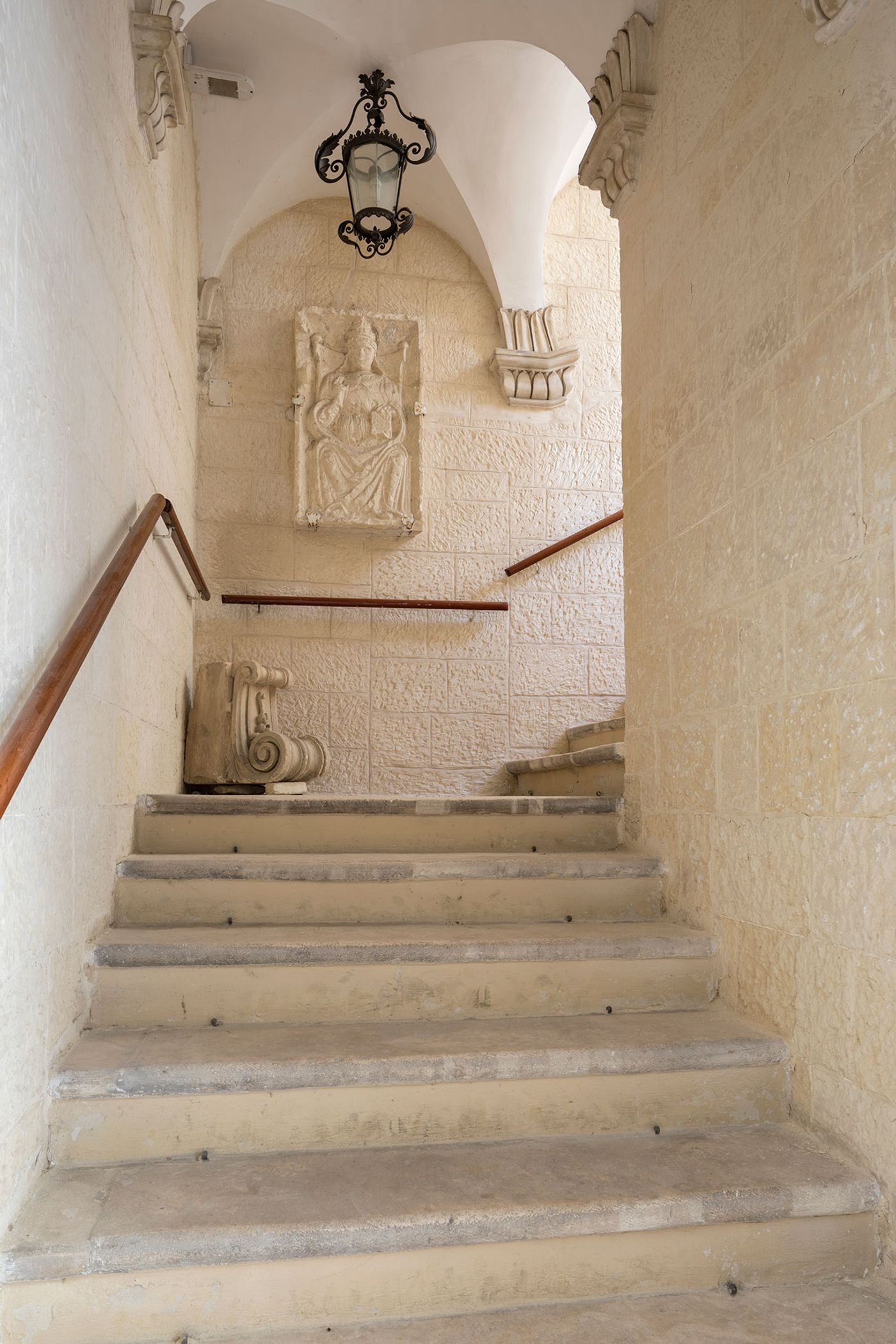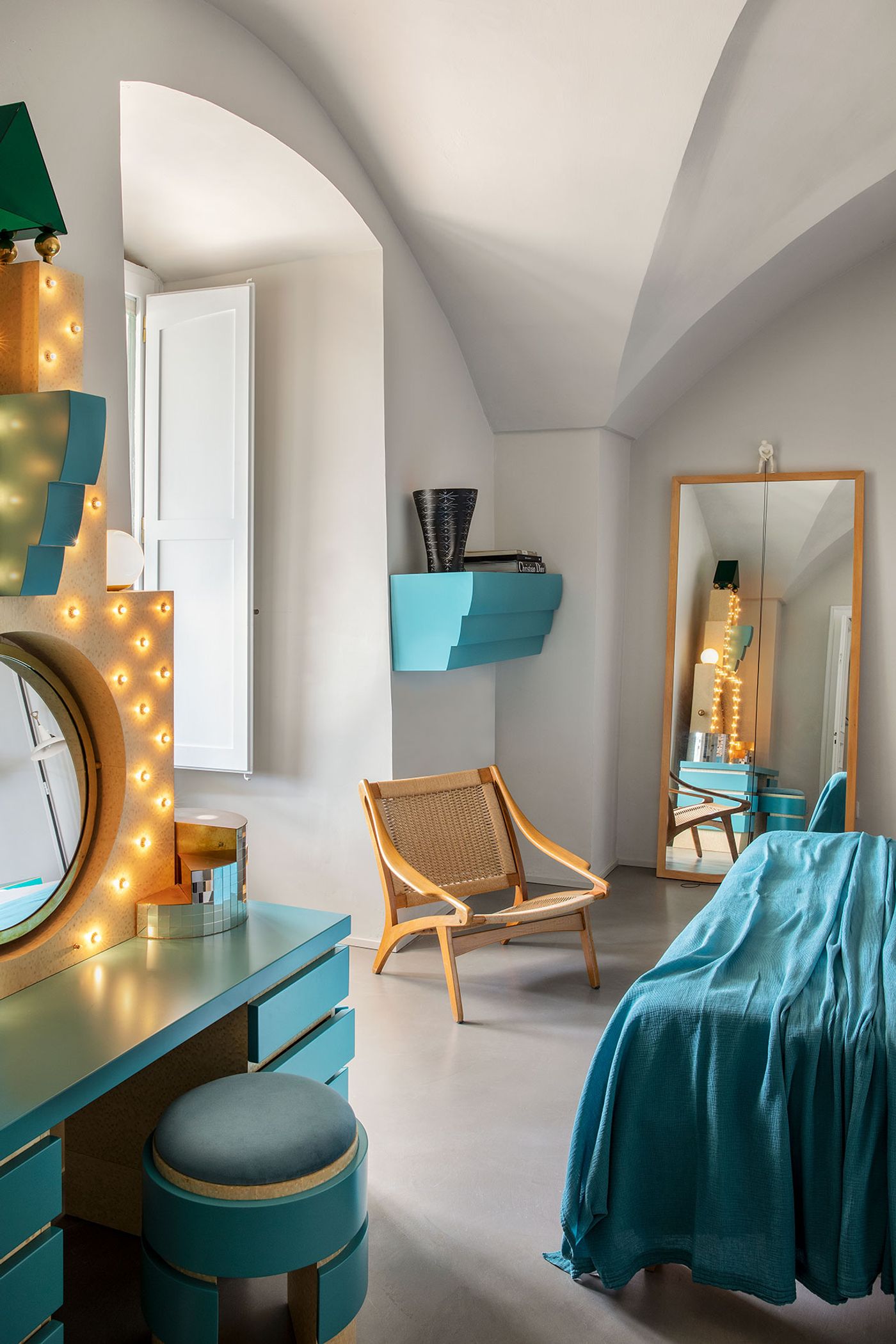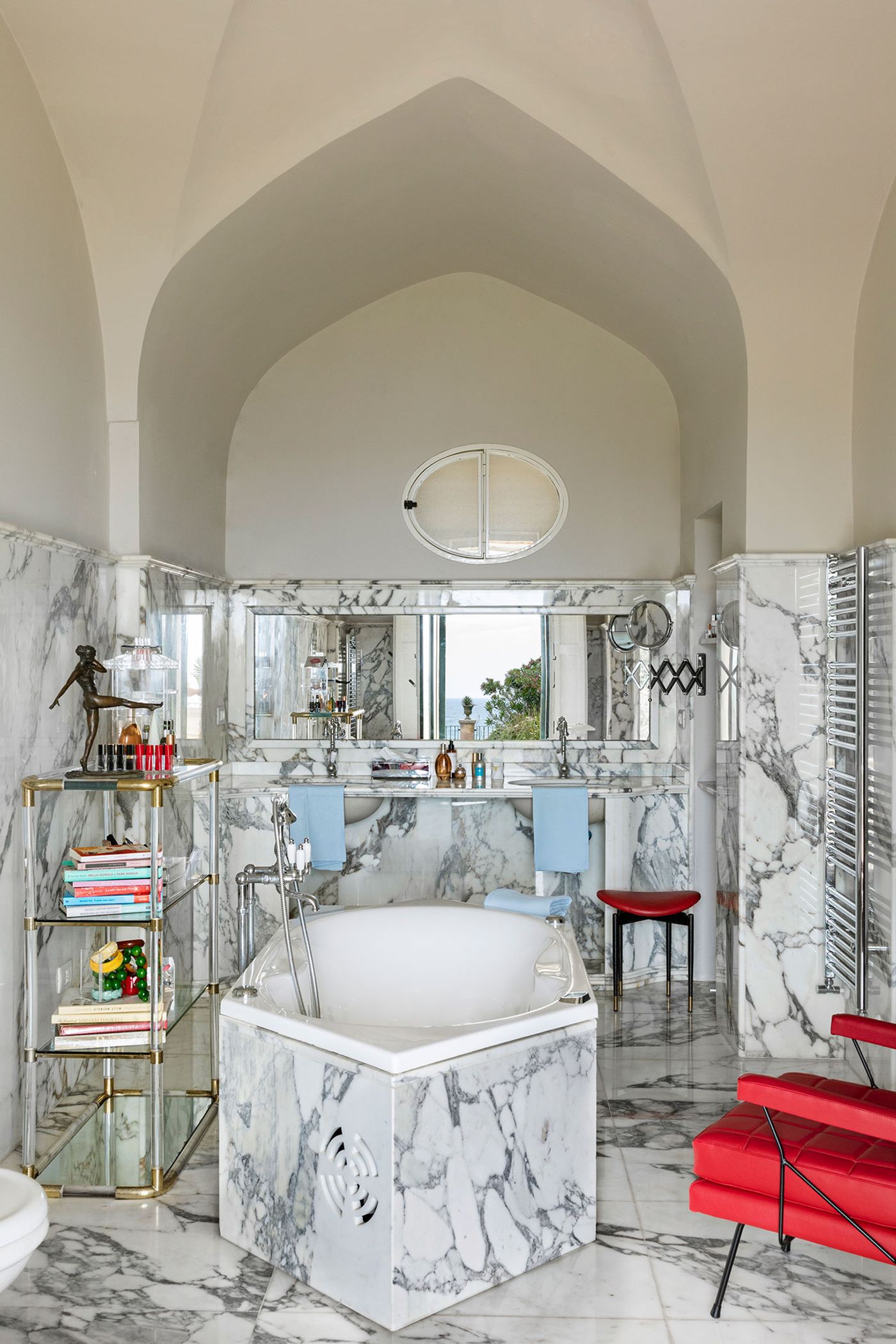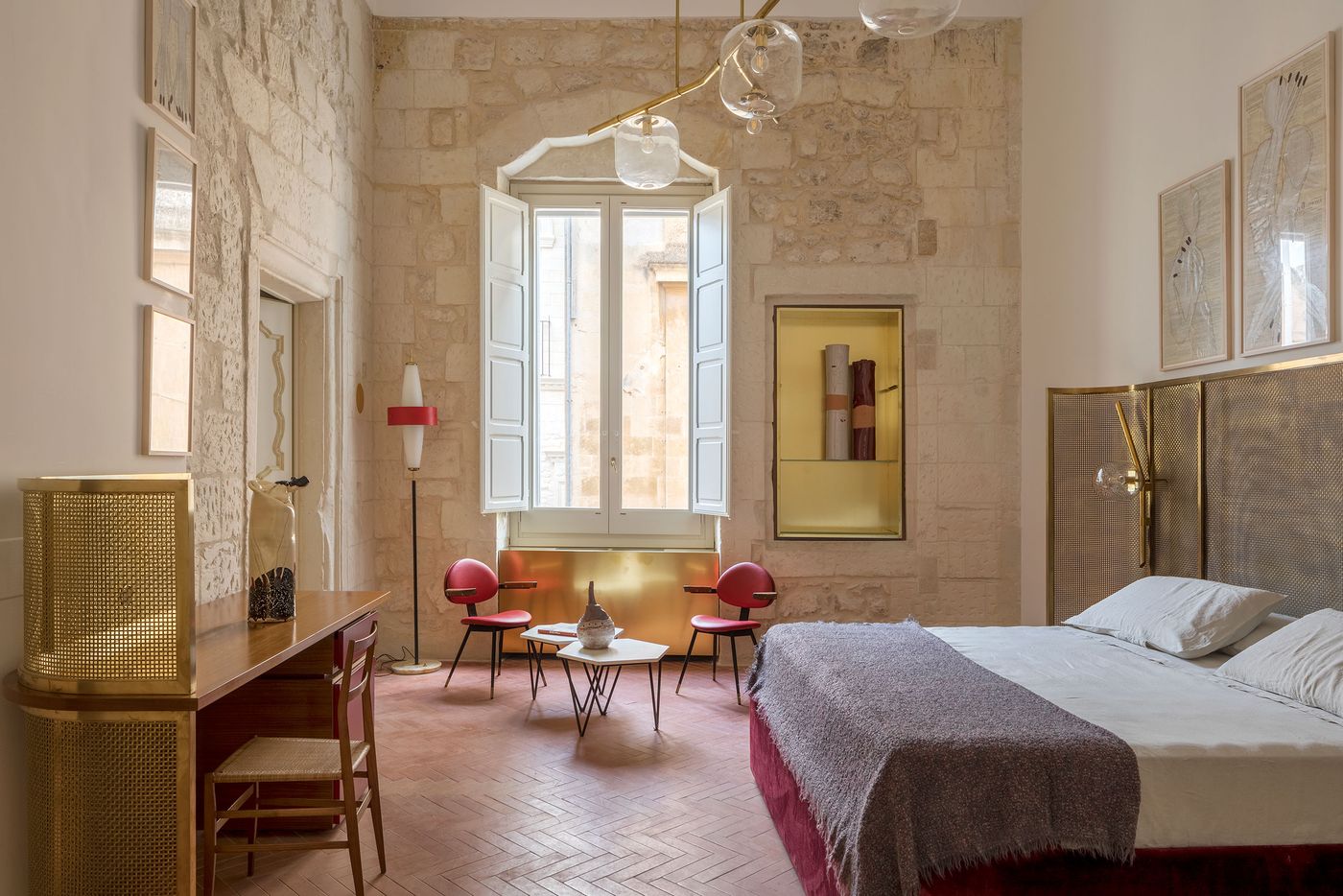
A Historic Palazzo in Lecce is Reimagined as an Art & Design-Led Boutique Hotel
Words by Yatzer
Location
Lecce, Italy
A Historic Palazzo in Lecce is Reimagined as an Art & Design-Led Boutique Hotel
Words by Yatzer
Lecce, Italy
Lecce, Italy
Location
The Puglian town of Lecce, a gritty, nostalgia-steeped baroque fantasia feels worlds apart from the design-conscious sophistication of Milan, and yet those two worlds somehow came together in Palazzo Luce, a seven-suite boutique in Lecce’s historic centre. A bona fide passion project, the hotel is the brainchild of Milanese collector Anna Maria Enselmi whose collection of 20th century Italian design and contemporary art lies at the heart of the 14th century palazzo. Working with a roster of architects, designers, artists and gallerists, Enselmi has transformed the storied edifice, once the residence of Maria d’Enghien, countess of Lecce and Queen of Naples, into an Alice-in-Wonderland-like, art and design-filled residence inspired by the modernist legacy of Gio Ponti.
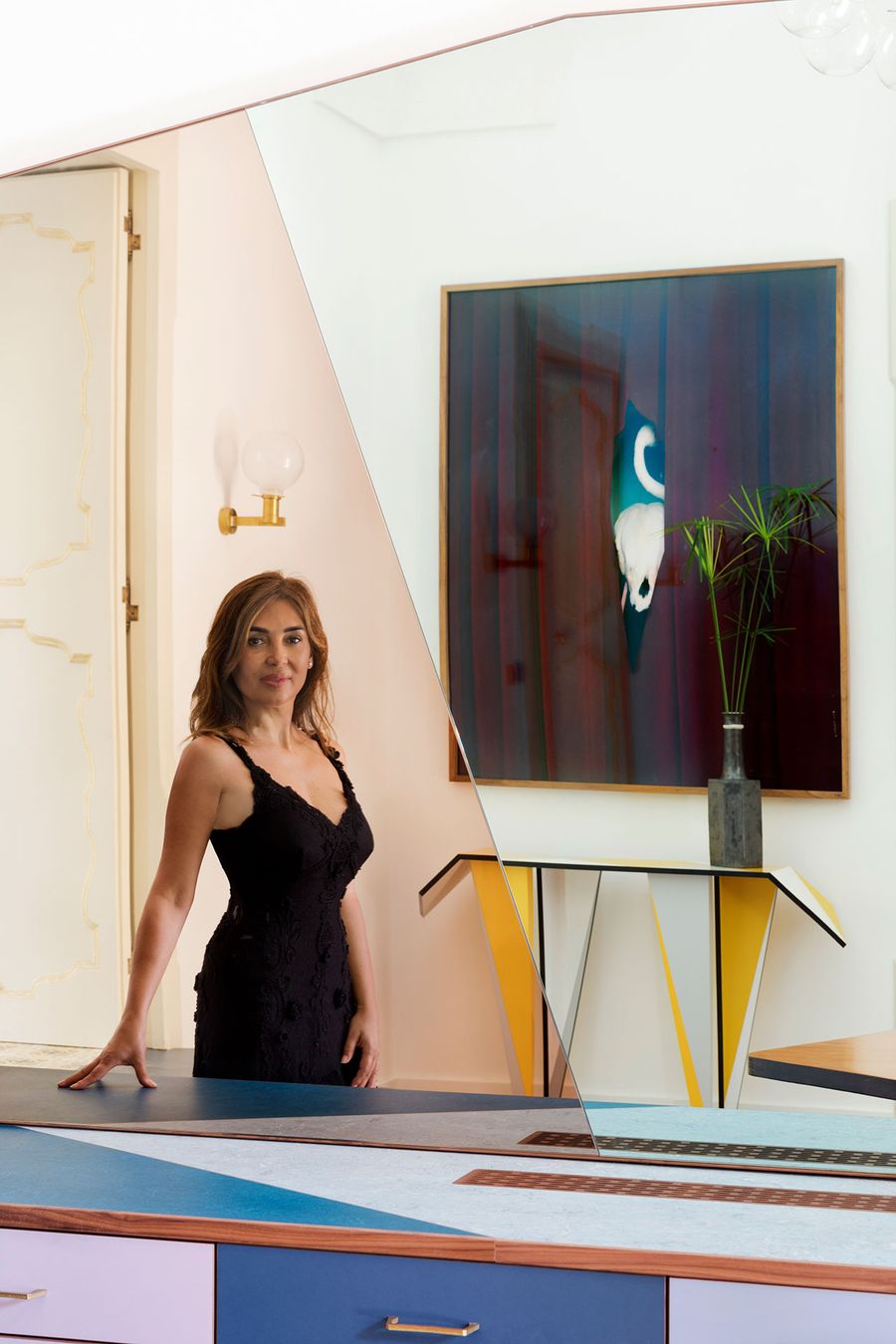
Collector Anna Maria Enselmi at Palazzo Luce. Photography by Helenio Barbetta.
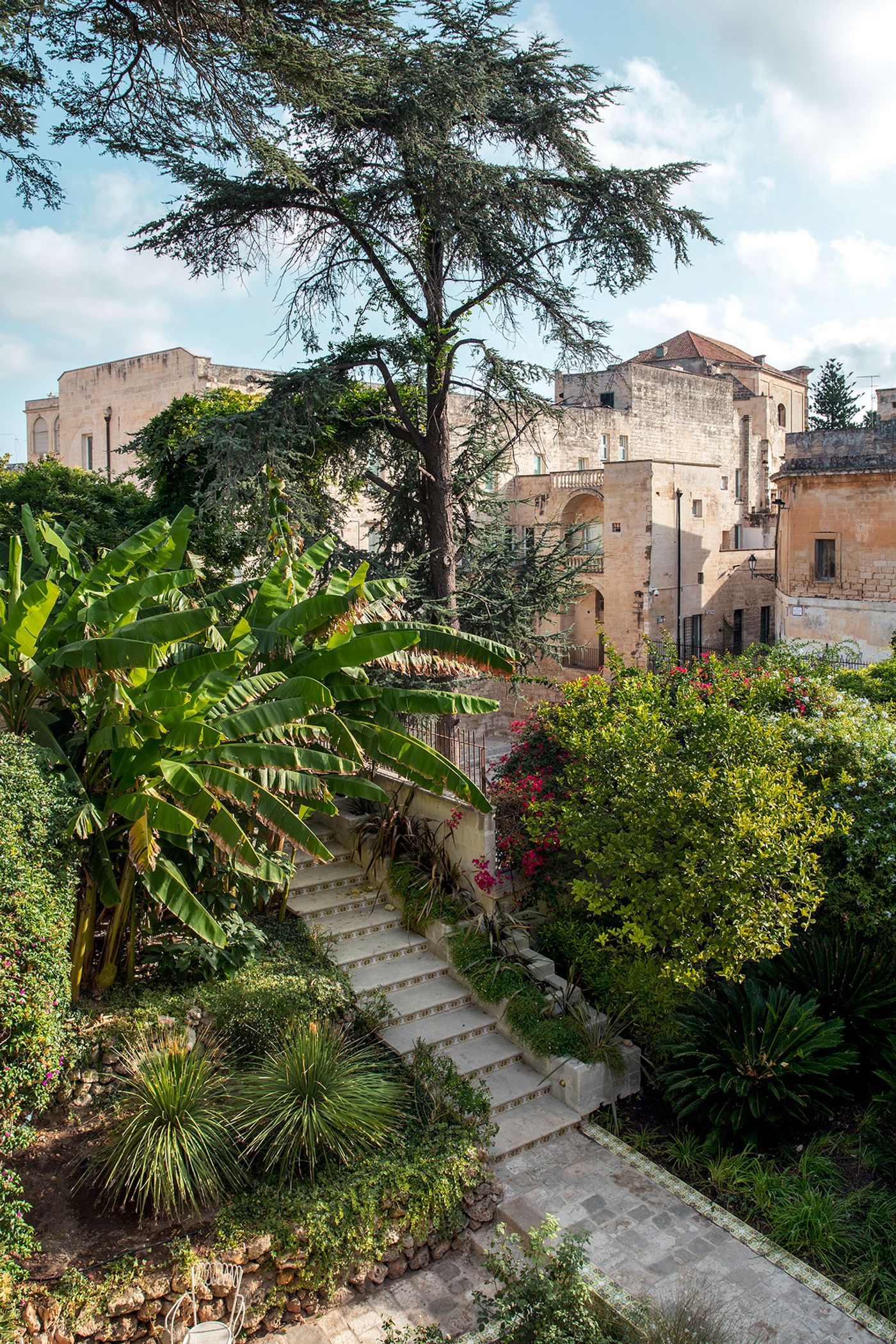
Garden. Photography by Helenio Barbetta.

Photography by Helenio Barbetta.
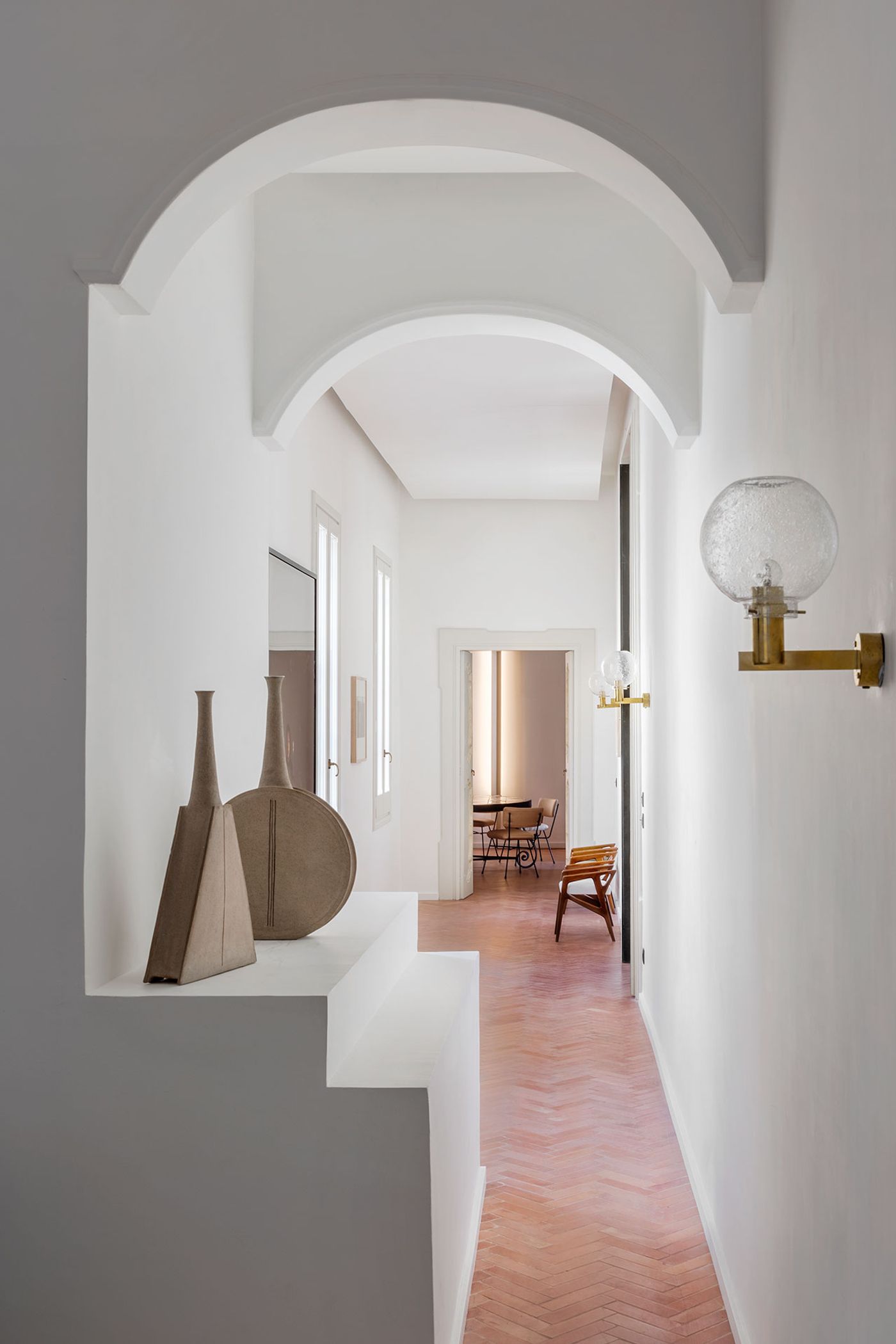
Photography by Helenio Barbetta.
An avid collector of the Italian master’s work, Enselmi’s collection of Ponti’s furniture is displayed throughout the premises in dialogue with other icons of Italian modernism like Franco Albini, Ettore Sottsass, Carlo Mollino and Ignazio Gardella, as well as antiques and contemporary pieces. Custom-designed furnishings by Milan-based architects Storage Associati, Napoli-based architect Giuliano Dell’Uva and London-based Italian designer Martino Gamper enhance the uniqueness of each space as do site-specific installations by artists such as David Tremlett, Joseph Kosuth and Antonio Marras, and a curation of artworks that range from hypnotic images by Marina Abramovic, to photography by Ugo Mulas, Thomas Ruff, Mimmo Jodice and Vanessa Beecroft, to neon pieces by Alfredo Jaar. The collection spills out onto the palazzo’s scenic rooftop terrace and lush, jasmine and citrus scented gardens overlooking the city’s ancient Roman amphitheatre, making Palazzo Luce a paradise for art and design lovers in every sense of the word.
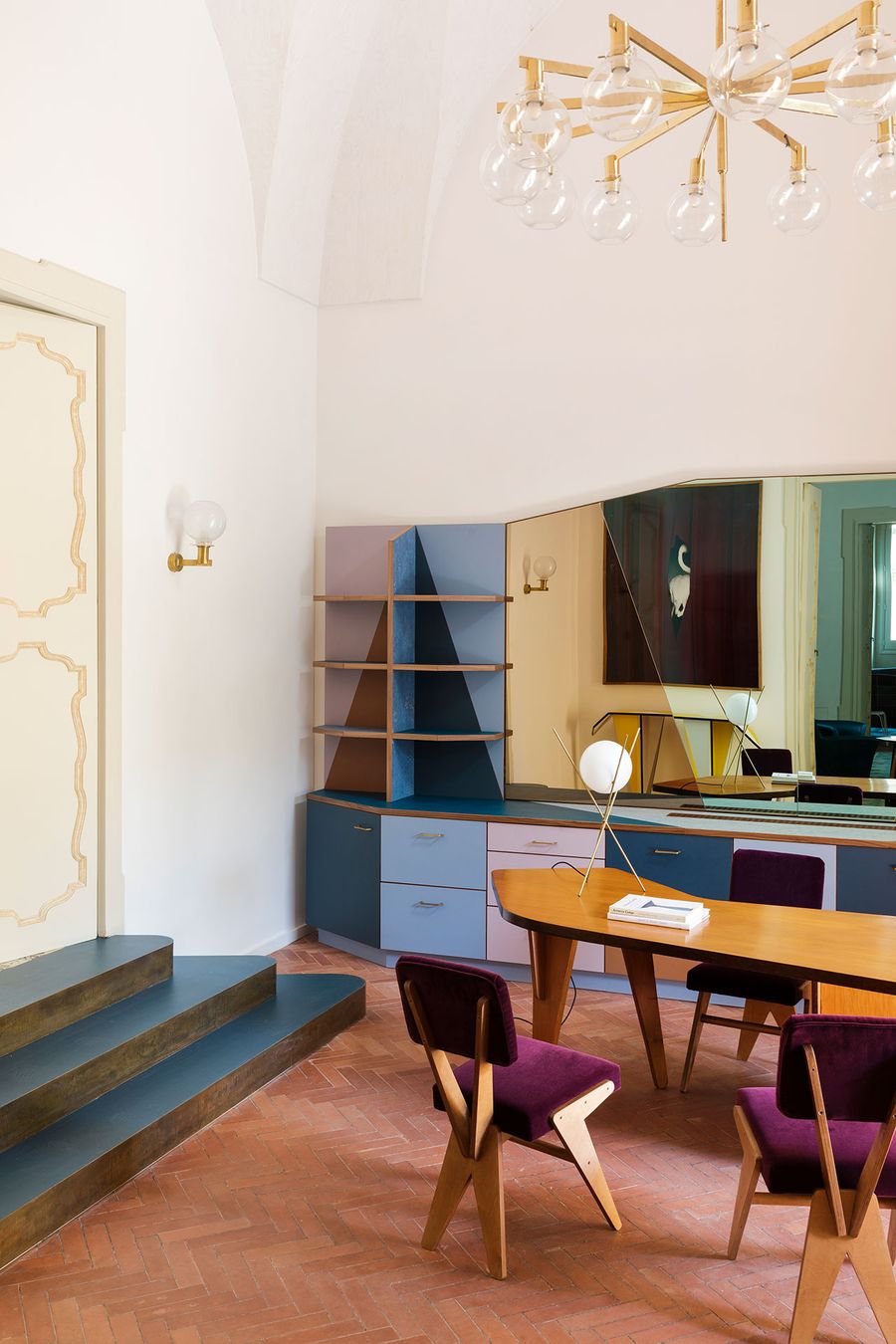
Photography by Helenio Barbetta.
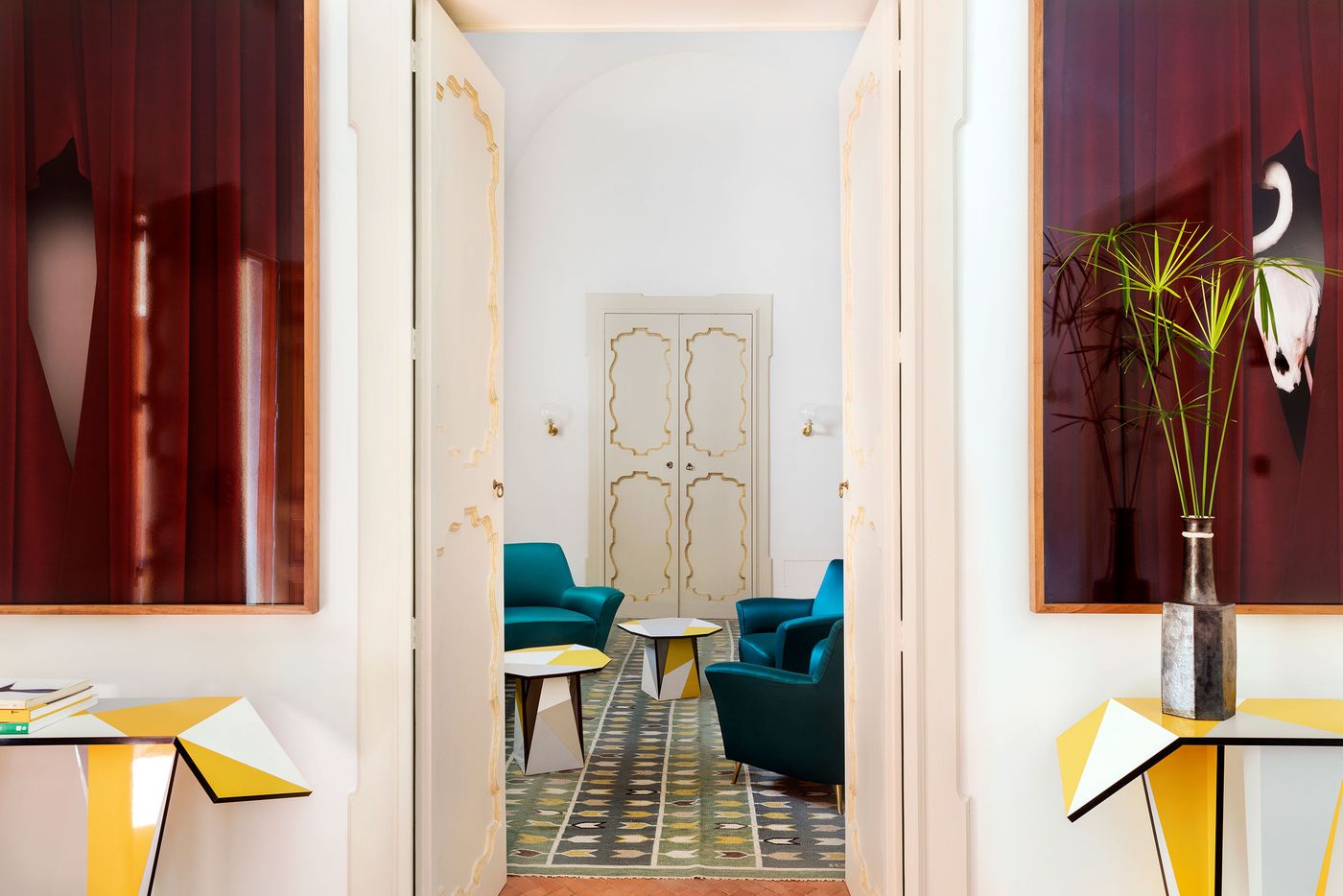
Photography by Helenio Barbetta.
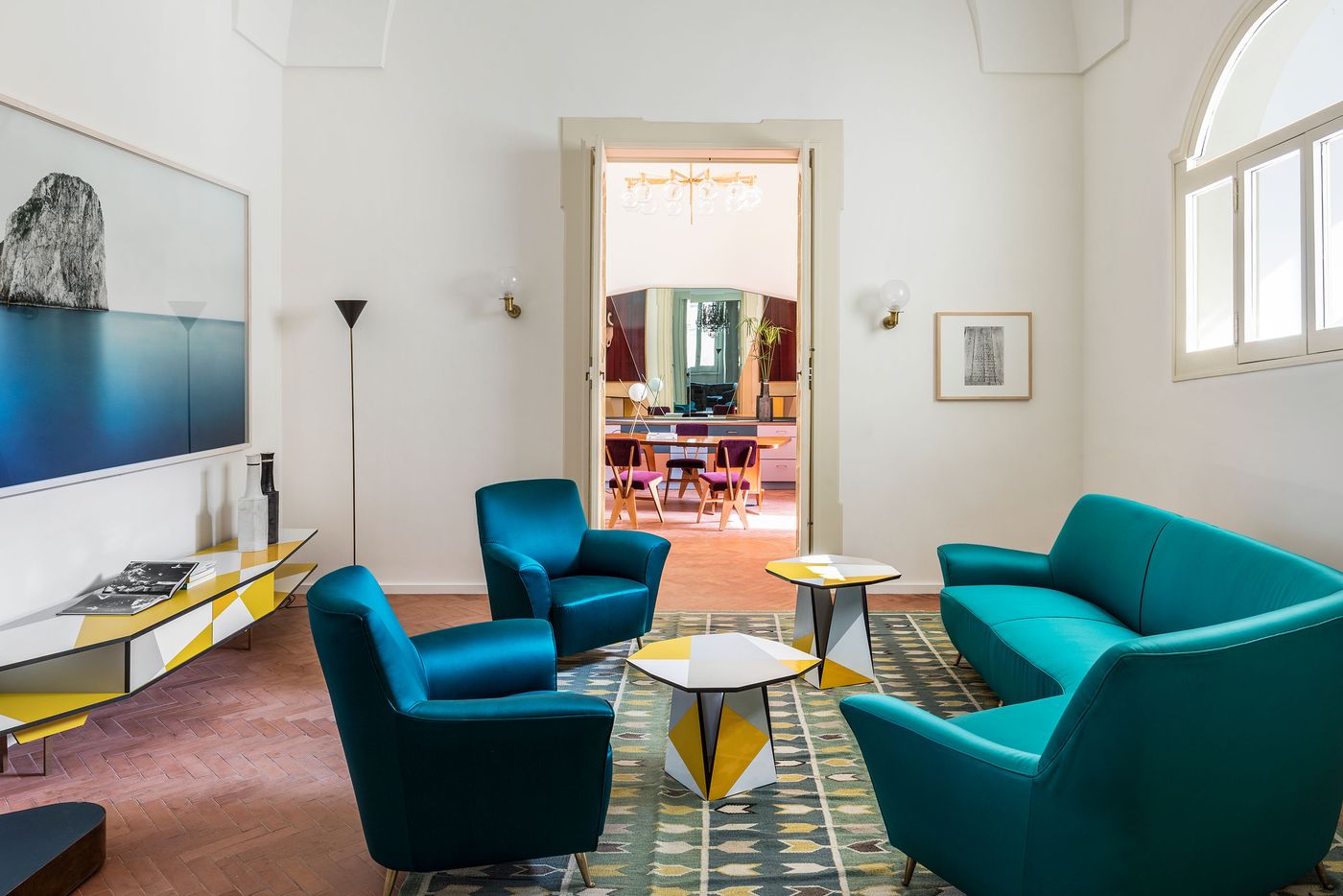
Living Room. Photography by Helenio Barbetta.
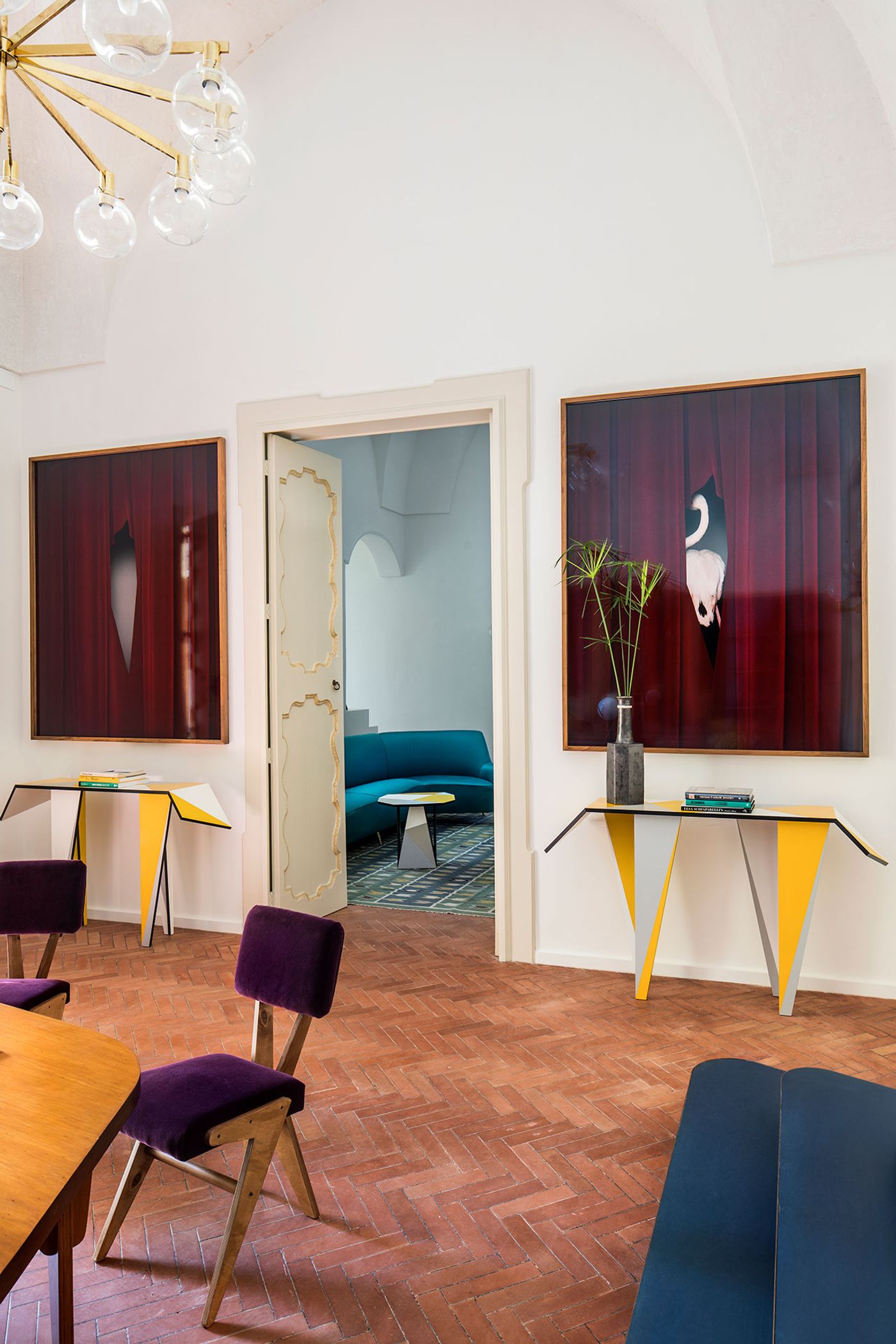
Photography by Helenio Barbetta.
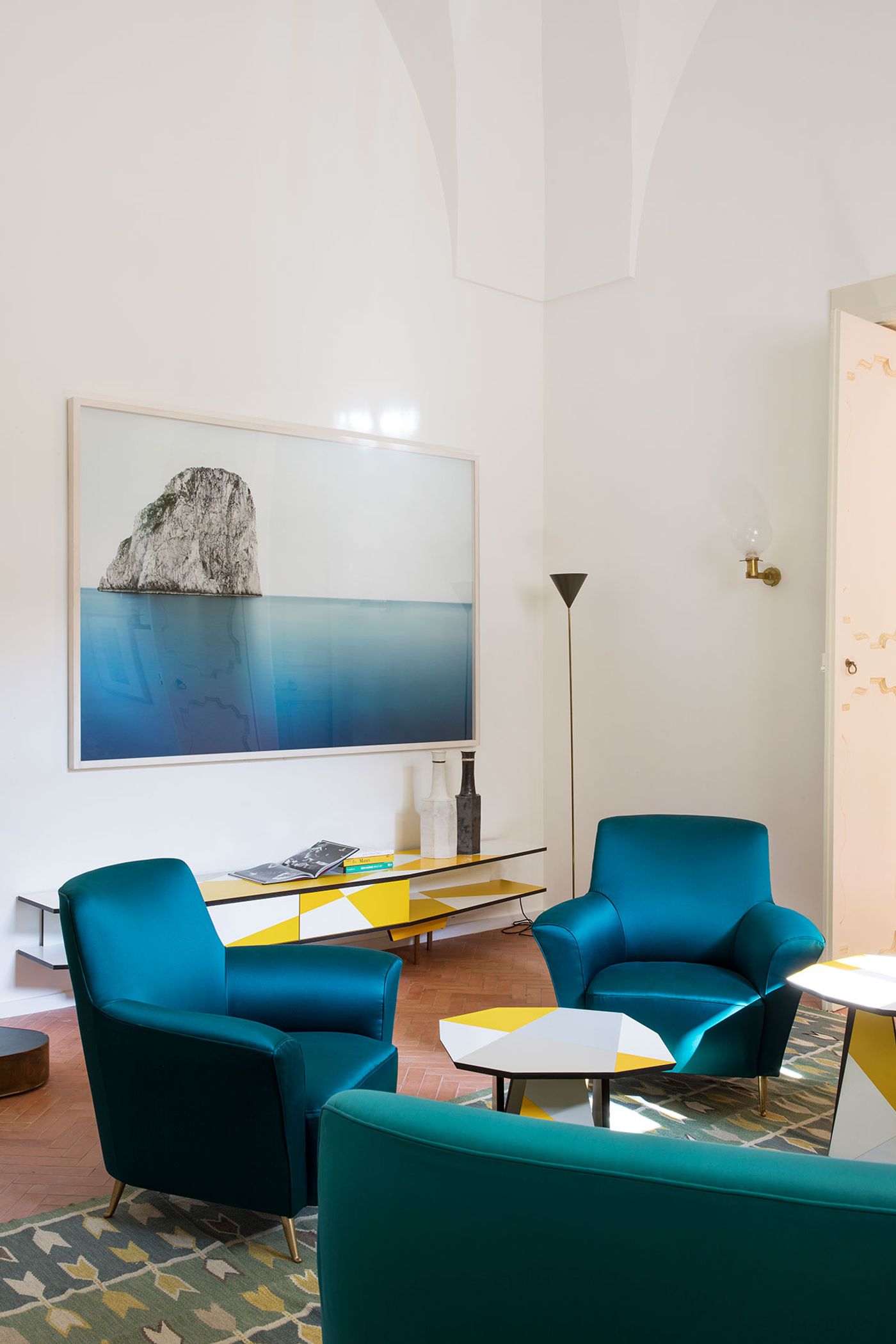
Living Room. Photography by Helenio Barbetta.
At the heart of the hotel’s communal areas is the main living room, a relaxed, light-filled space swathed in blue with a moodier antechamber bringing together a blue neon artwork by Alfredo Jaar, a large chandelier by Konstantin Grcic, a rare mirror by Ettore Sottsass and a desk designed by Gio Ponti for his daughter Lisa Ponti.
A curated selection of books dedicated to art, photography, design, lifestyle and fashion await guests in the palazzo’s two libraries. In the main library, antique bookcases are paired with polychrome tessellated sofas by Brigitte Niedemair and Martino Gamper, sculptures by Ettore Spallettis and a site-specific installation of mirrors by Marzia Miglioras, while in the De Secly library, which takes its name from Luigi de Secly, an intellectual, journalist and editor-in-chief of la Gazzetta del Mezzogiorno who lived in the palazzo, and a 19th century round table adorned with majolica tiles steals the show.
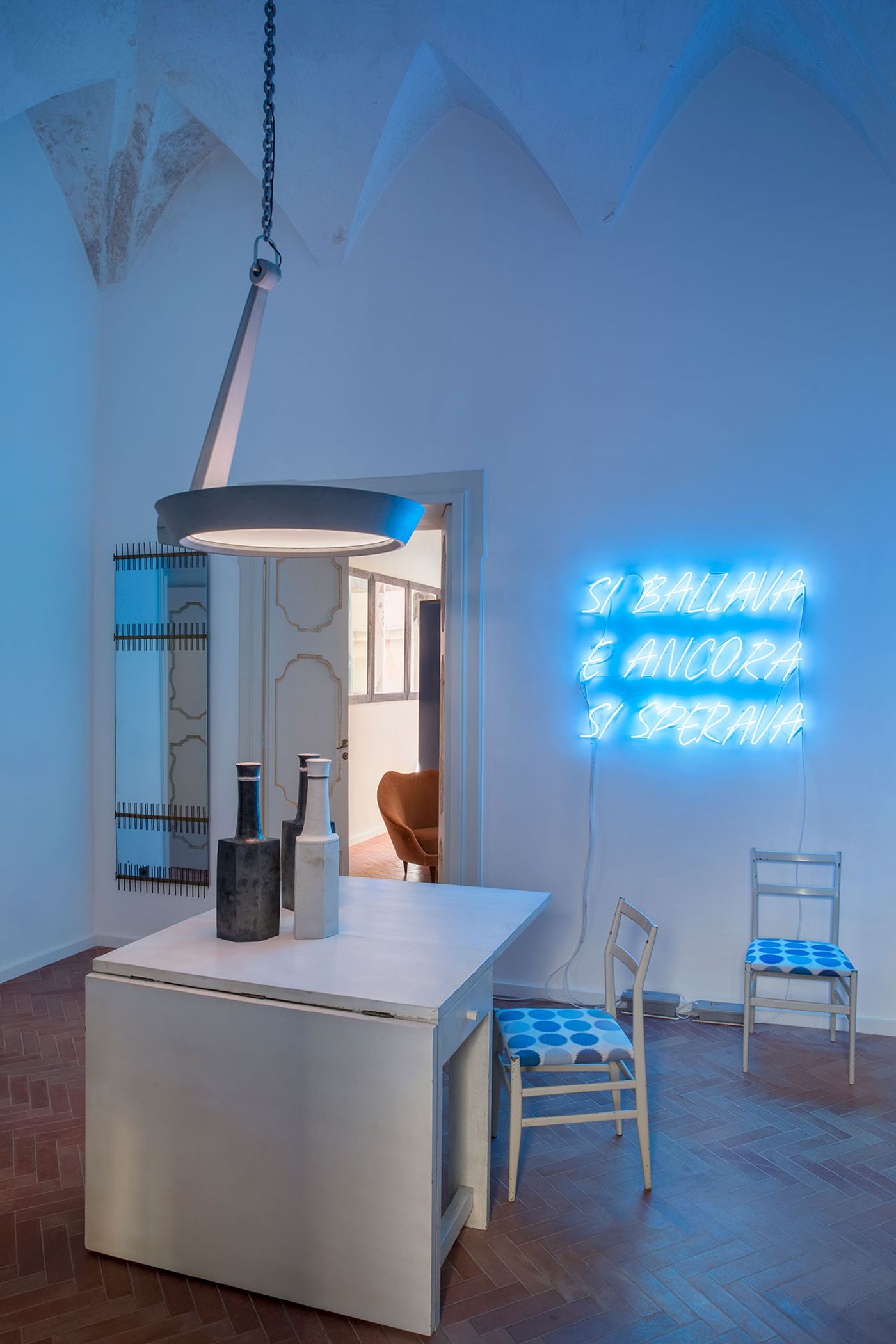
Living Room. Photography by Helenio Barbetta.
Originally built in the 14th century, the palazzo is an architectural medley of Medieval, Renaissance and Baroque elements, the result of numerous alterations, interventions and additions during the centuries that followed. For Enselmi, whose own collection brings together historic and modern pieces, it was therefore important to preserve the building’s diverse architectural heritage; vaulted ceilings, herringbone patterned terracotta tiling and antique bookcases are just some of the historic features that have been meticulously restored, while the palazzo’s labyrinthic layout further enhances the sense of wonder that the uniqueness of each room offers.
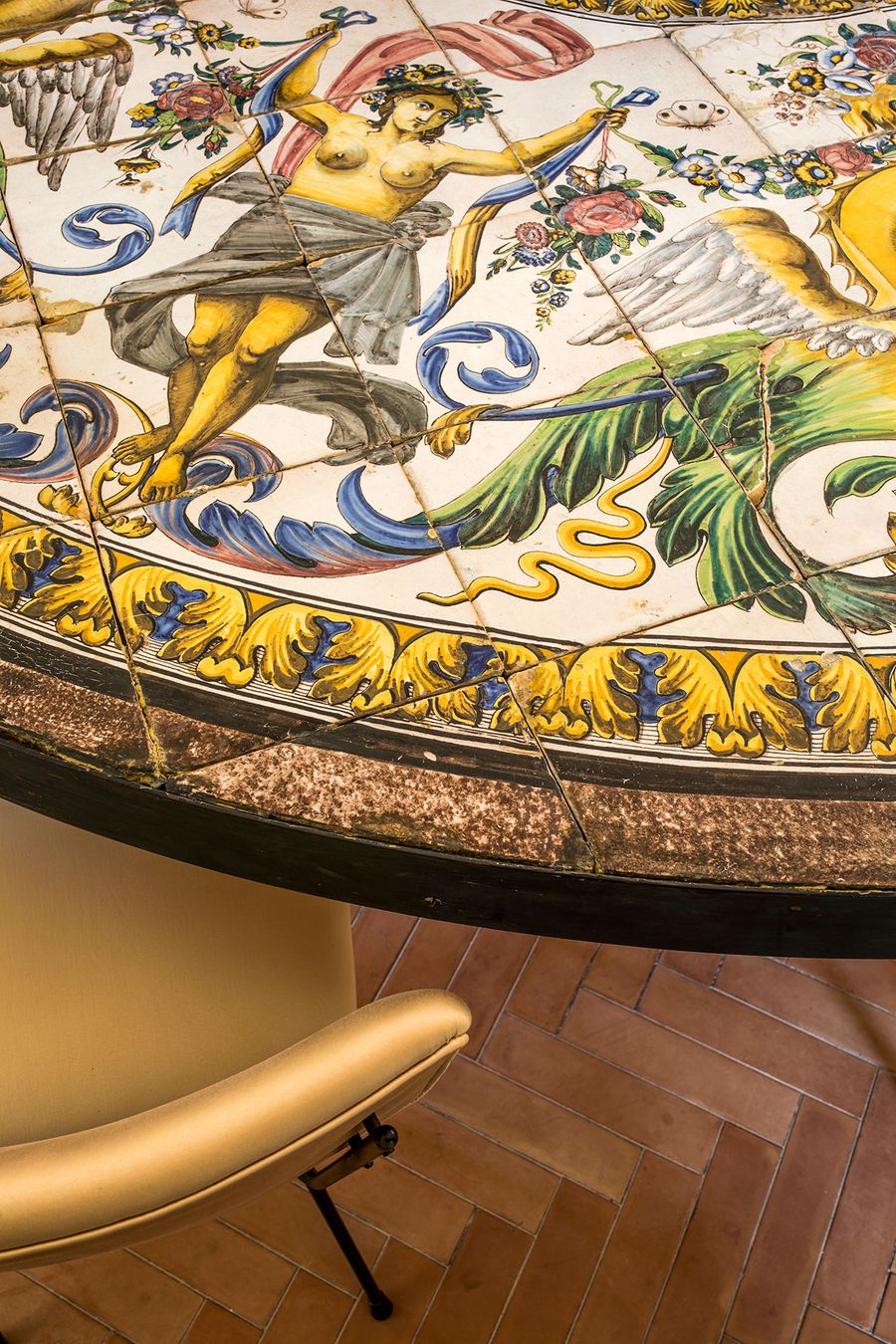
De Secly's Library. Photography by Helenio Barbetta.
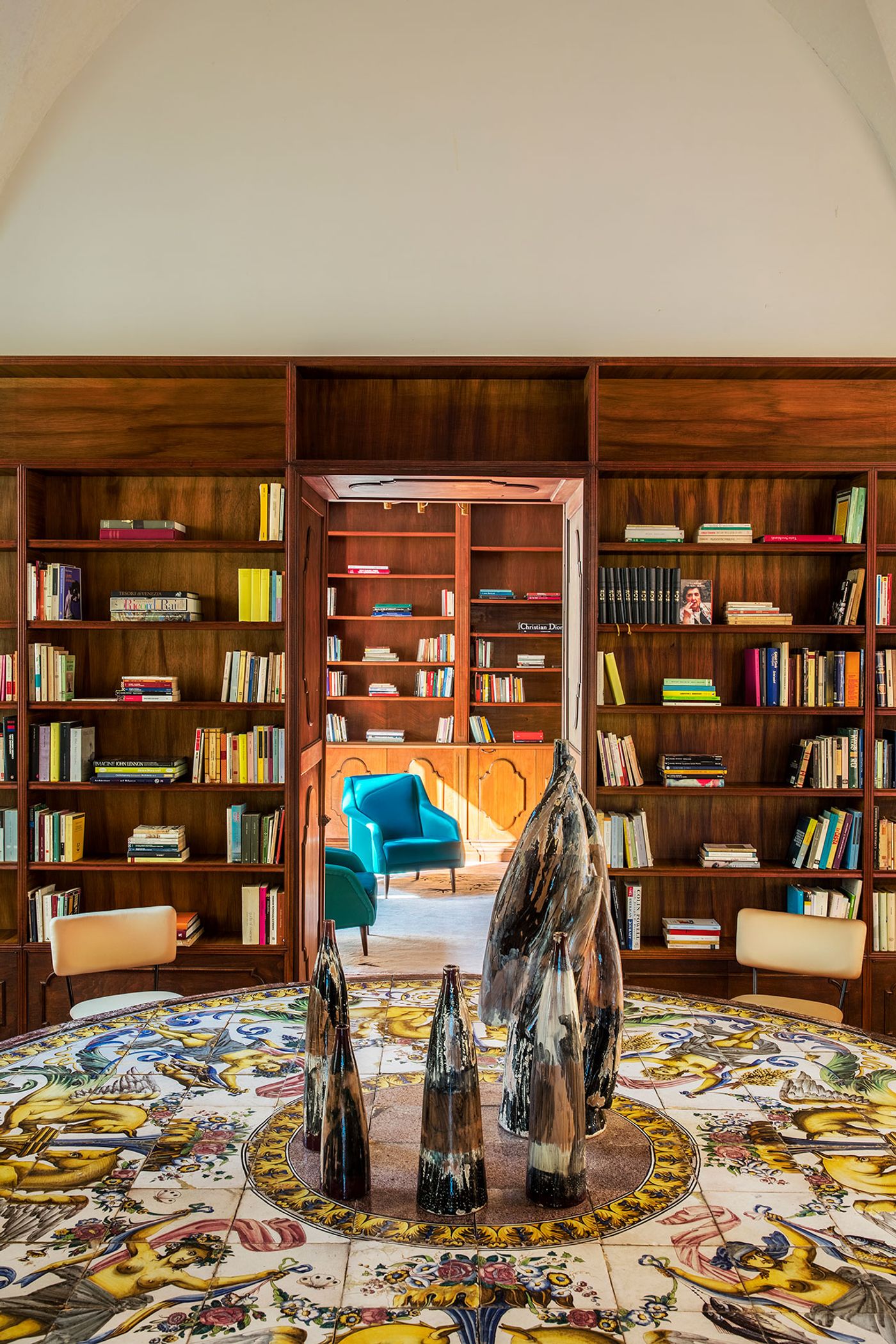
De Secly's Library. Photography by Helenio Barbetta.
Functioning as a multipurpose space, the palazzo’s grand hall, known as La Salla della Musica, or Music Room, features an immense wall-to-wall carpet designed by artist Joseph Kosuth for this room as an homage to one of his favourite childhood stories, Hans Christian Andersen’s “The Emperor’s New Clothes”. Antique mirrors, consoles and chandeliers converse with William Kentridge’s “laser cut” portraits and Thomas Ruff’s hypnotic photographs. Conceived and designed by Martino Gamper, who is also responsible for the hotel’s playful brand identity, the adjacent Gamper Bar presents an interplay of pastel colours, geometric shapes and contrasting textures inspired by Gio Ponti, with an antique crystal chandelier conversing with Bethan Laura Wood’s inflorescence lights.
Gamper has also designed the Breakfast room in the same design language of geometric playfulness with bespoke tables in aquamarine, teal, green hues, again paired with Gio Ponti furniture including the sofas and armchairs that he designed for the Hotel Parco dei Principi in Rome in the 1960s. Opening up to a dining terrace that overlooks the gardens, the space is light-filled and airy, providing a convivial space for guests to enjoy the hotel’s farm-to-table breakfast offerings served on porcelain tableware custom-made by Richard Ginori for the Palazzo.
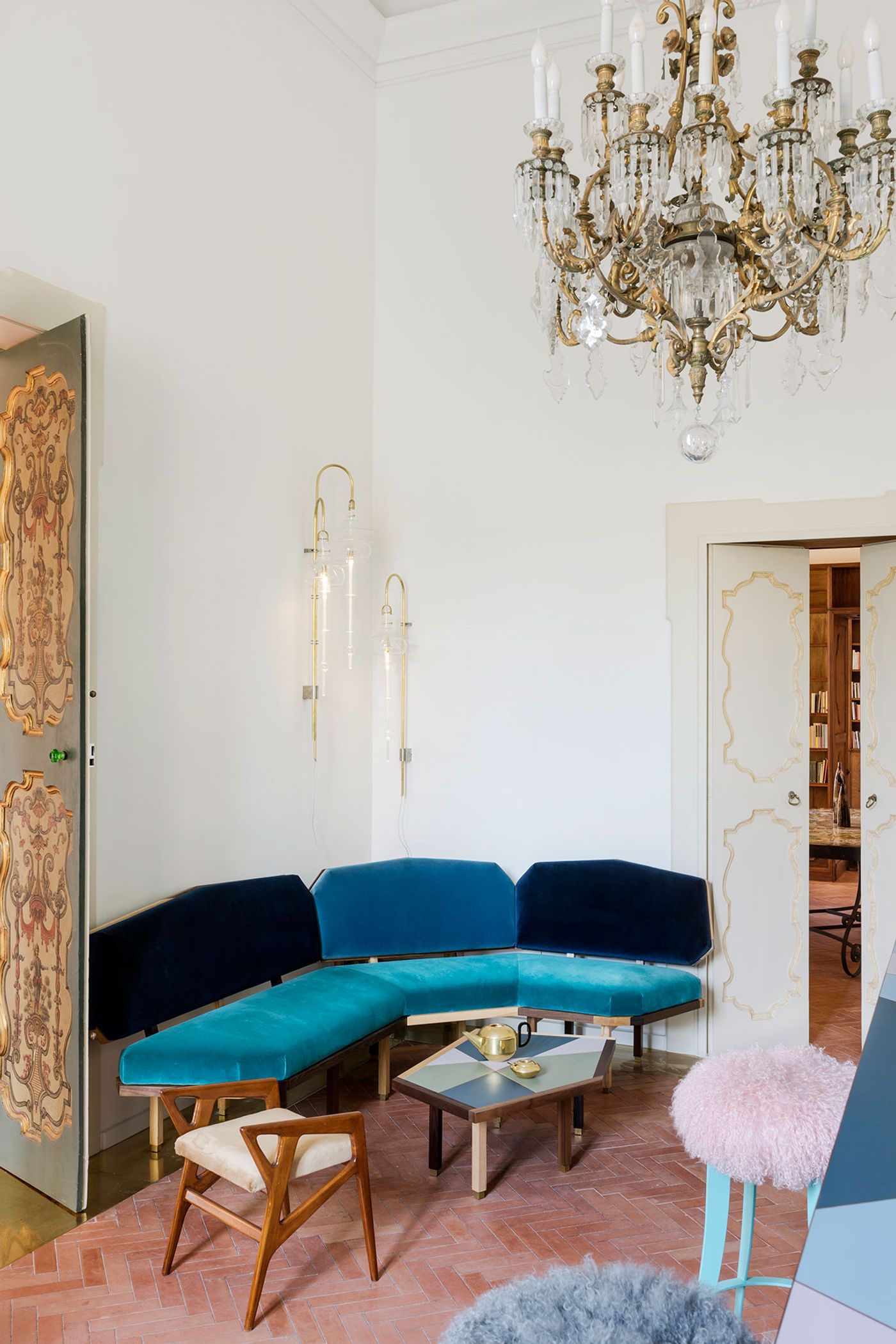
Gamber Bar. Photography by Helenio Barbetta.
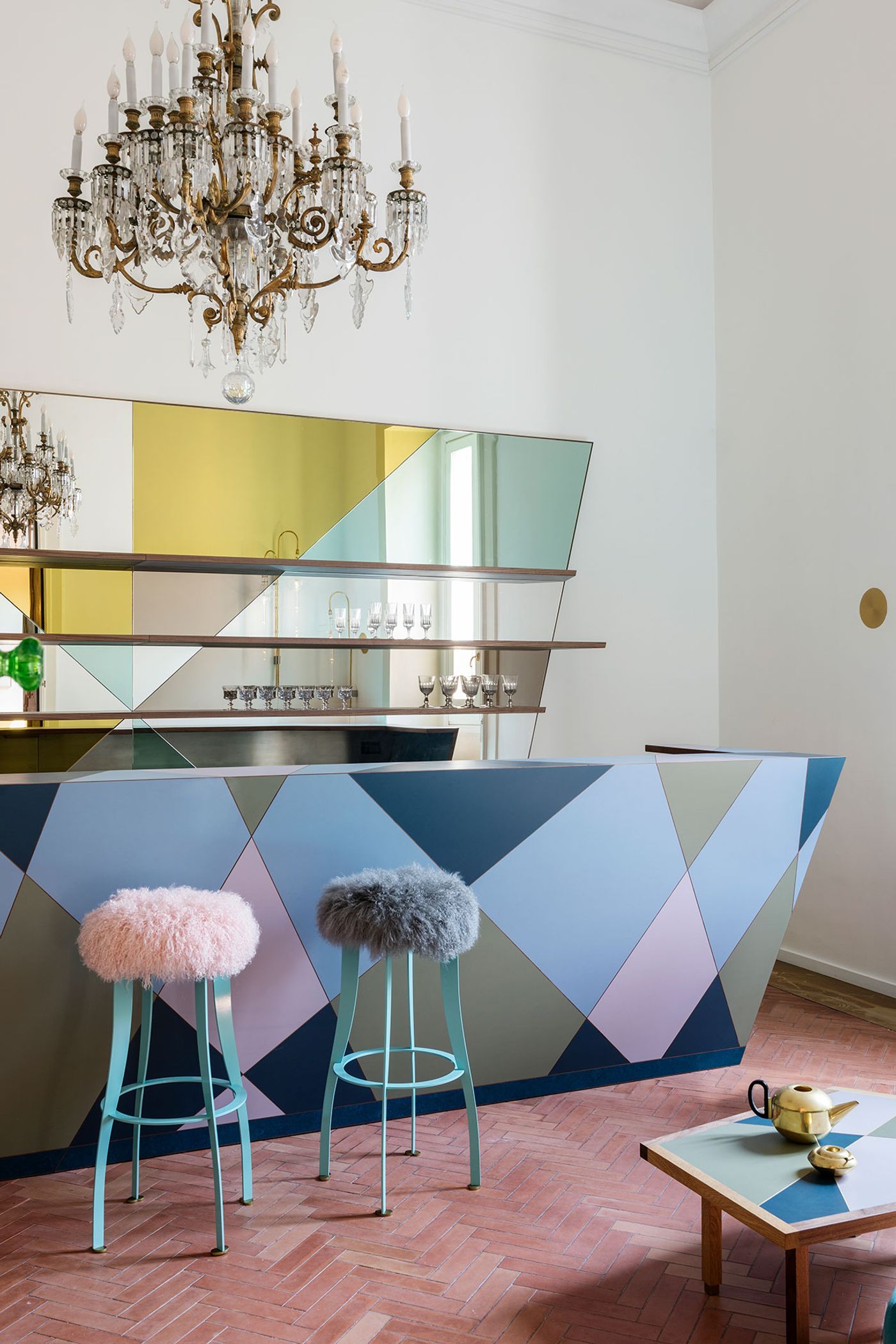
Gamber Bar. Photography by Helenio Barbetta.
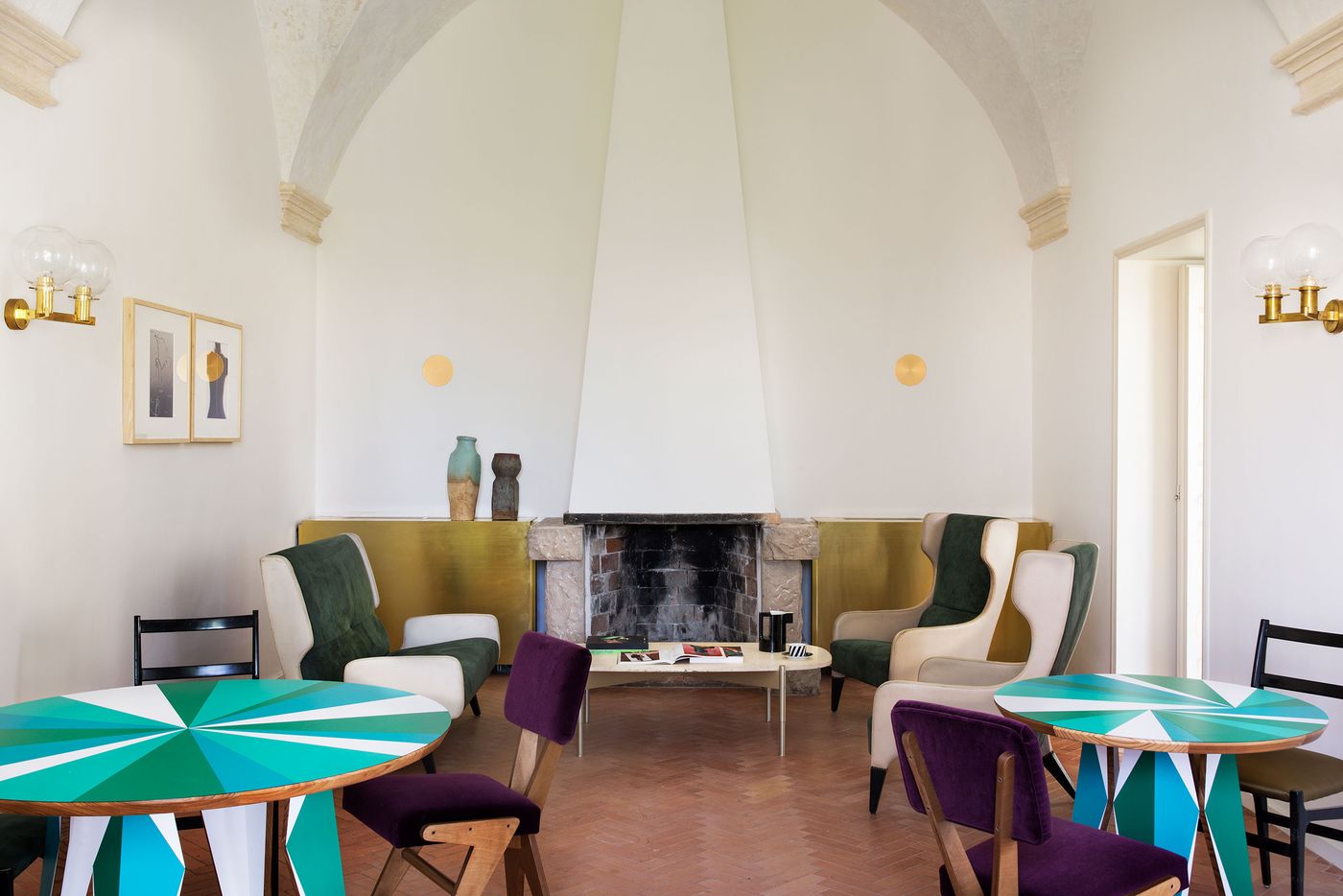
Breakfast Room. Photography by Helenio Barbetta.
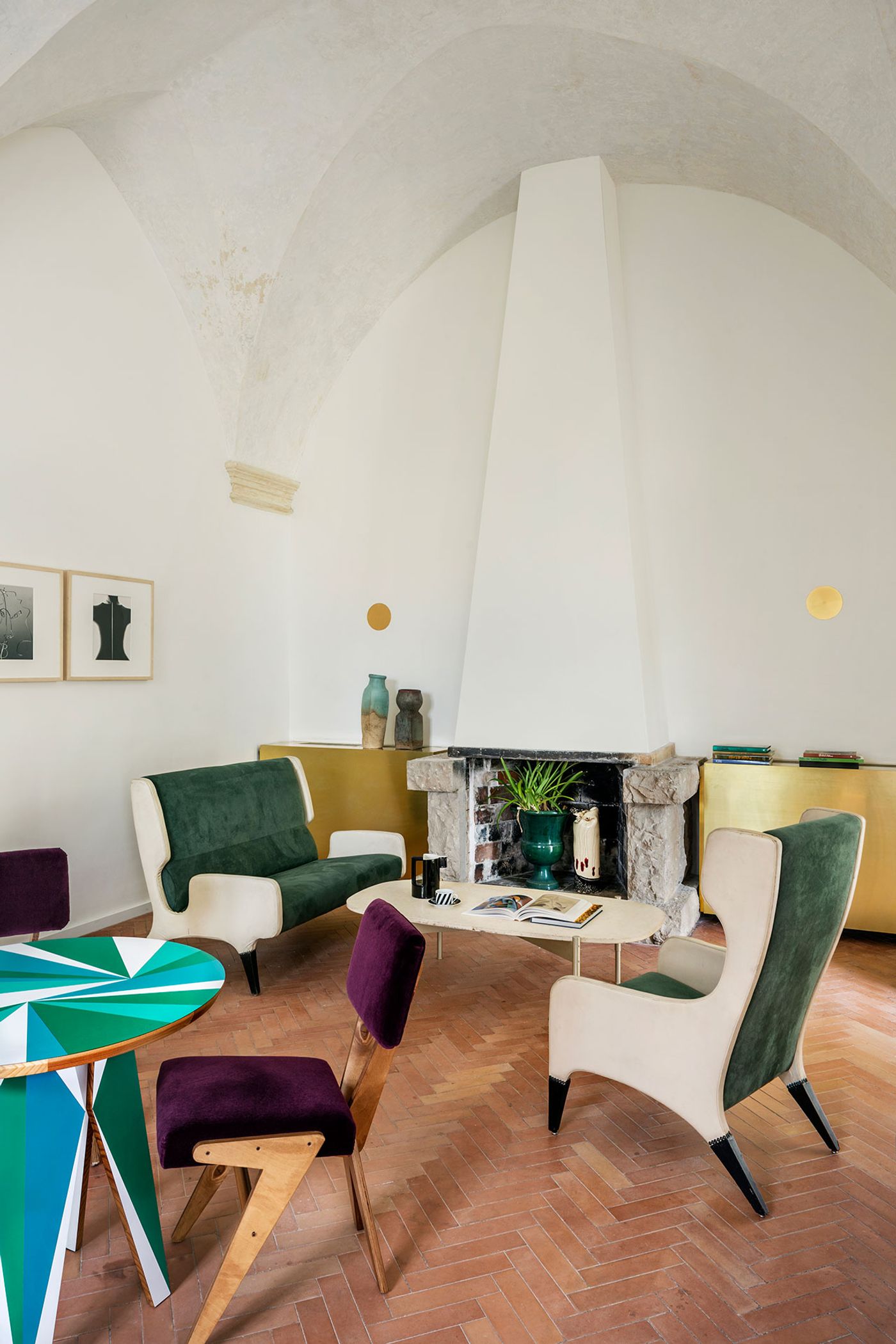
Breakfast Room. Photography by Helenio Barbetta.
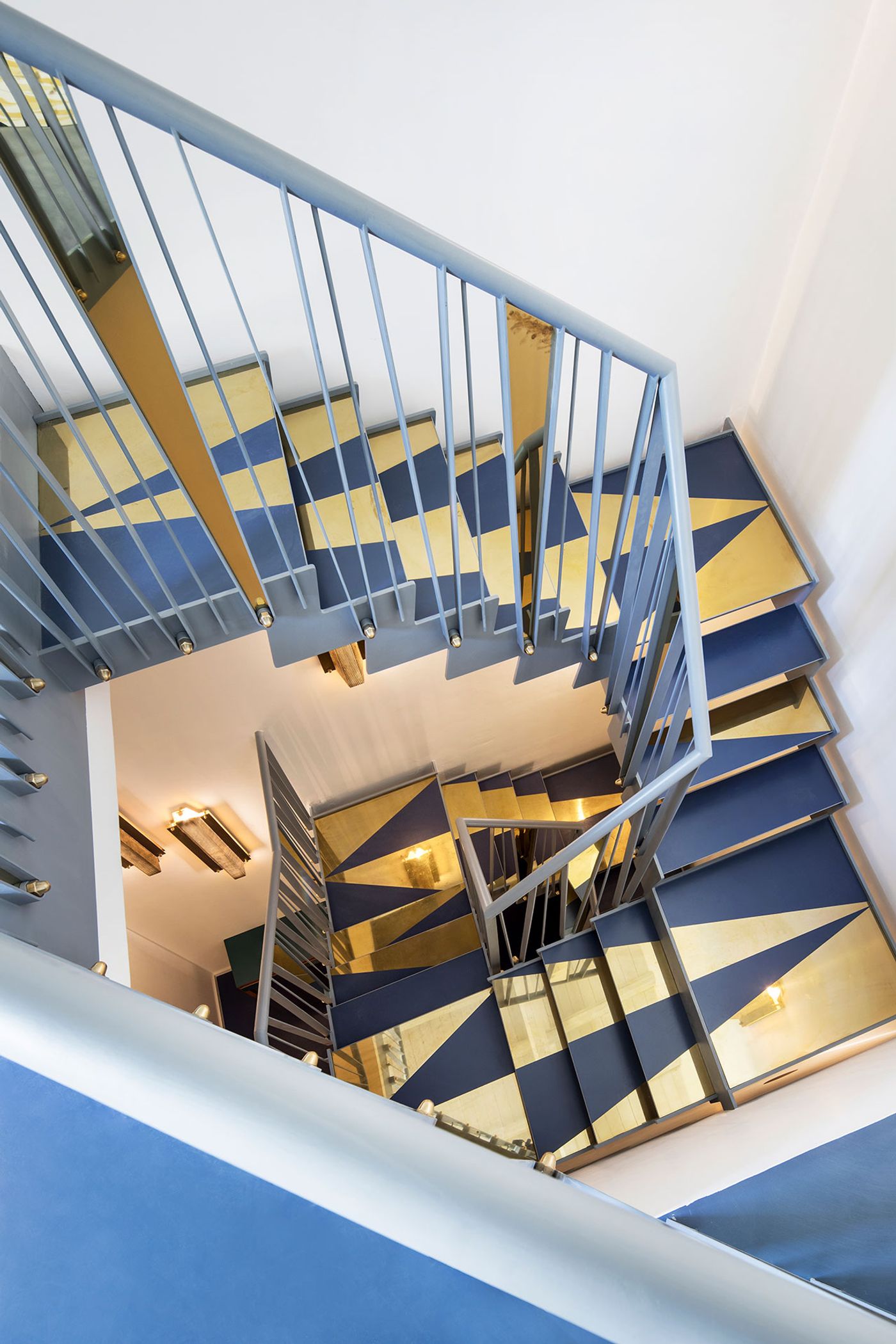
Photography by Helenio Barbetta.
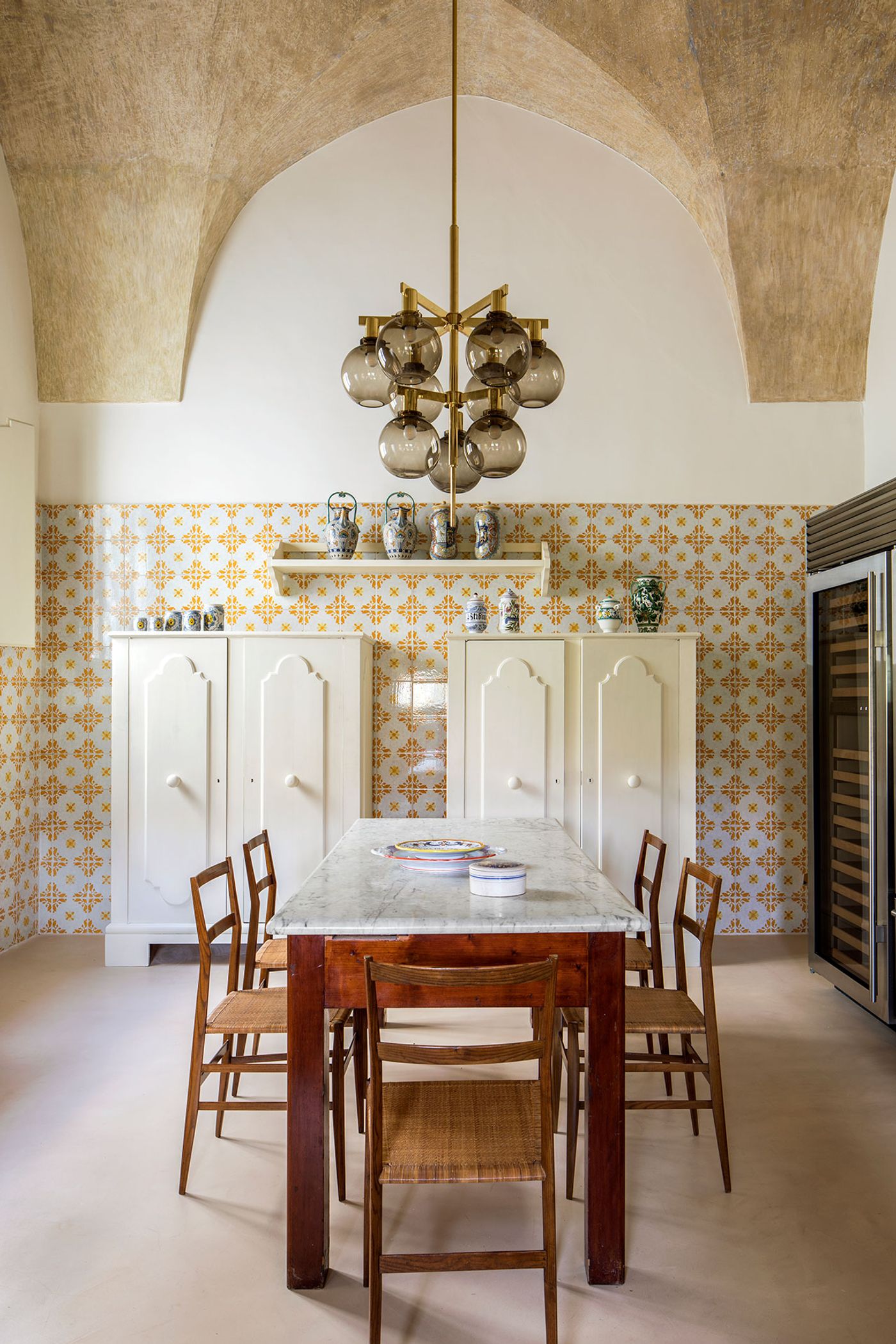
Photography by Helenio Barbetta.
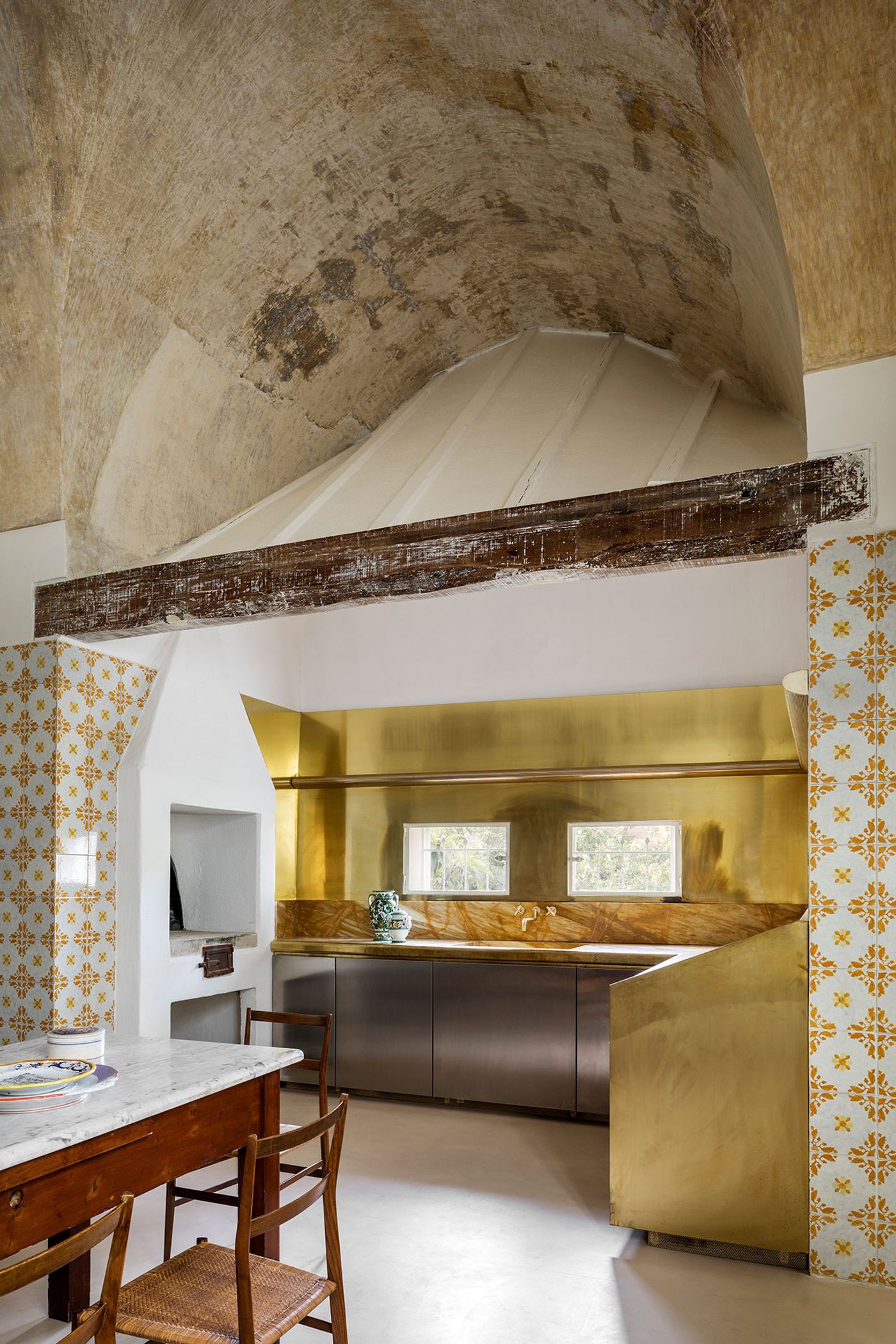
Photography by Helenio Barbetta.
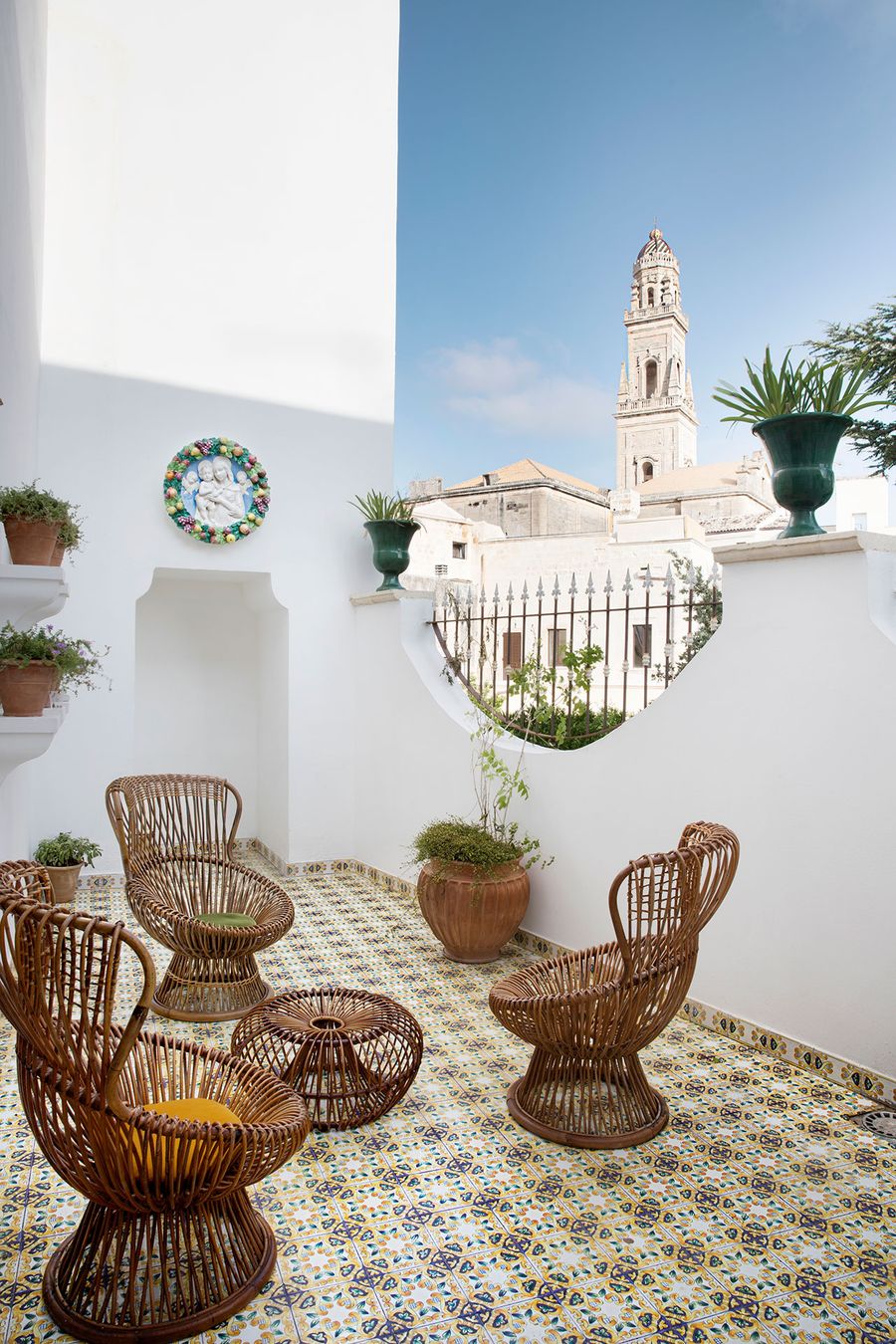
Photography by Helenio Barbetta.
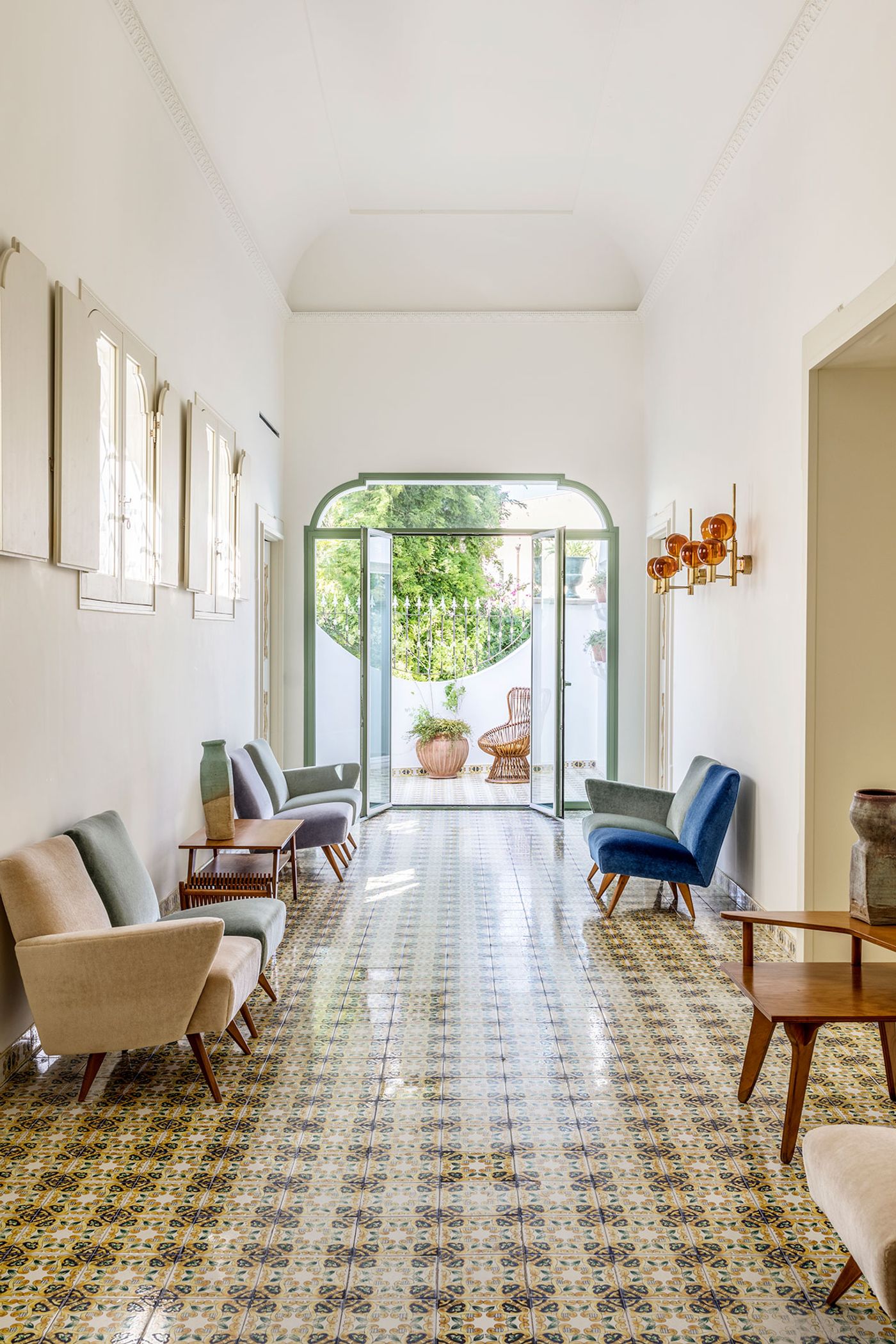
Majolica Gallery. Photography by Helenio Barbetta.
On the piano nobile, or main floor, in one of oldest parts of the building, the Giuliano Dell’Uva-designed MARIA d’ENGHIEN suite offers guests the opportunity to stay in the same rooms where the countess of Lecce and Queen of Naples once lived. Here, a site-specific ceiling fresco above the bed by artist David Tremlett taking the form of a geometric spiral sets the tone for the suite’ interiors. Hand-painted striped fabric on the walls, colour blocking on the walls and floors and gold accents create a vibrant ambience while original Gio Ponti furnishings paired with chairs by Pier Giulio Magistretti and a 1960s chandelier by Hans-Agne Jackobsson add vintage charm.
On the same floor, the PASSAGGI suite stands out for its white and green striped décor with walnut furniture and vintage Fontana Arte lamps from the 1930s adding Art Deco touches, while the Storage Associati-designed FANCIULLINO suite is animated by vibrant splashes of yellow and aquamarine. Furniture by Gio Ponti and Marzio Cecchi, a custom-designed mirrored screen-room divider, and artworks by Thomas Ruff and Mimmo Jodice imbue the space with its own unique character.
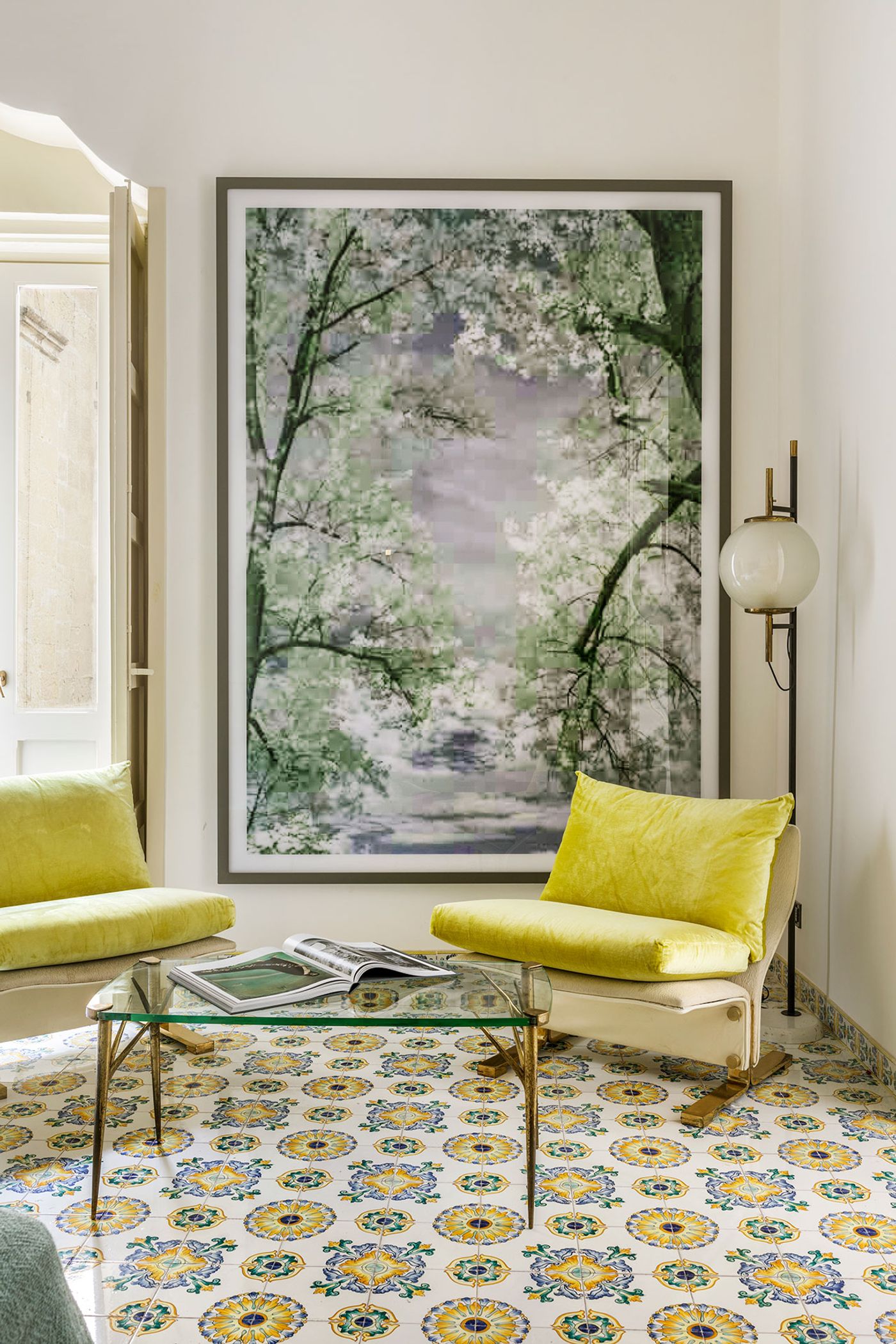
FANCIULLINO Suite. Photography by Helenio Barbetta.
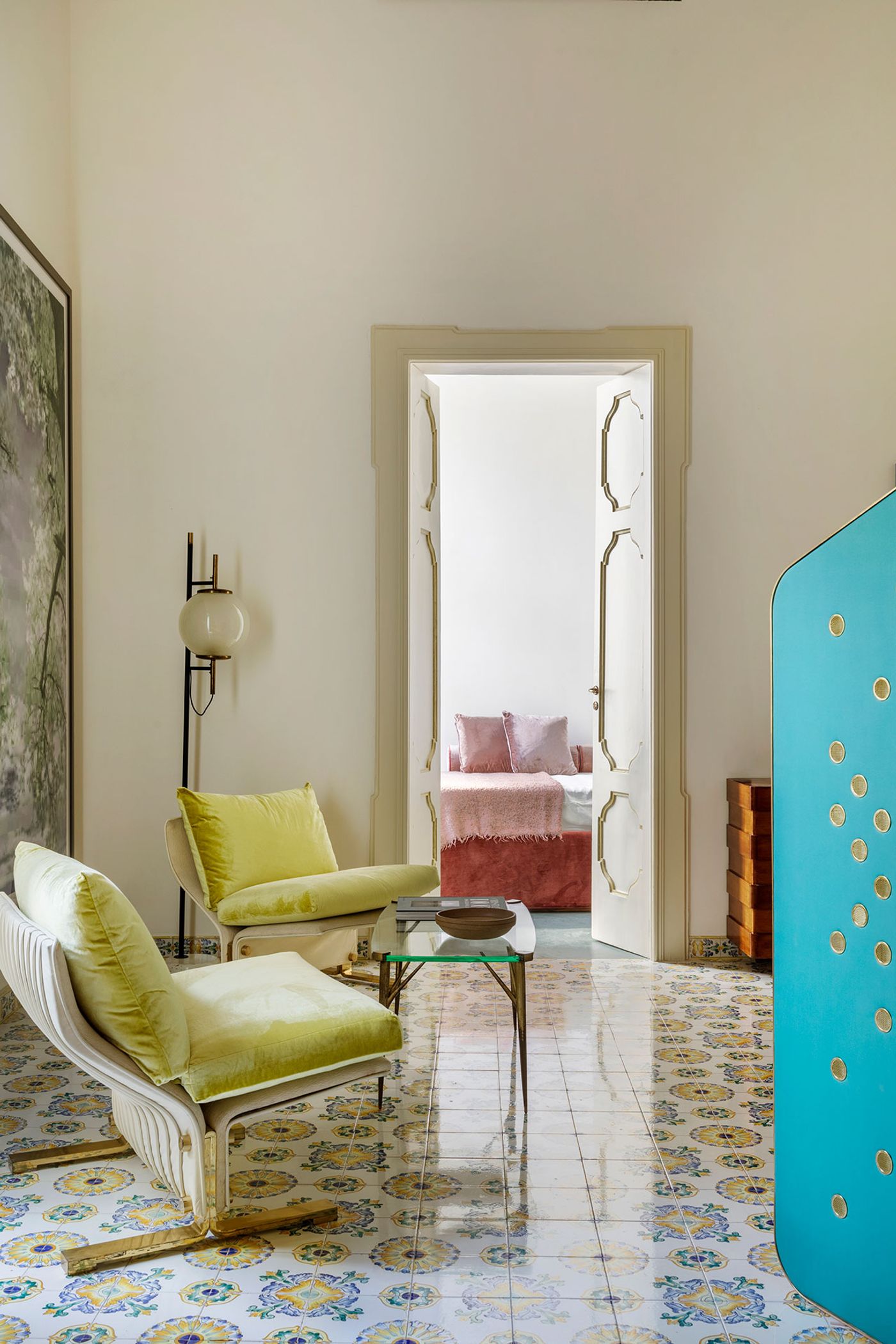
FANCIULLINO Suite. Photography by Helenio Barbetta.
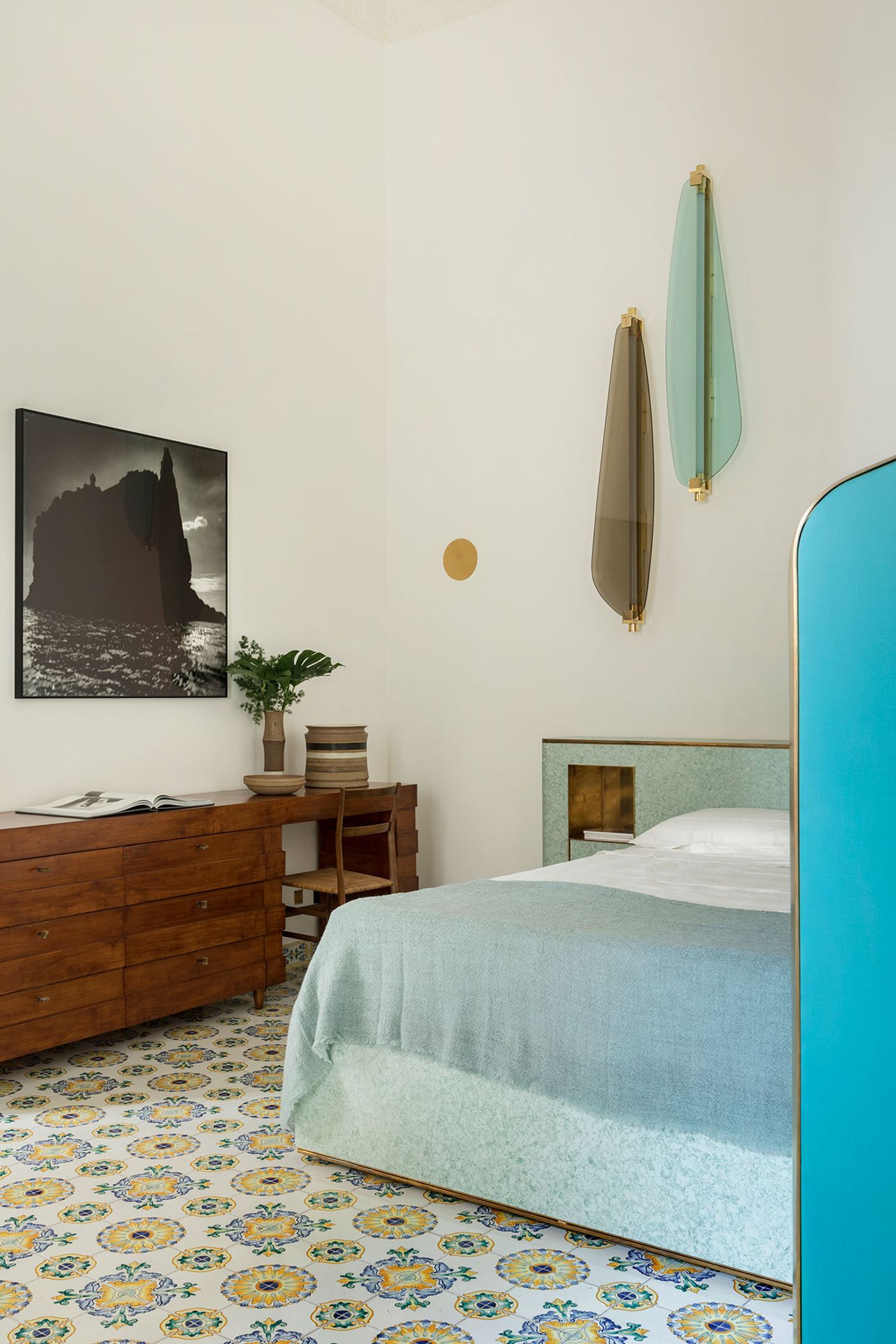
FANCIULLINO Suite. Photography by Helenio Barbetta.
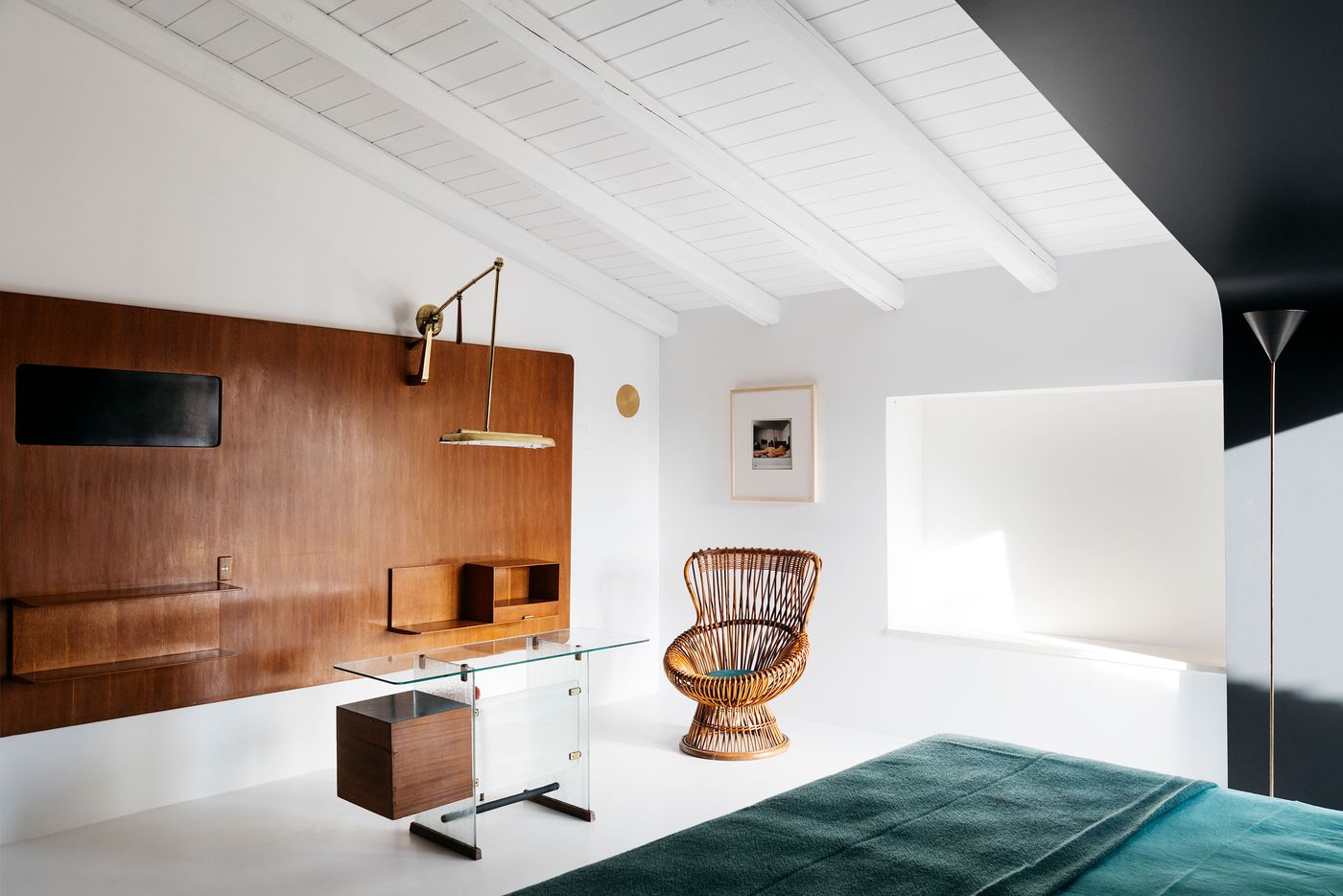
BLUE PONTI Suite. Photography by Lea Anouchinsky.
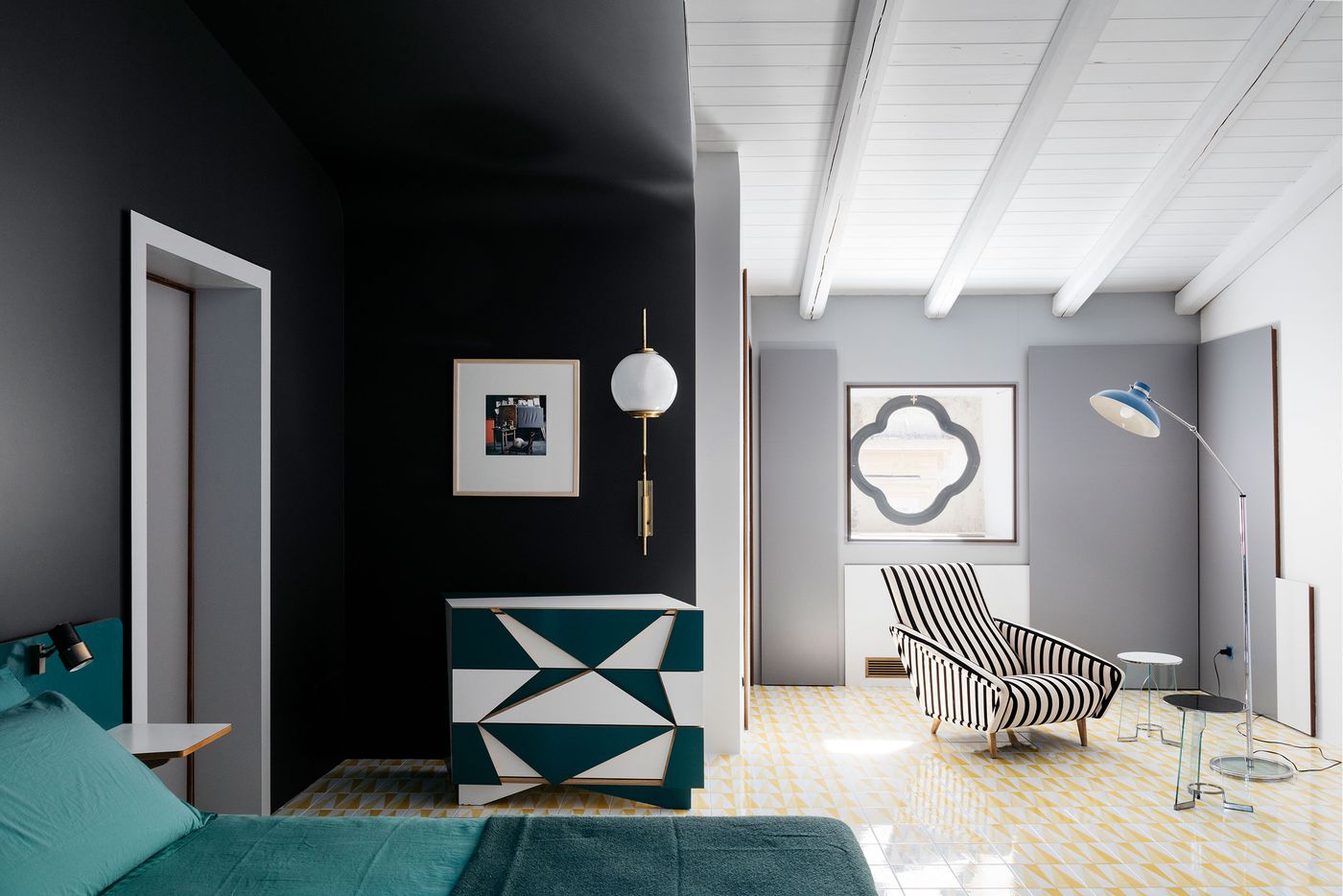
BLUE PONTI Suite. Photography by Lea Anouchinsky.
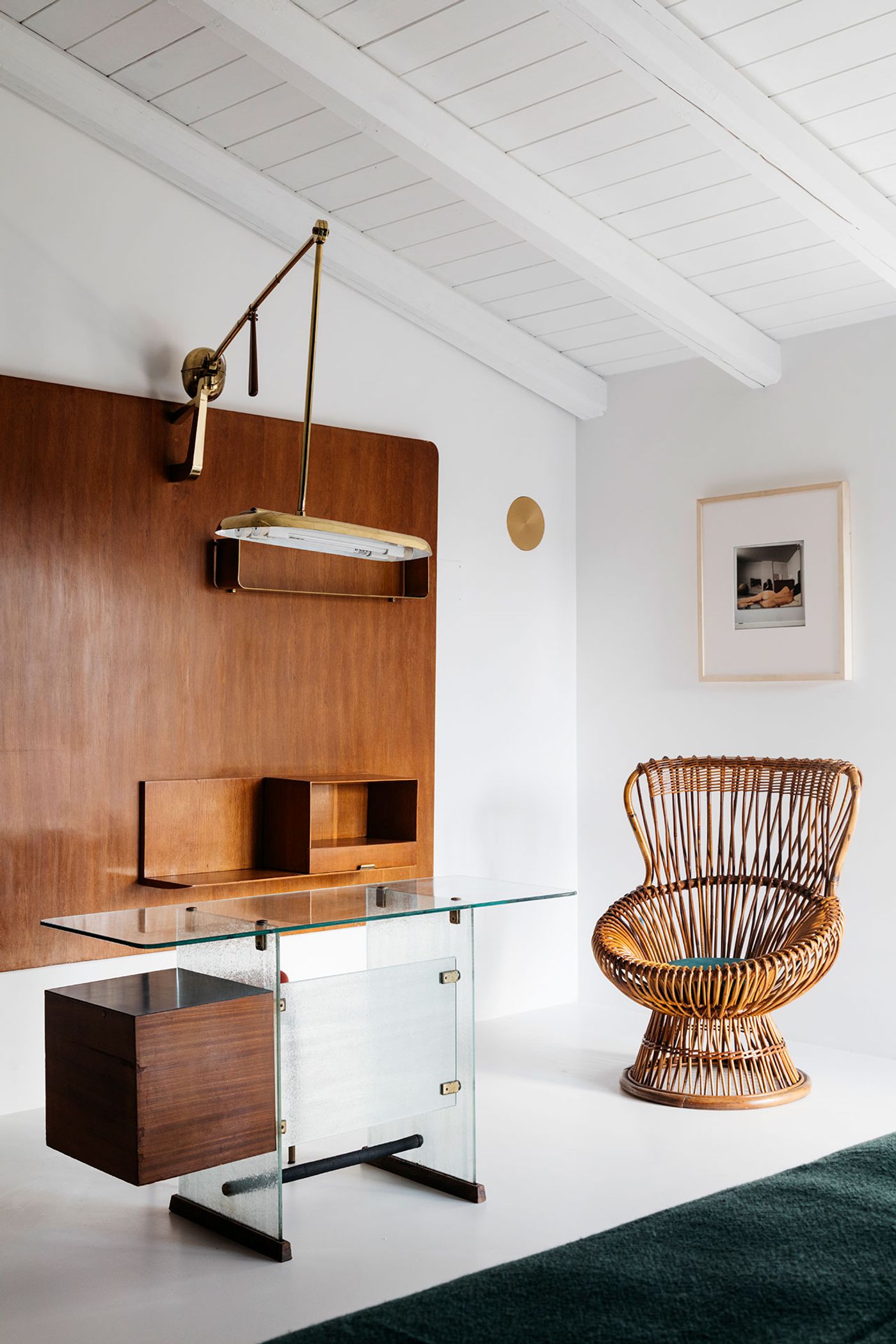
BLUE PONTI Suite. Photography by Lea Anouchinsky.
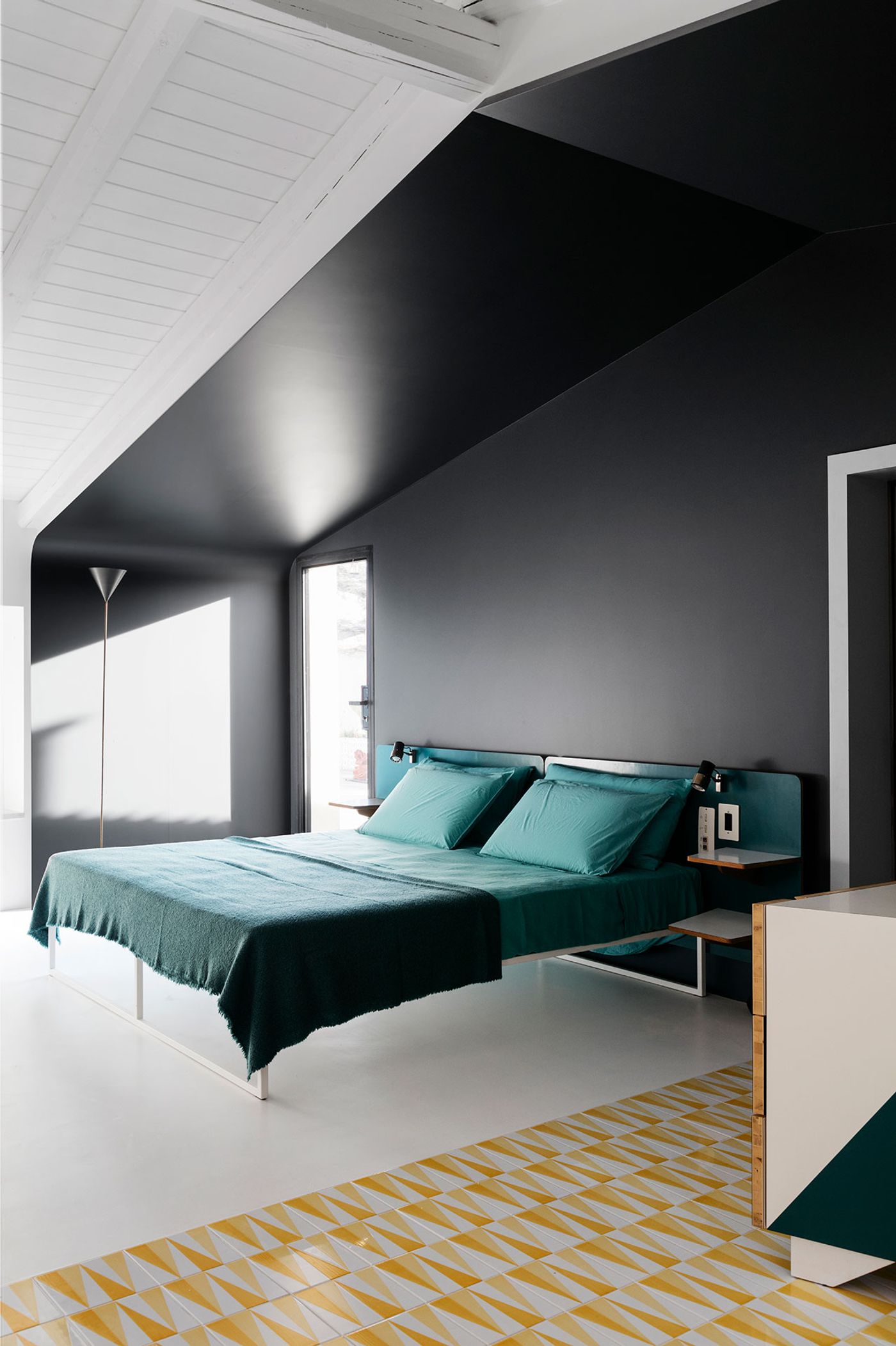
BLUE PONTI Suite. Photography by Lea Anouchinsky.
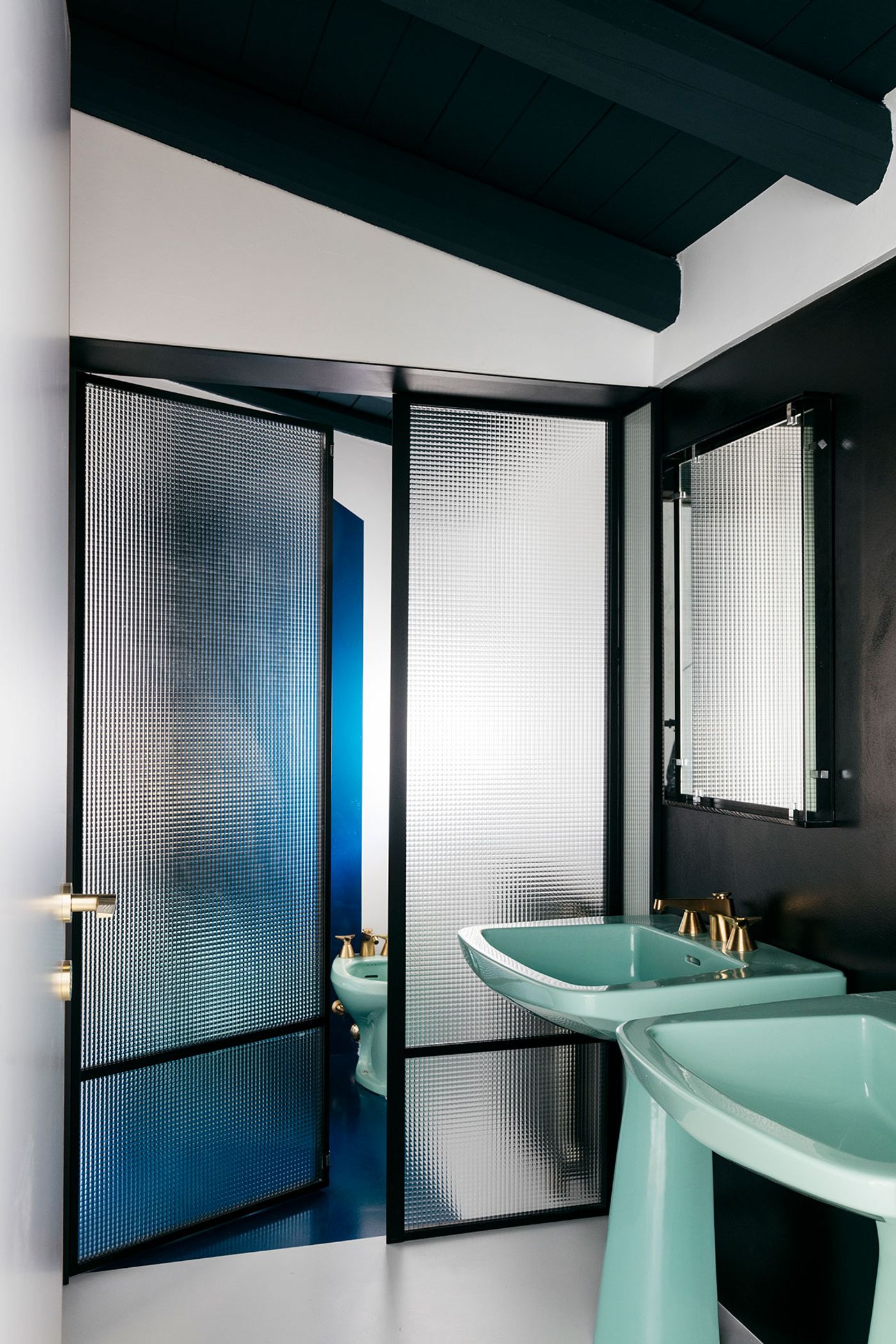
BLUE PONTI Suite. Photography by Lea Anouchinsky.
Enselmi’s homage to Gio Ponti culminates in the palazzo’s two top-floor BLUE PONTI and ROSSO PONTI suites. Designed by Giuliano Dell’Uva, they feature original pieces by Ponti, including the Parete Attrezzata, a unique wall unit created for Dulciora in the late 1940s and one of Enselmi’s most prized possessions, an exclusive re-edition of the maiolica floor tiles that Ponti designed for his Milan residence, along with original Ponti bathroom fixtures.
Both Ponti suites have direct access to the hotel’s sprawling rooftop terrace and Ponti Cielo Bar, also by Giuliano dell'Uva, inspired by Ponti’s creative use of decorative ceramic pebbles at Hotel Parco dei Principi in Sorrento. Sourced from the same ceramic manufacturer that Ponti relied on, the bar’s black and white pebbled counter makes for a graphic centre piece while views of Lecce’s skyline create a picturesque backdrop to enjoy an aperitivo.
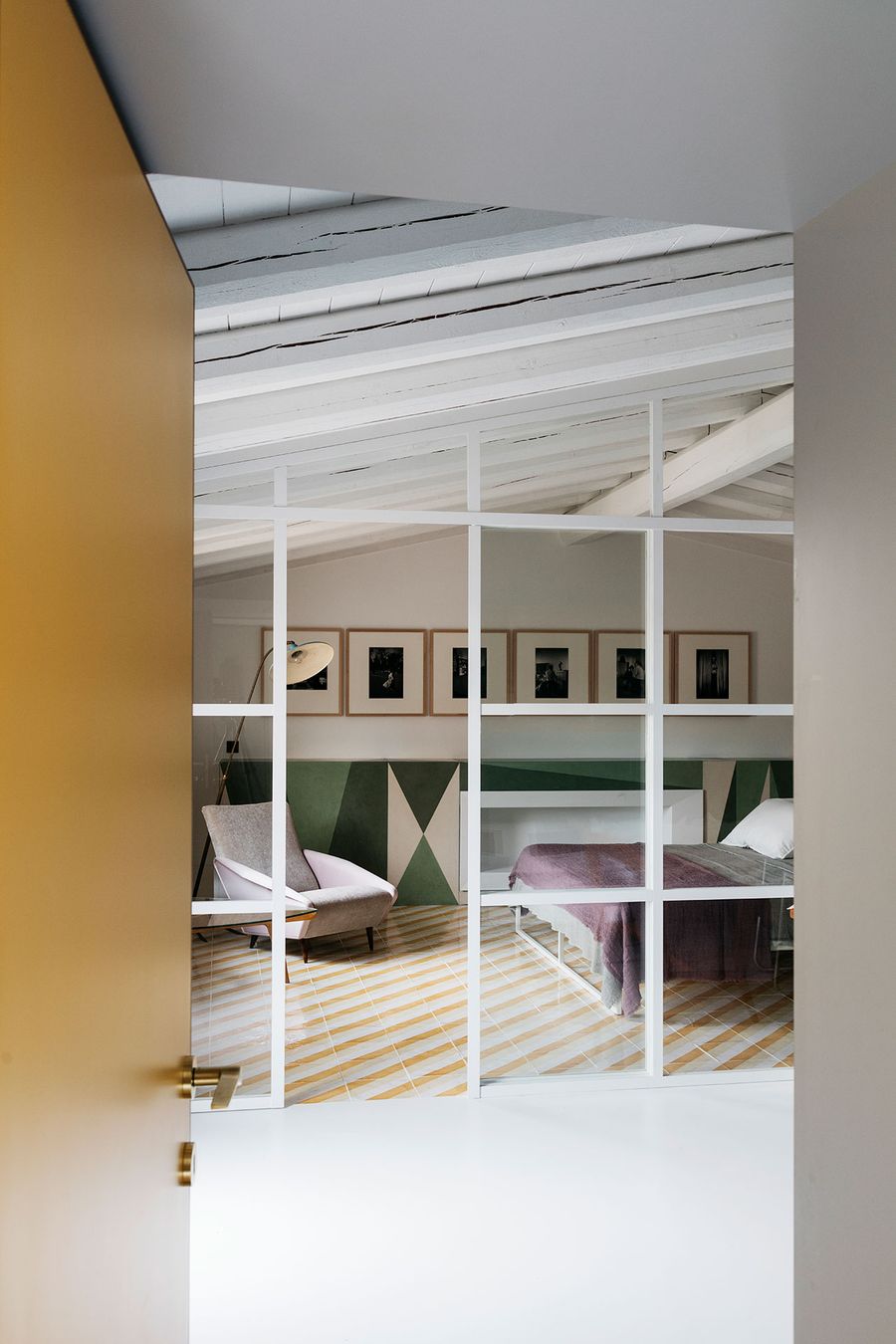
ROSSO PONTI suite. Photography by Lea Anouchinsky.
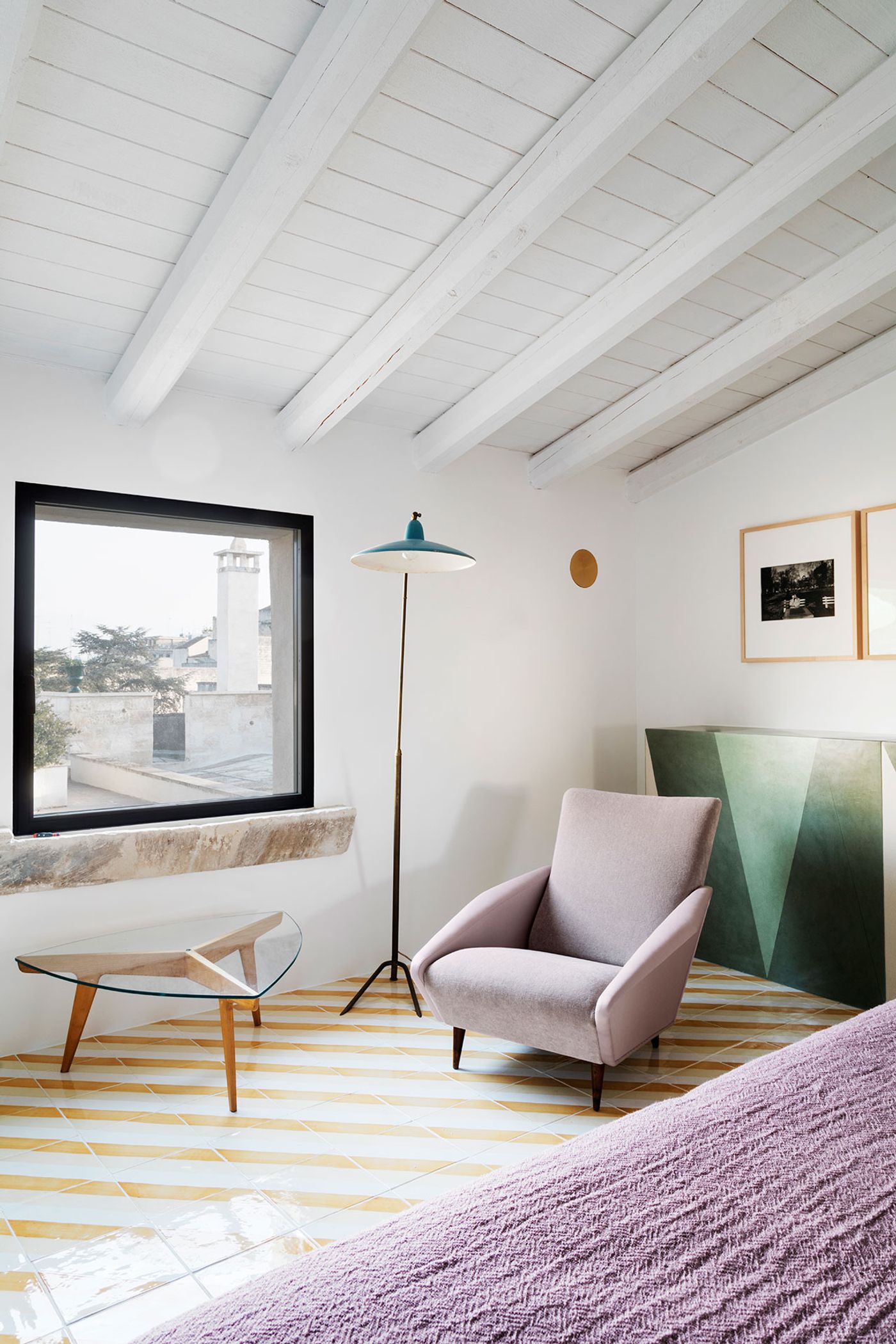
ROSSO PONTI suite. Photography by Lea Anouchinsky.

ROSSO PONTI suite. Photography by Lea Anouchinsky.
Past and present meet most evocatively in the light-filled LUCE suite, where exposed leccese stonework (a creamy-white limestone that characterise Barocco Leccese) and restored terracotta-tiled floors are juxtaposed with the brass-accentuated headboard and desk which Storage Associati custom-designed for the project, iconic modernist pieces such as Carlo Mollino’ Lutrario chairs in a punchy red, and artworks by fashion designer and artist Antonio Marras.
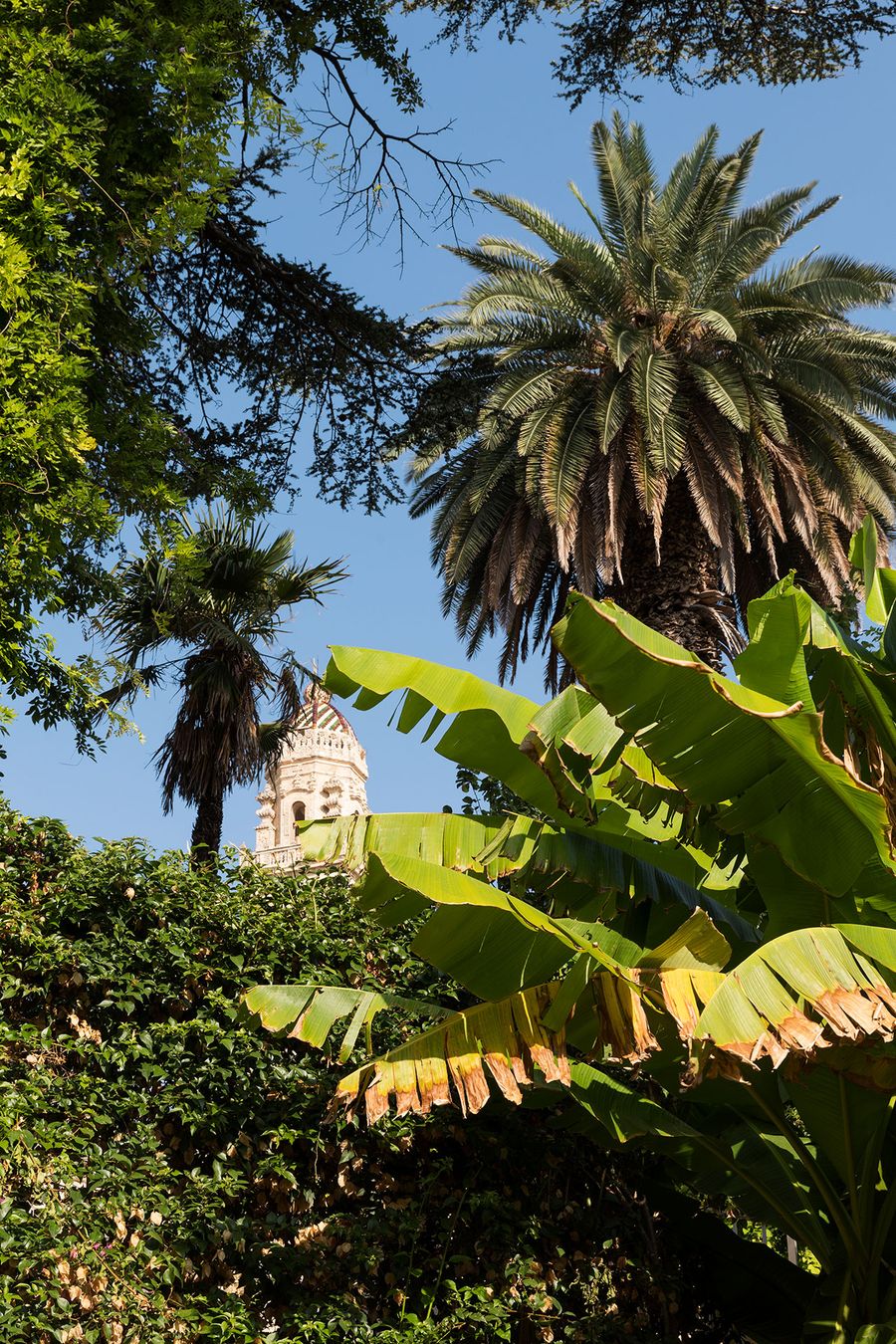
Garden. Photography by Helenio Barbetta.
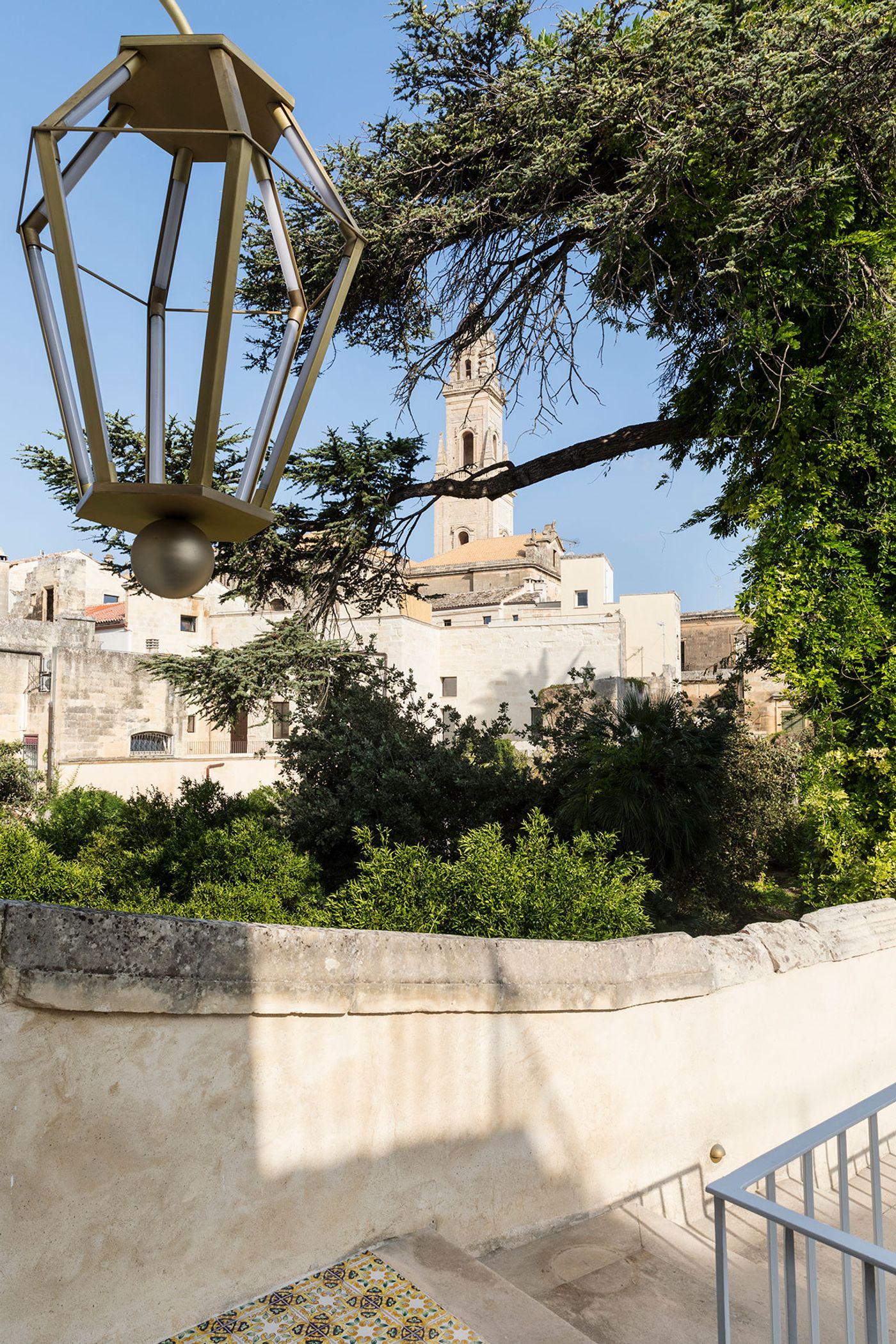
Garden. Photography by Helenio Barbetta.
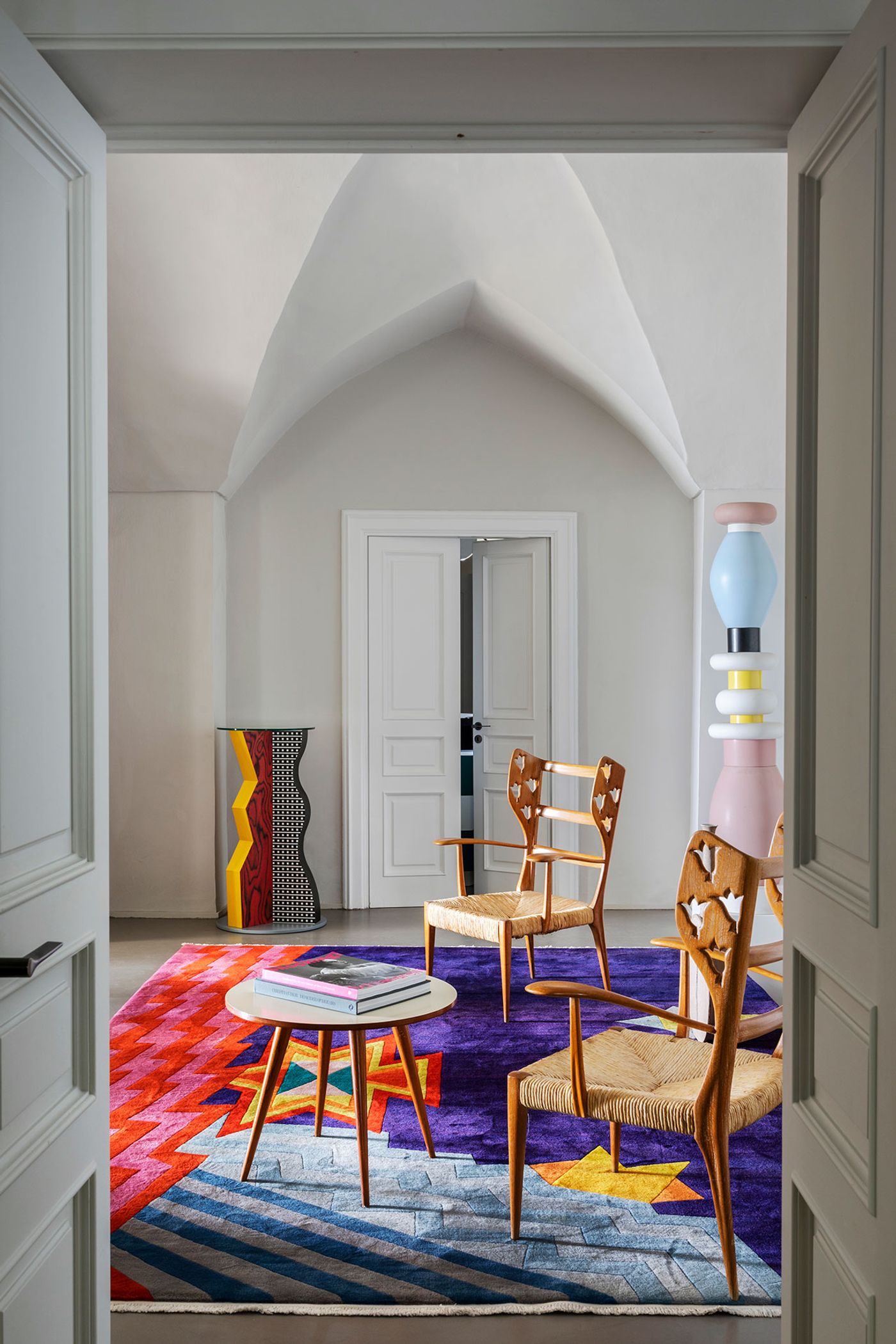
Villa Jolanda. Photography by Helenio Barbetta.
Gio Ponti is not the only designer Enselmi is passionate about; her collection also includes numerous pieces by Ettore Sottsass which are showcased in Villa Jolanda. Located in Castro Marina on the Adriatic coast, a forty-minute drive from Lecce, the renovated 19th century villa brings together selected pieces by Sottsass and the Memphis Group, including Michael Graves’s iconic Plaza vanity and Sottsass’ Totems, alongside historical and contemporary design furnishings from the likes of Pier Giulio Magistretti, Osvaldo Borsani, Campana Brothers, and Ronan & Erwan Bouroullec, creating a bold tapestry of colours and materials. Out on the terrace, guests can relax on Ico Parisi’s rocking chairs to enjoy the one pleasure that Palazzo Luce doesn’t offer, enchanting views of the sea.
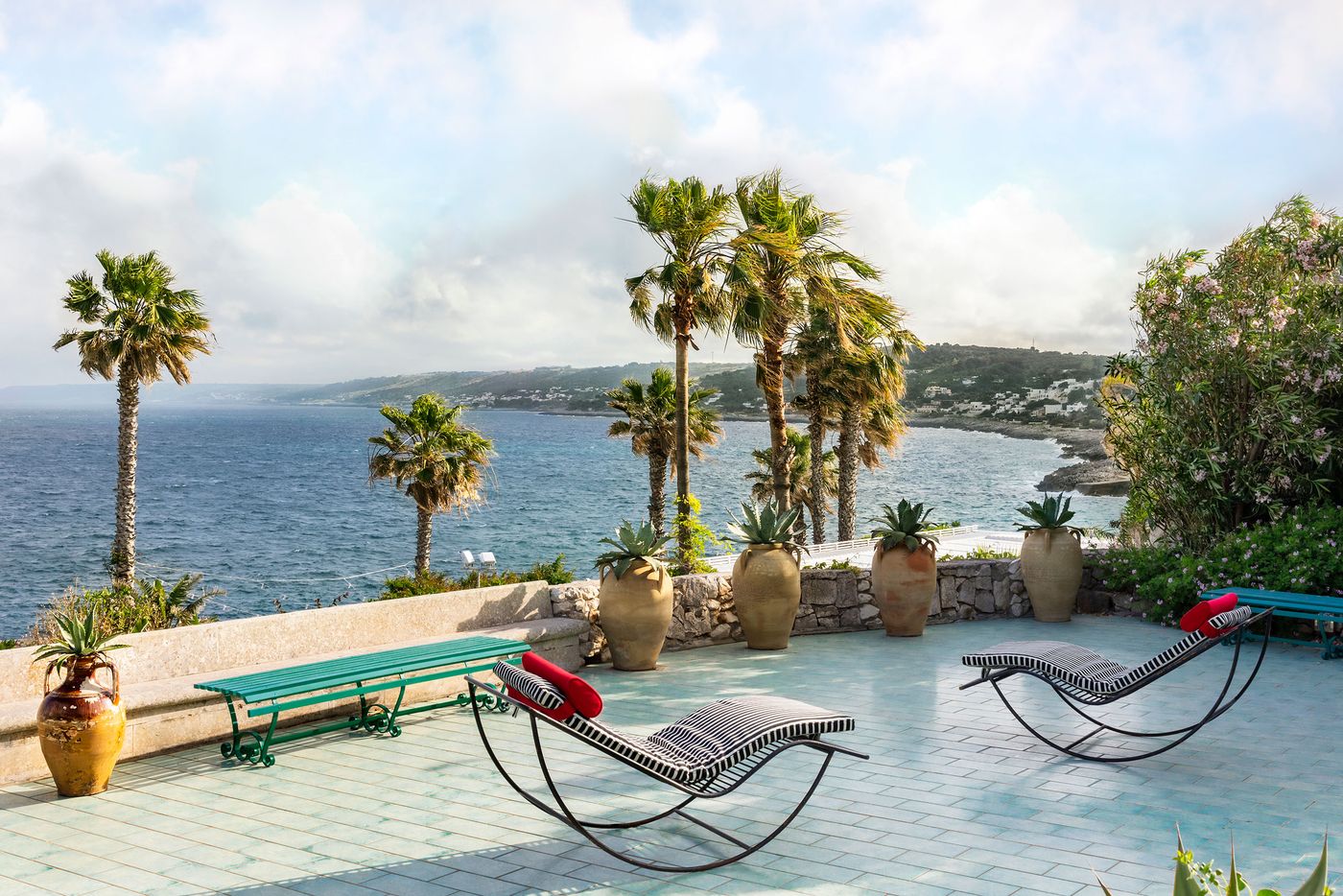
Villa Jolanda. Photography by Helenio Barbetta.
